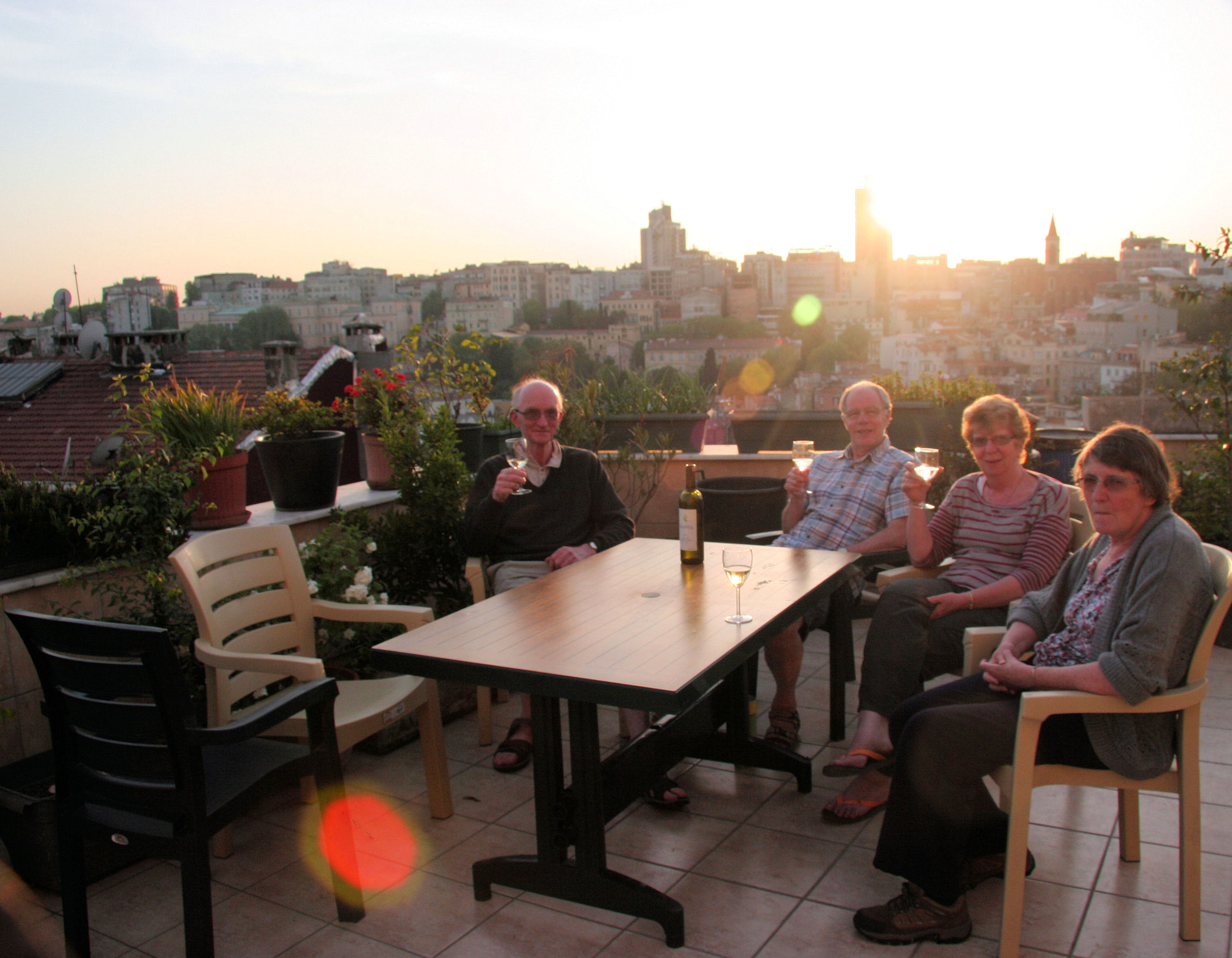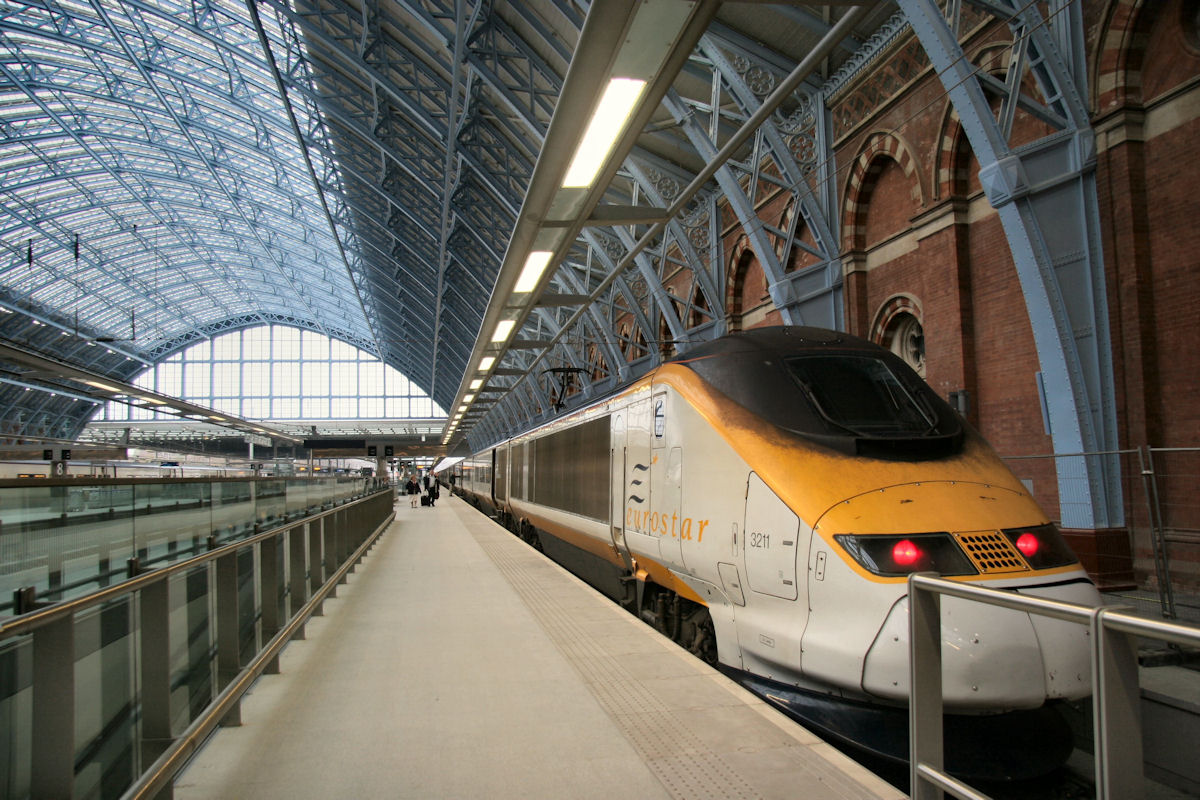
To be entirely accurate, we did not follow the original Orient Express route completely, nevertheless we succeeded in getting to Istanbul from London, almost all by train. Setting an early precedent for Michael Portillo to follow, our party began the journey at St Pancras on the Eurostar to Paris. In our party there was myself, Long Suffering Wife, a Fellow Worker with whom I shared some hard times and his Charming and Extremely Sensible Wife. What follows tells the story of our journey, mainly in pictures and with some descriptive detail. Come with us!
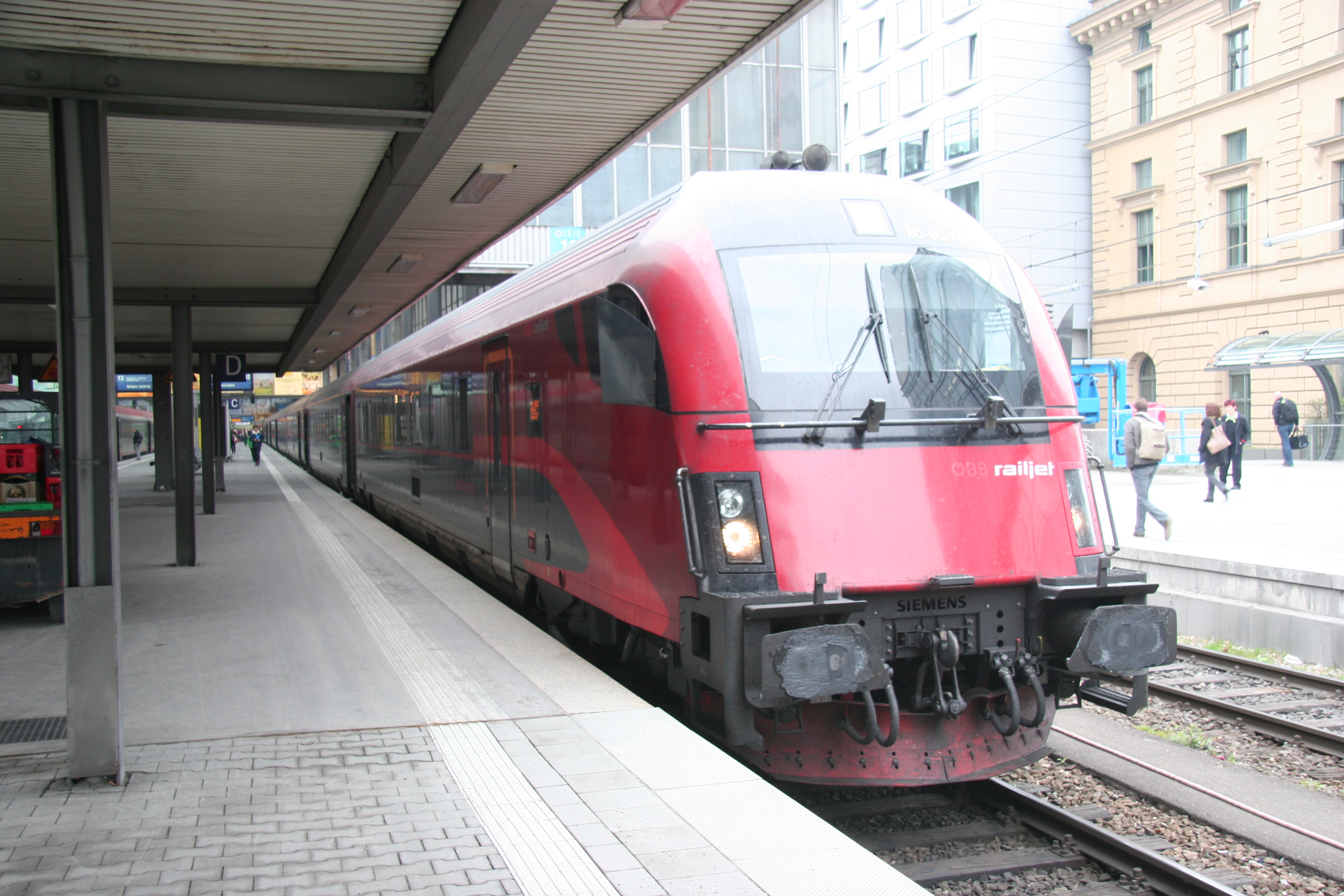
From Gare du Nord it is a short walk downhill to Gare de L'Est - probably the scruffiest of Parisian terminals - from where we took the overnight sleeper to Munich. There is a fast comfortable, through service from there to Budapest by "Railjet" taking eight hours or so. I persuaded FW - never keen to spend £132 when £129 would do - he bears some similarity to my mother-in-law who would resolutely walk a couple of miles down town because cauliflowers were 2d cheaper - that it was worth booking first class on this leg. As an added bonus this granted us access to the first class lounge on Munich station where we joined business men being served complimentary breakfasts.
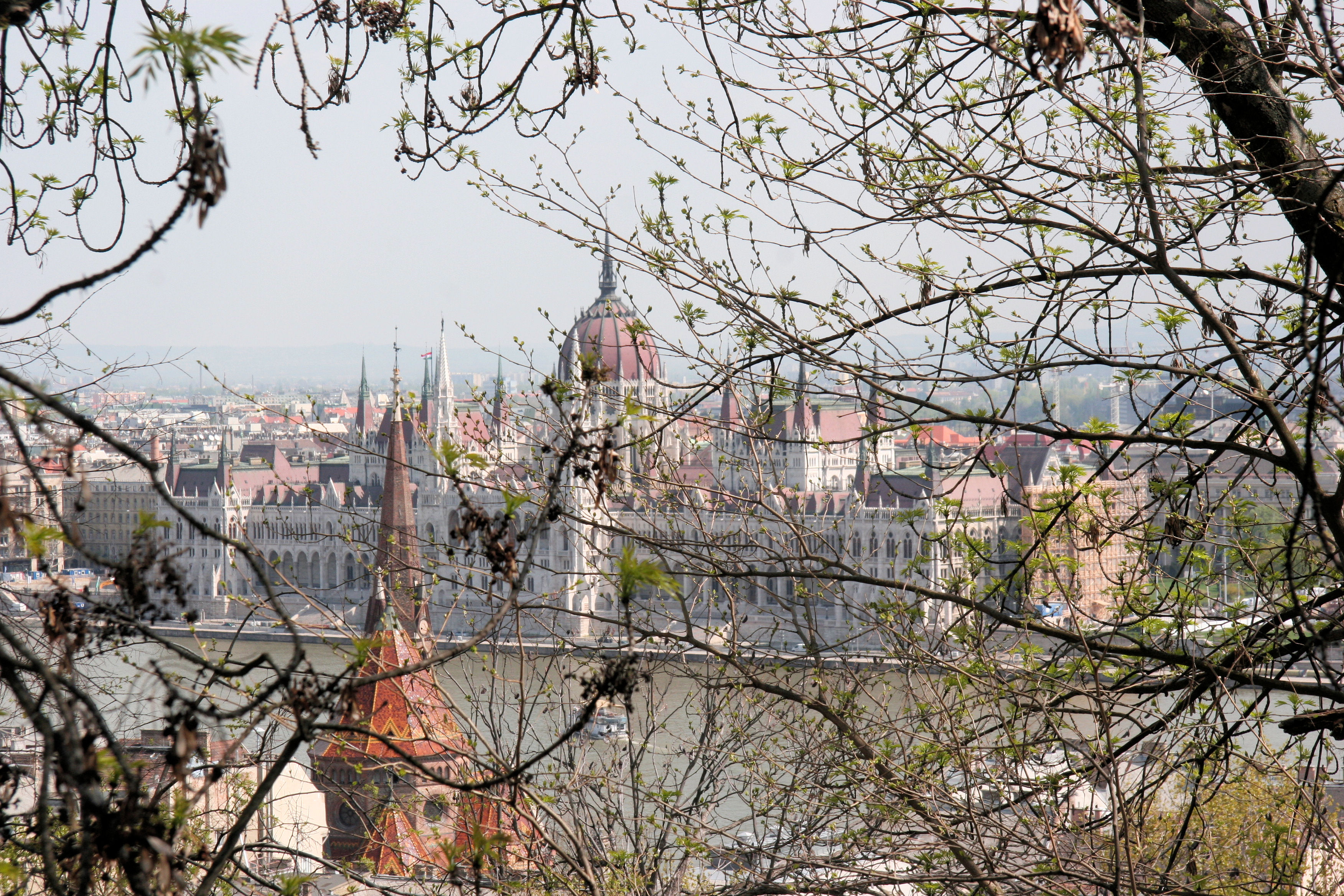
LSW and I have visited Budapest before but only briefly, on a crystal clear winter's day fifteen years ago. Budapest is is a beautiful city and we were keen to revisit, in balmier weather, some of the sites we had enjoyed the last time. This is a view, from the Buda side of the river, showing the Gothic splendour of the Hungarian Parliament building: now perhaps not such a haven of democracy as it was then.
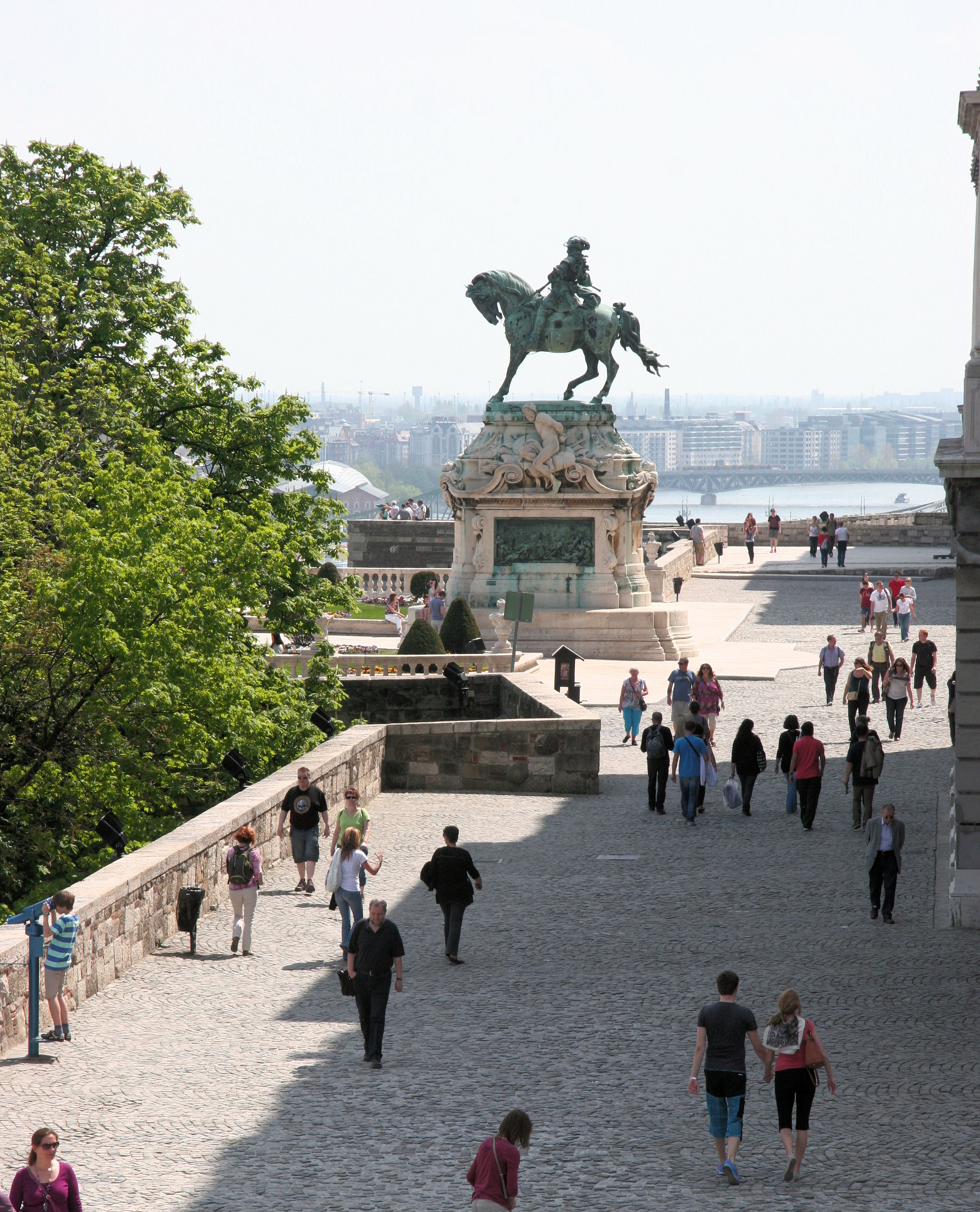
This is the terrace in front of the castle affording fine views across the Danube.
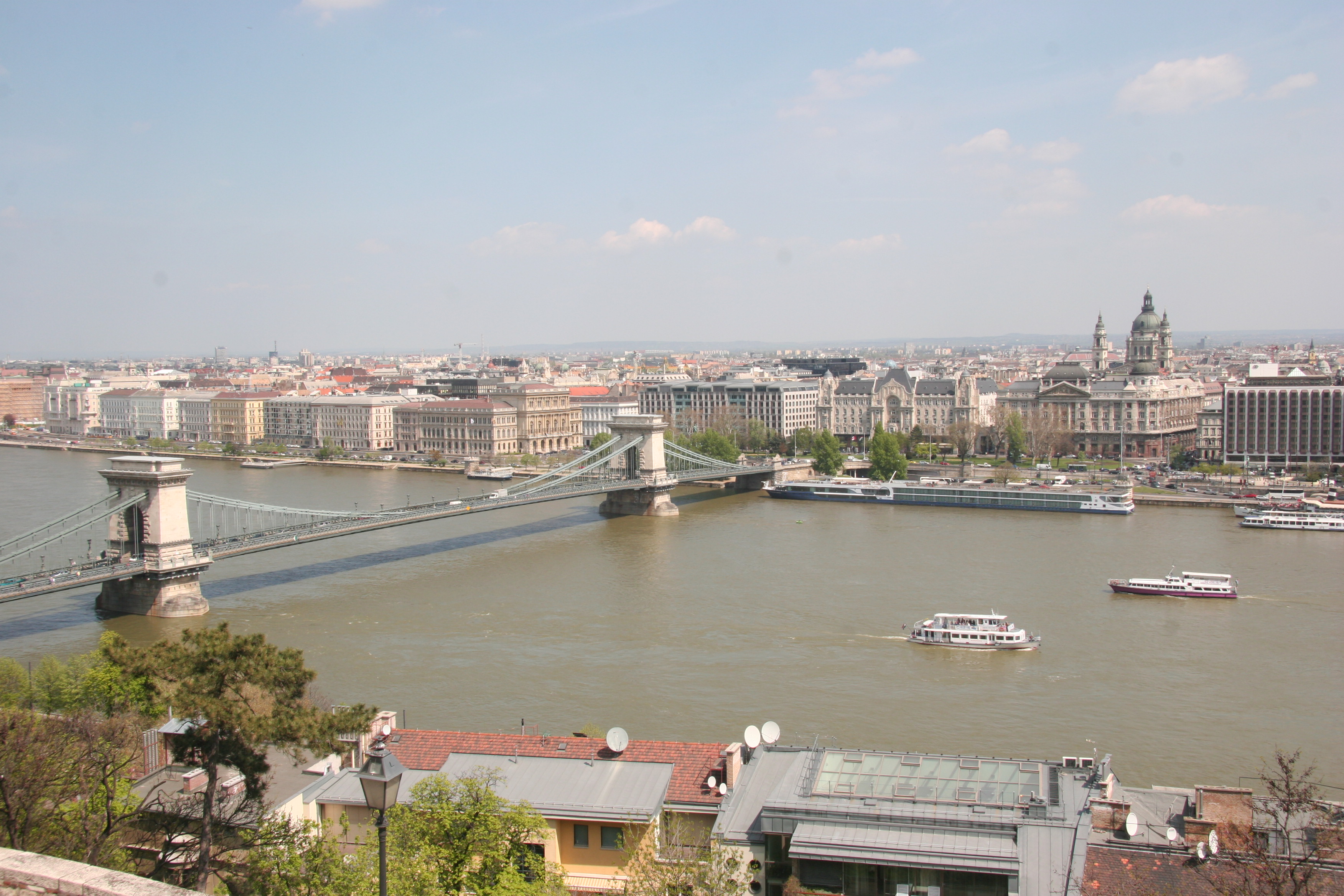
This is the attractive Chain Bridge (Szechenyi Lanchid) - the most people friendly way of crossing the river on foot.
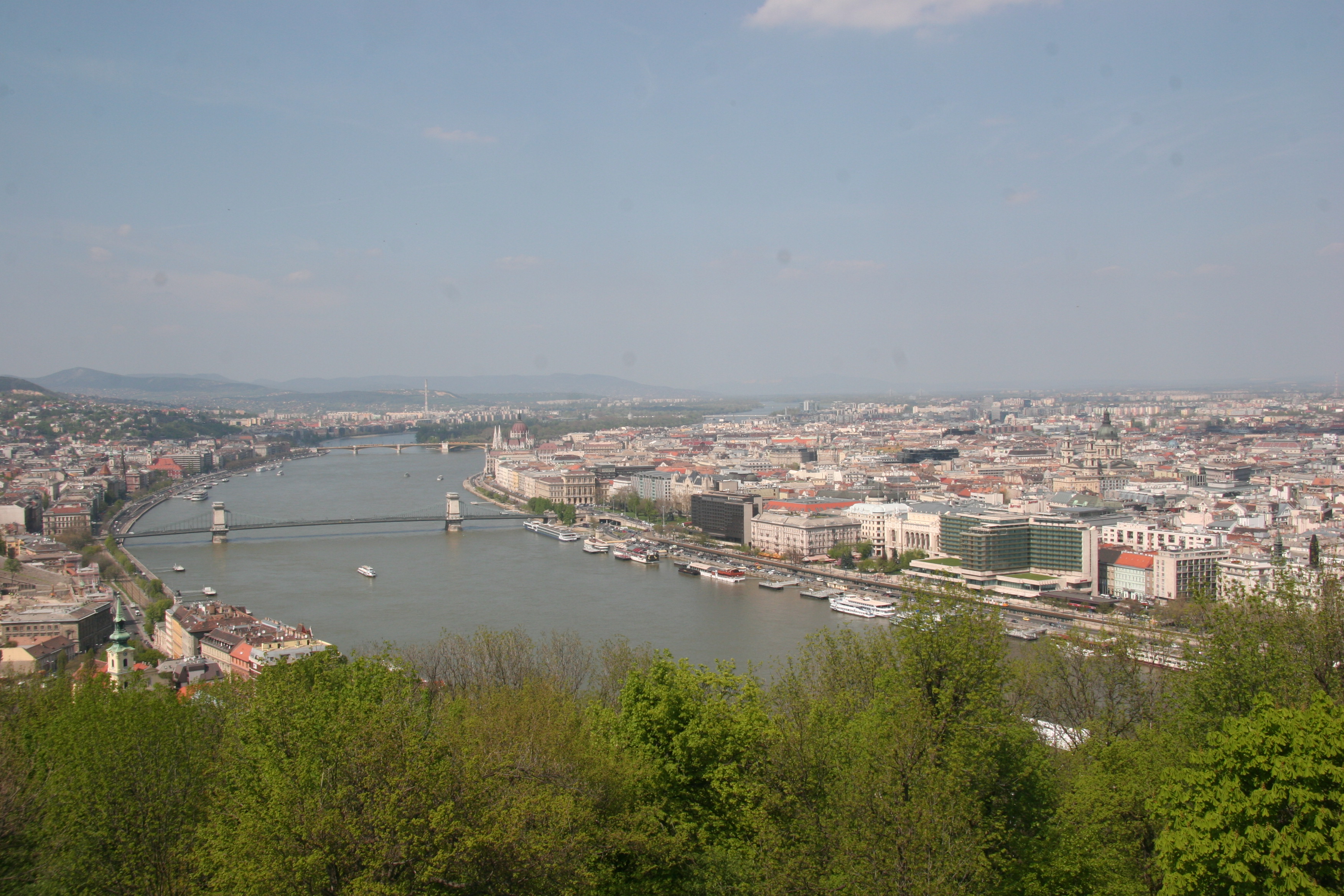
For the best views of Budapest, we walk a little way south of Castle Hill, through extensive medieval fortifications to the 235m Gellert Hill. At the top is The Citadel, a white stone fortification and much information regarding the history of the site from the bronze age to the present. Well worth the effort!
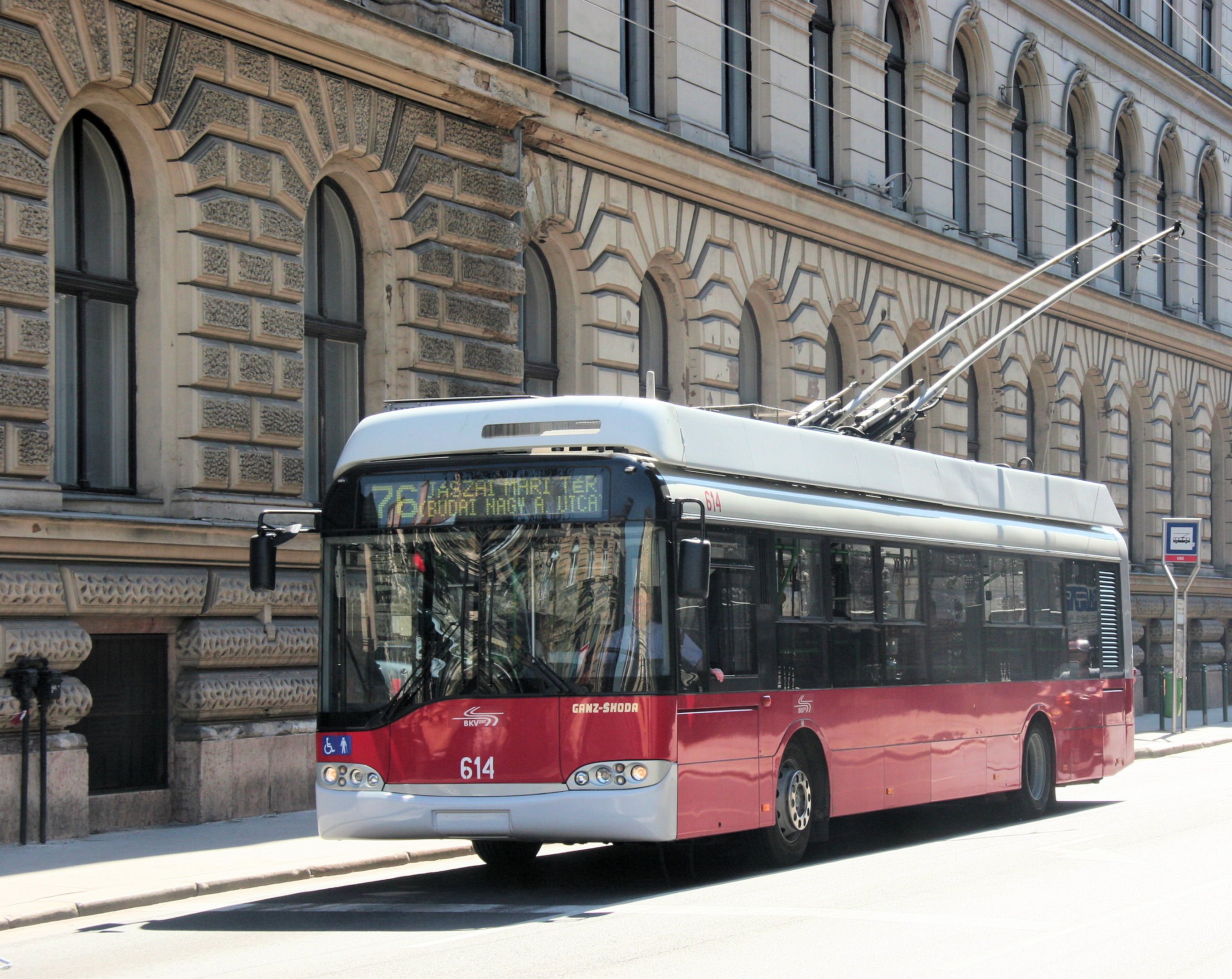
I was very much taken by the discovery that Budapest has trolley buses. It took me back to my early years in Doncaster, when it was just a town and the council ran the public transport system. In those days a fleet of double decker trolley buses painted a dark maroon, reached most parts of the town frequently and cheaply from about 6am to 11pm. There was a bus every three minutes to Balby for a fare of two and a half old pence and even lowly Hexthorpe was connected every ten minutes. (sigh!)
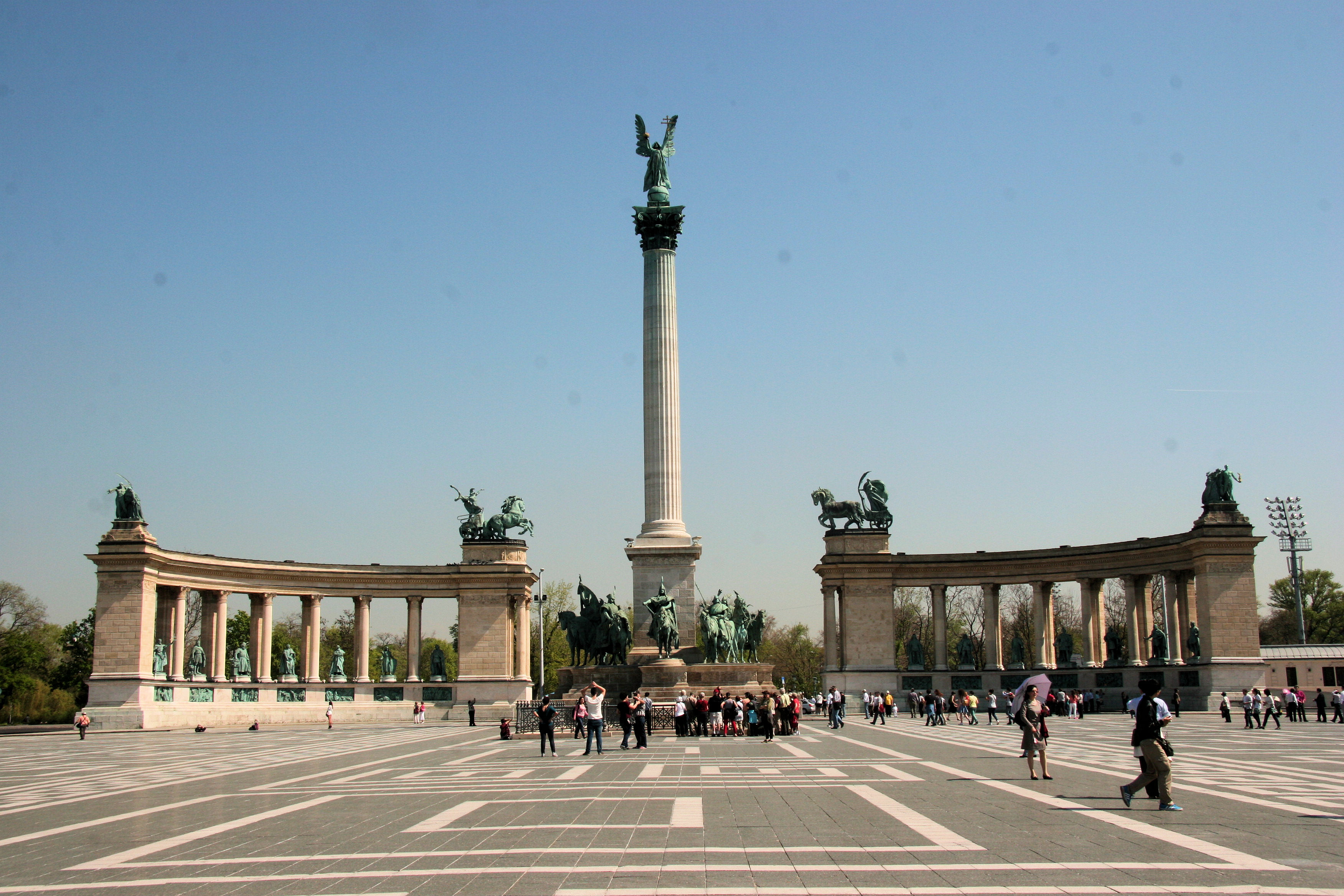
Elsewhere in Pest is the much visited Heroes' Square with its impressive monuments celebrating Hungarian history. It was perhaps a little over the top to my taste...
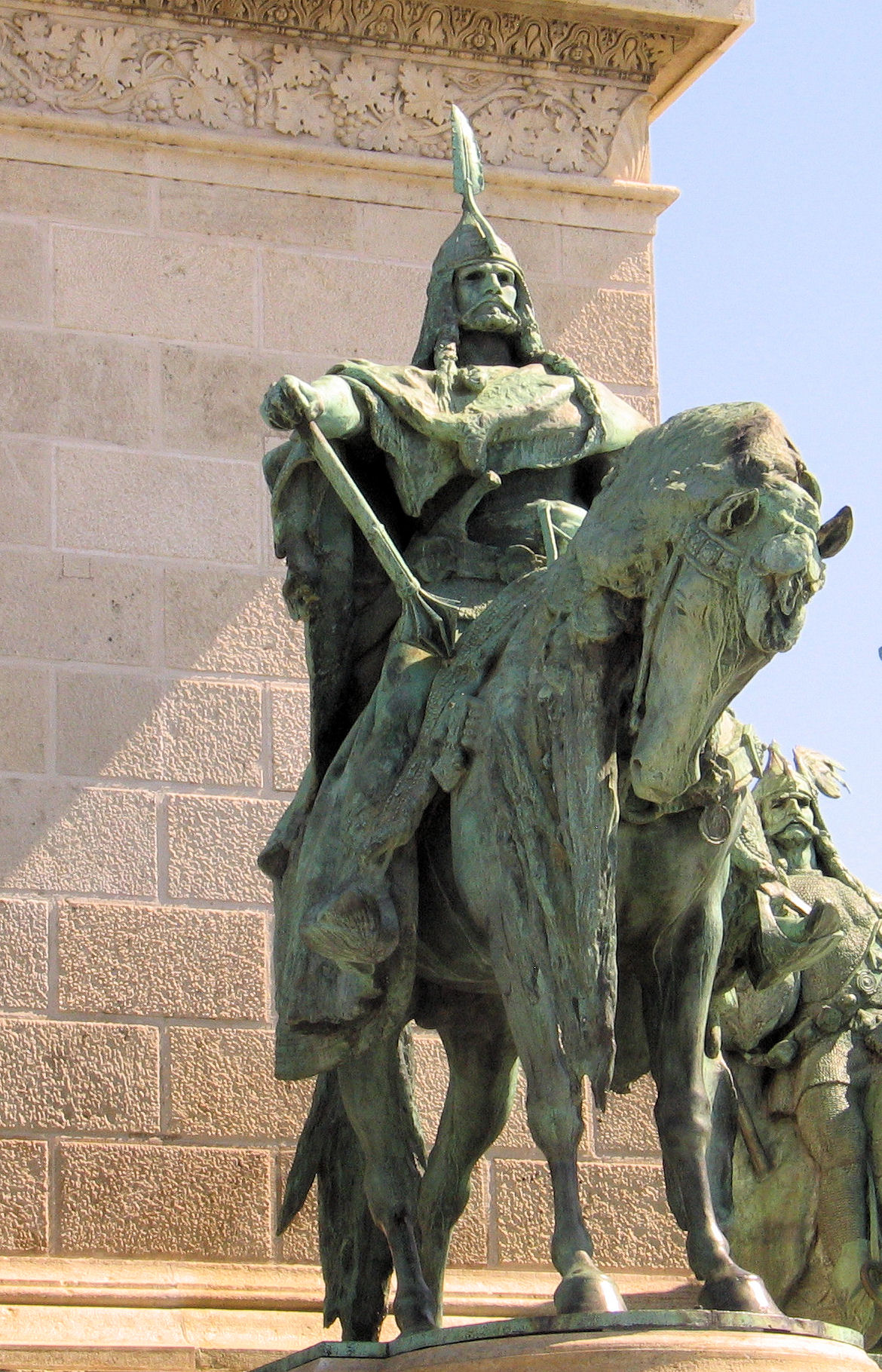
...but then, I am not a Magyar. It was certainly a very pleasant walk up Andrassy Avenue and through the nearby City Park. The original plan had been to take a bathe in the famous Budapest Spa.
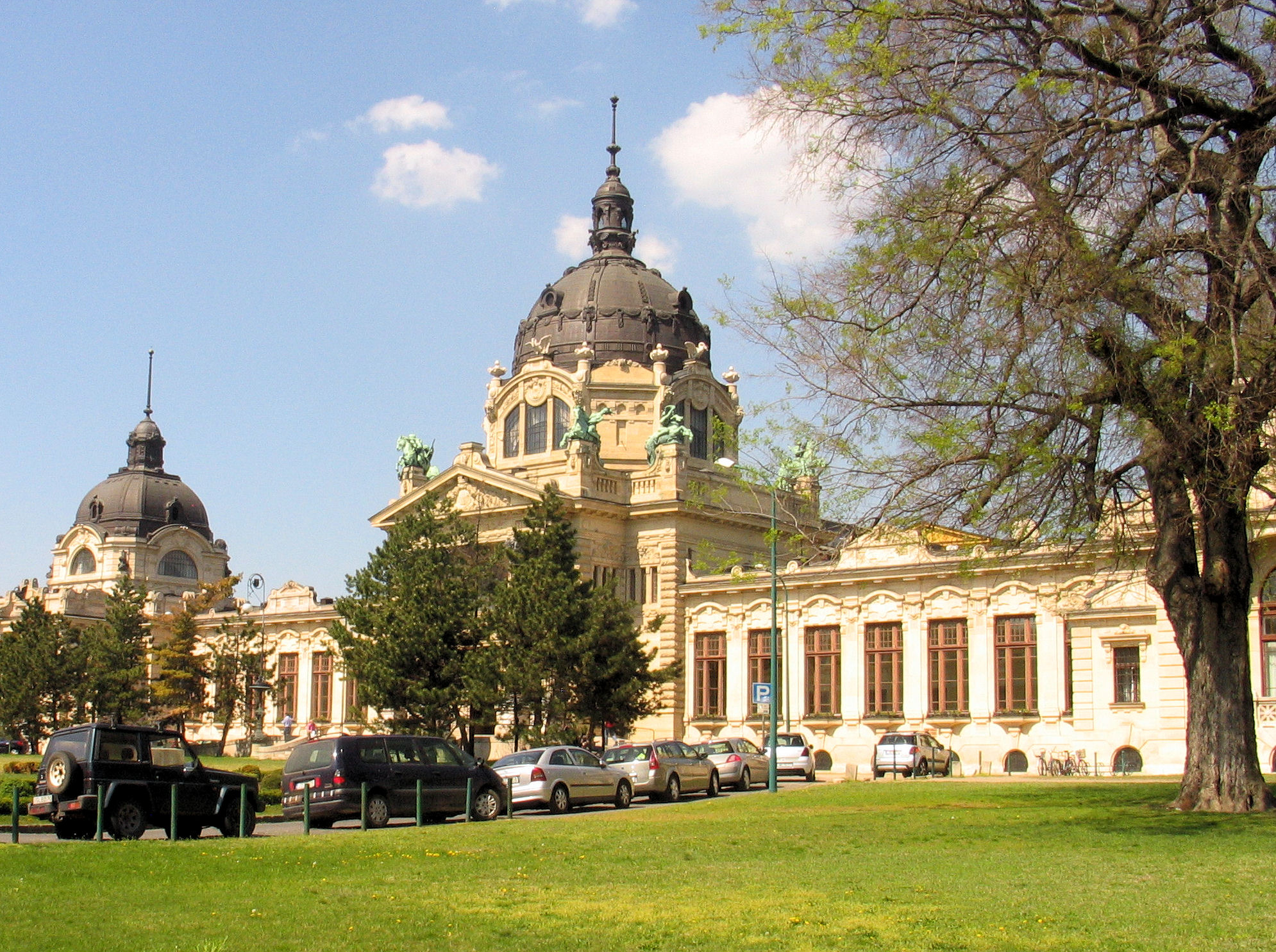
This was a flawed plan owing to a complete lack of swimming wear....
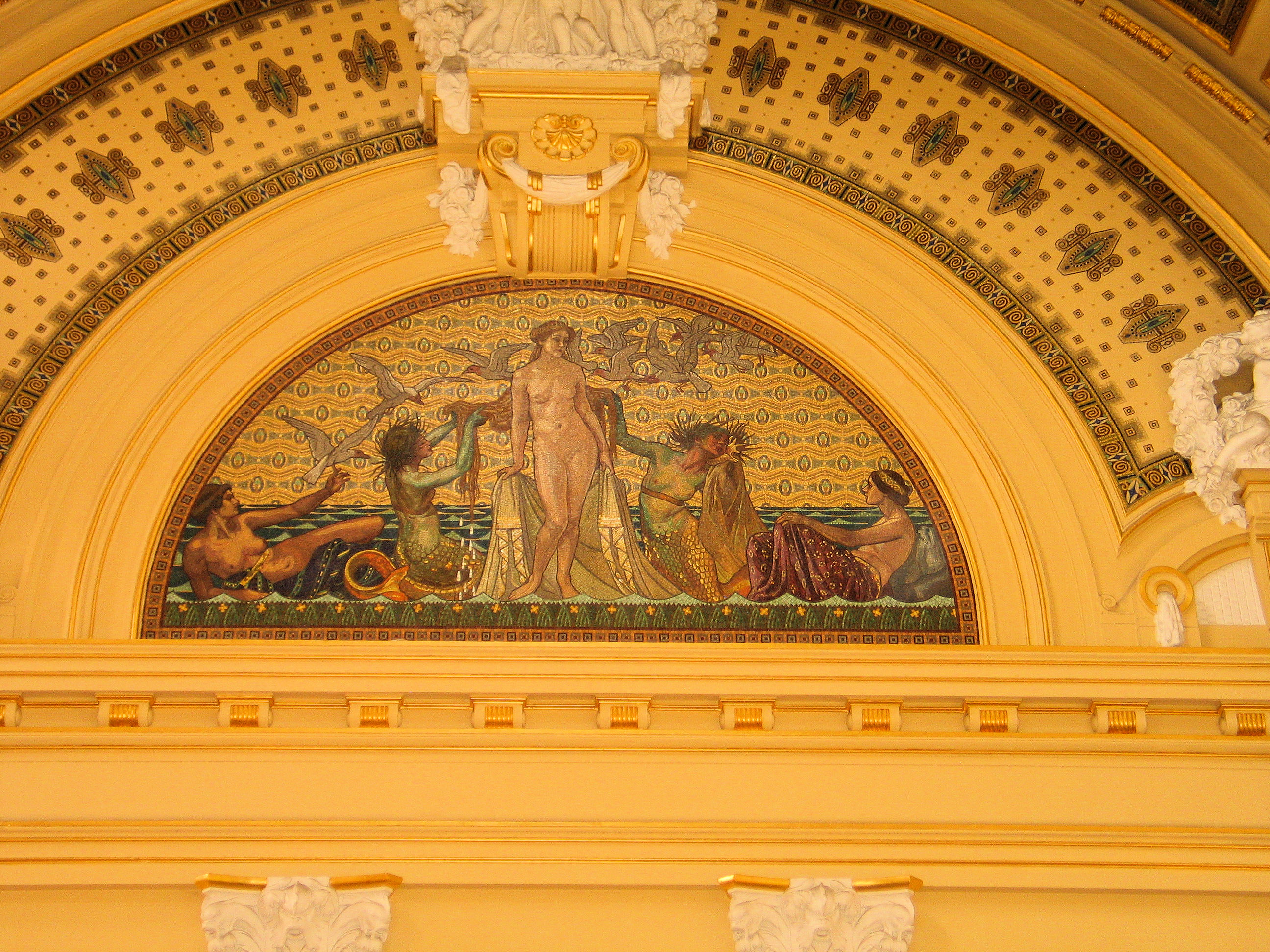
...though, judging by some of the interior decor, this need not necessarily have been a problem.
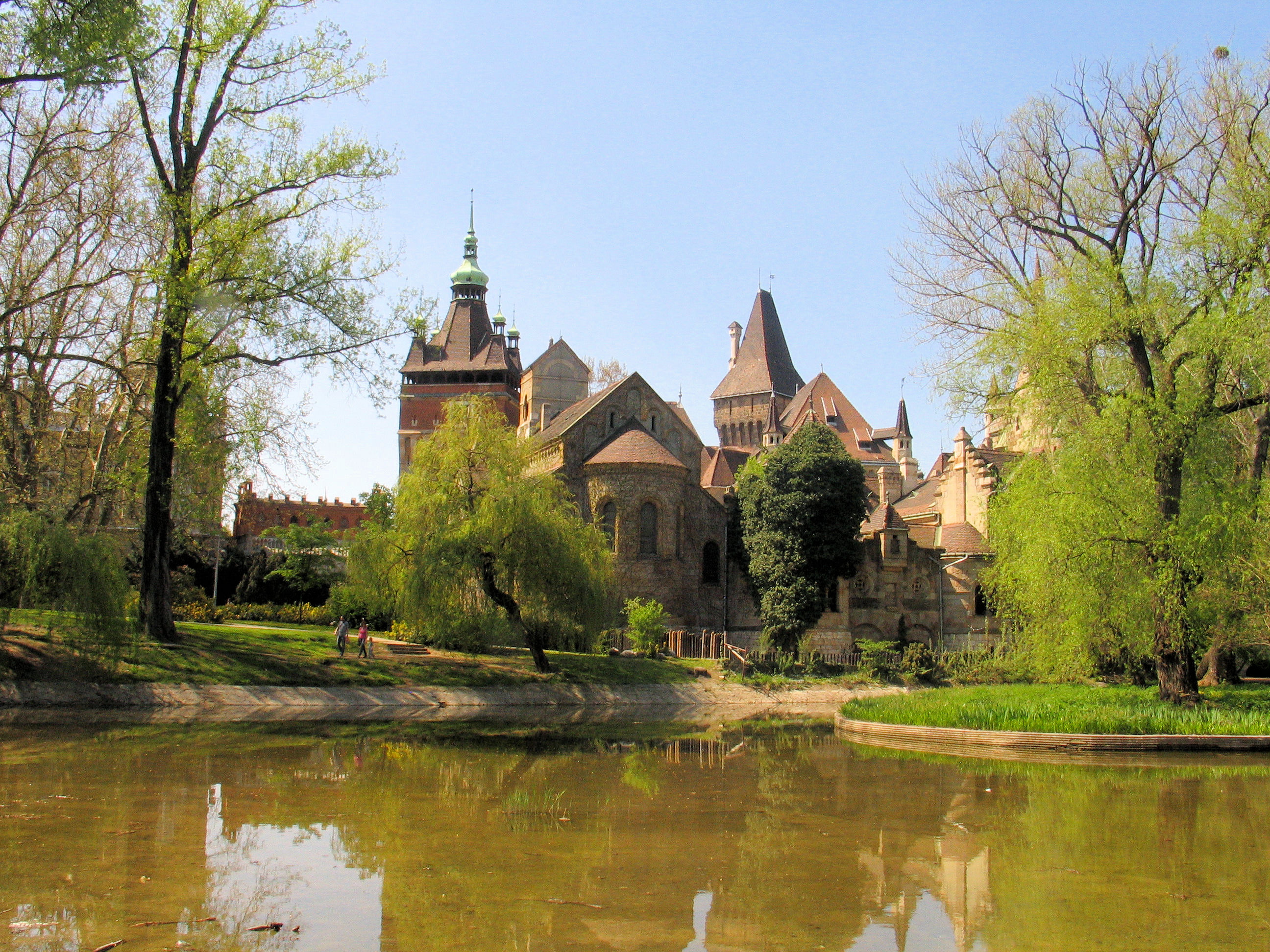
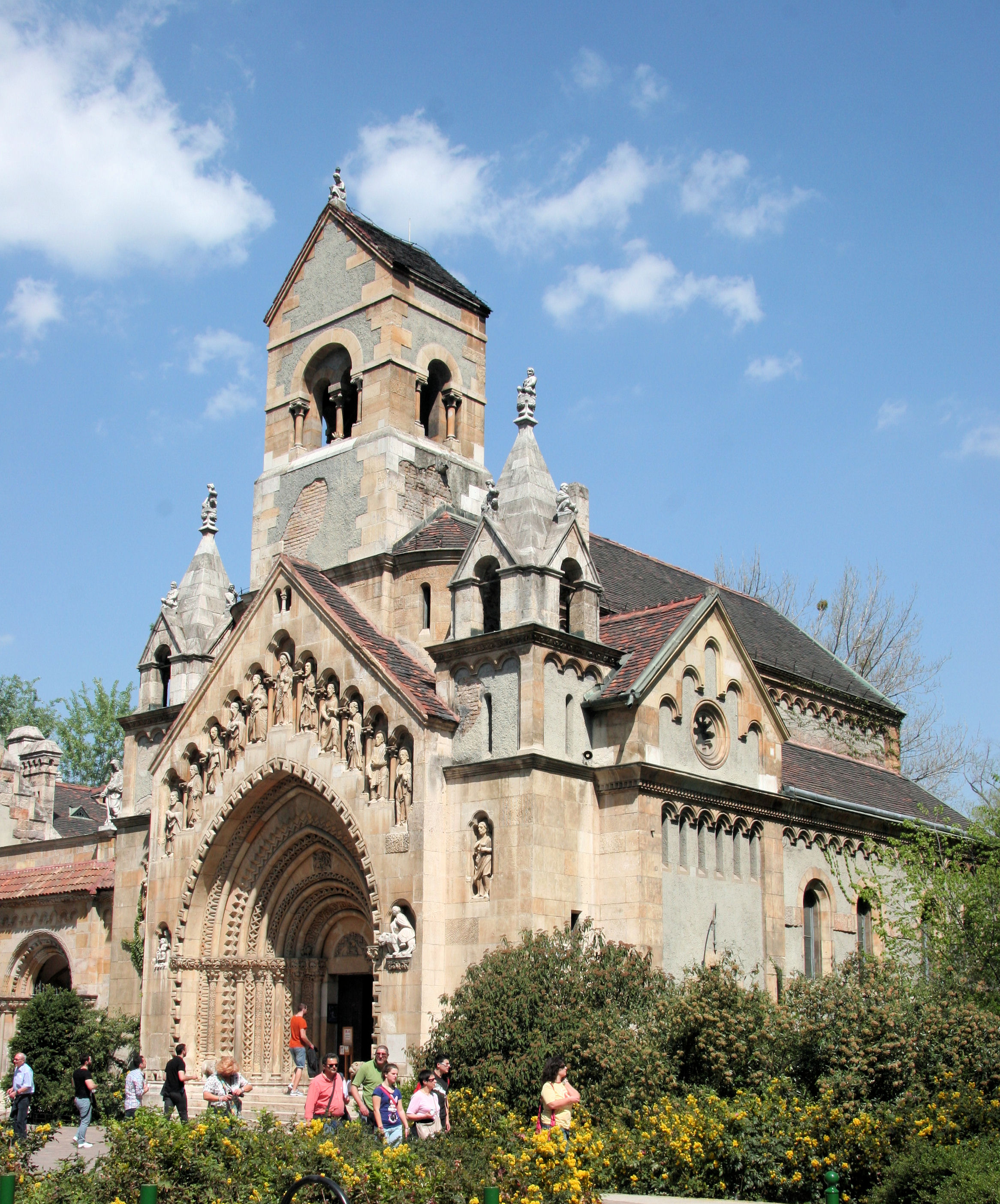
In the vicinity of the City Park is a really lovely Romanesque Church
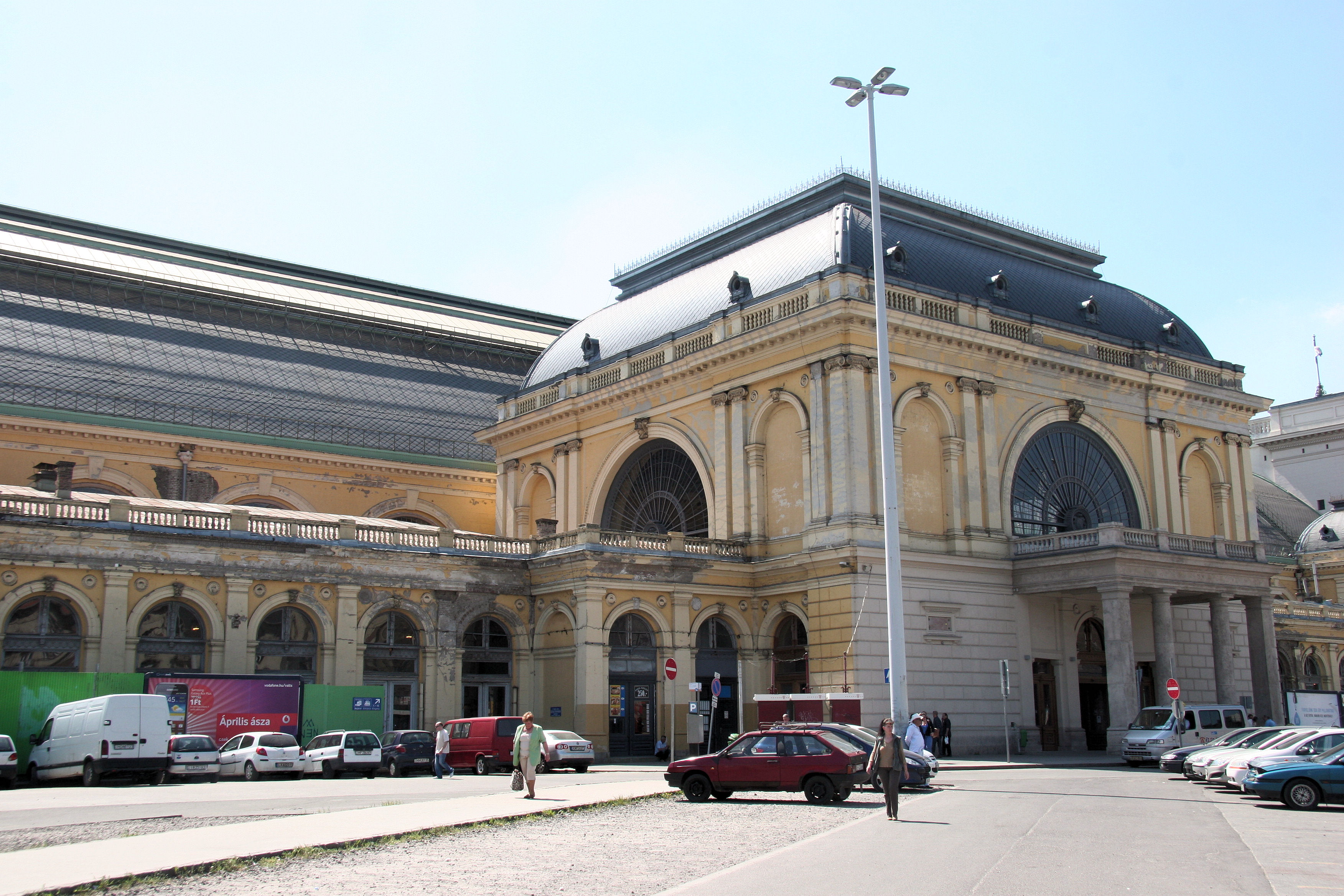
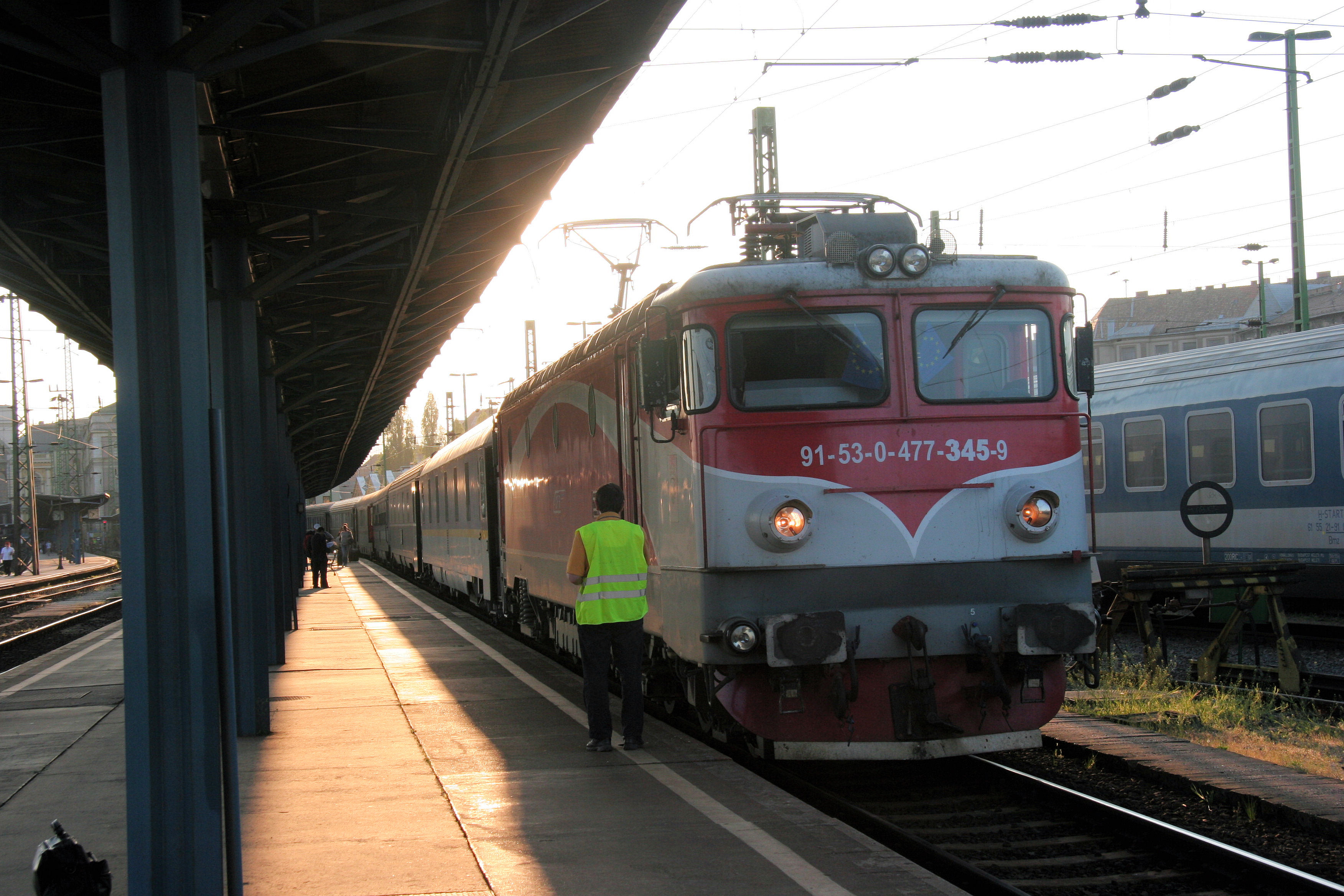
After a most enjoyable stay in Budapest we made our way back to the impressive Keleti station and took the overnight sleeper to Bucharest. A lot of international sleepers have shed their restaurant cars, but this train still carries one.
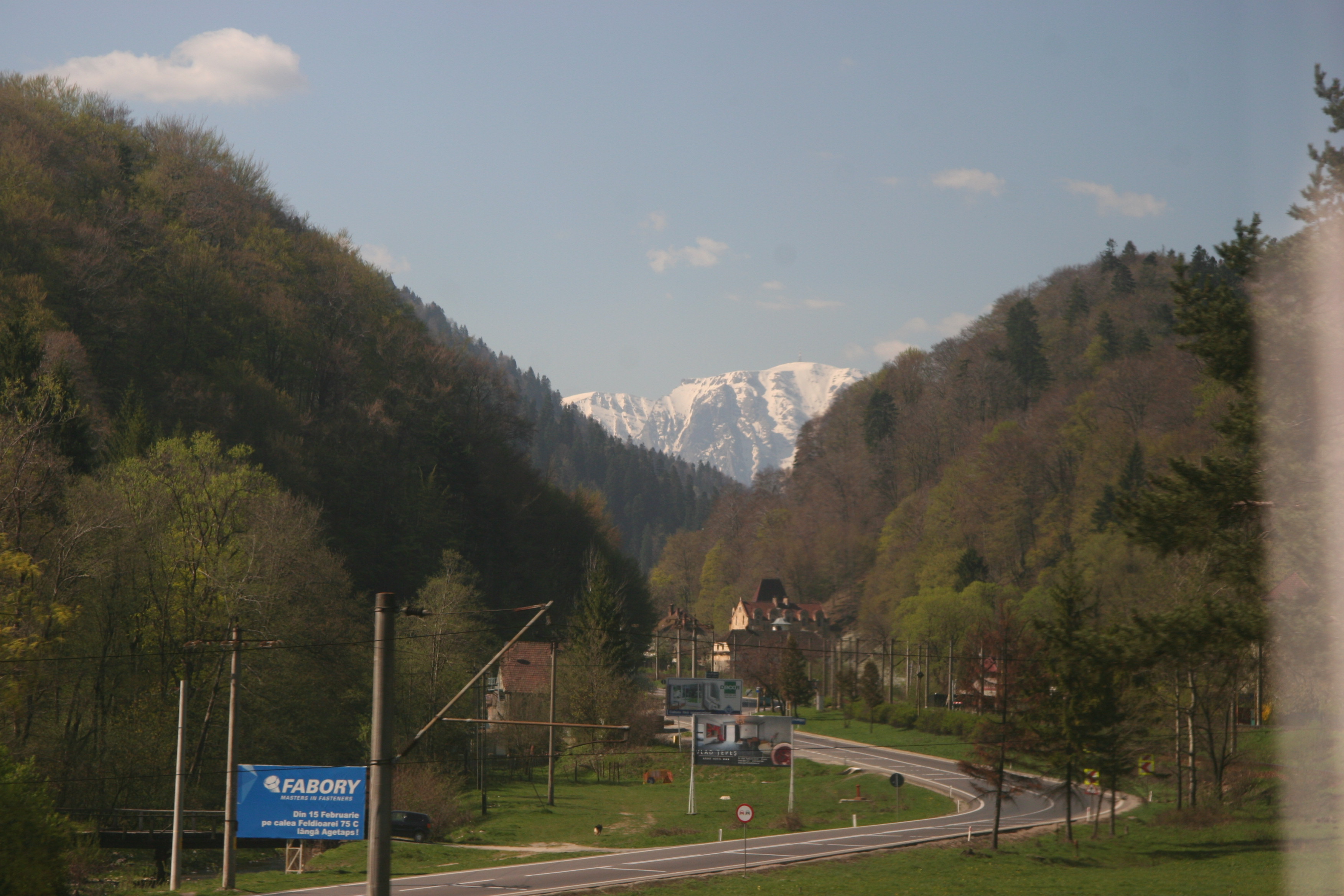
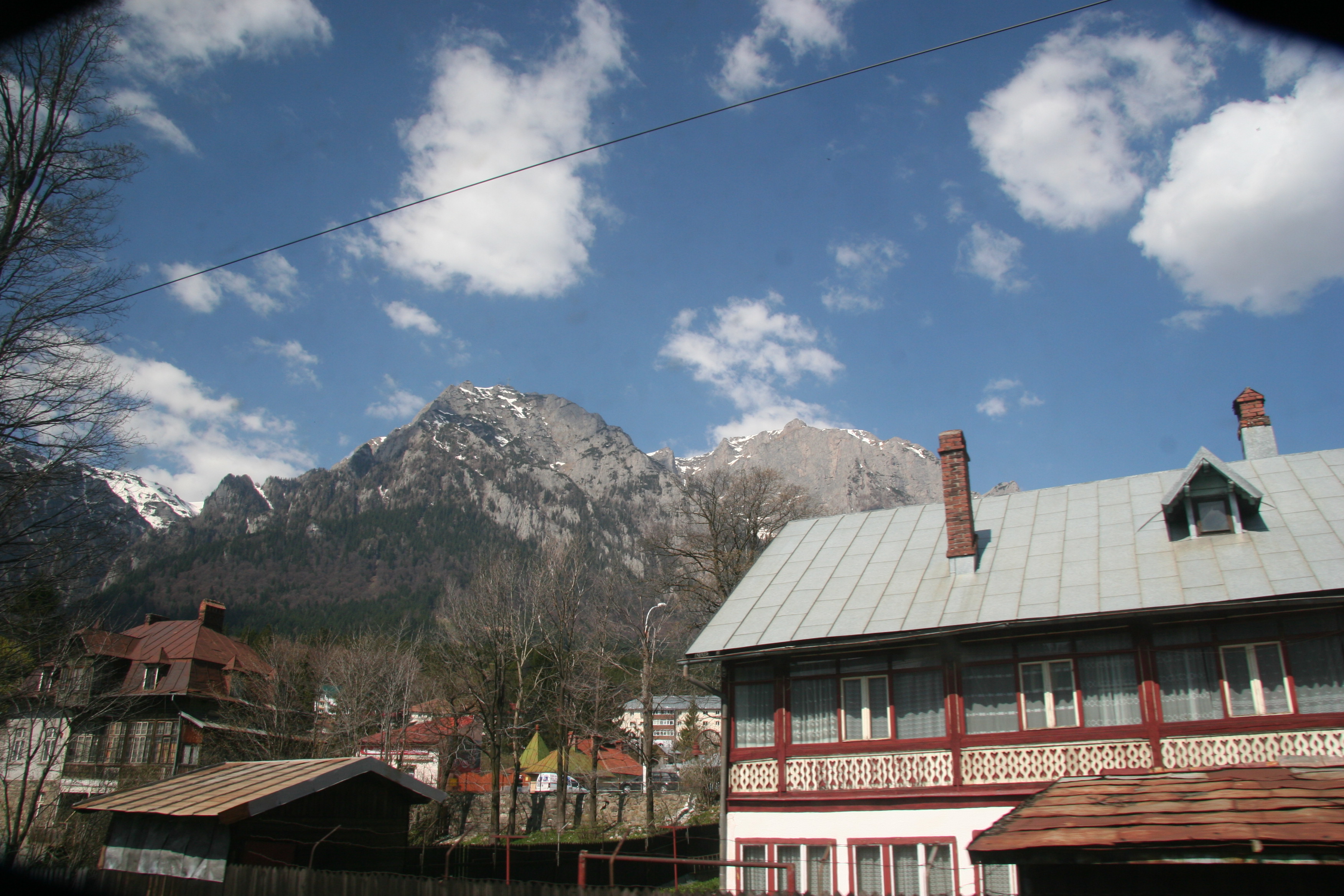
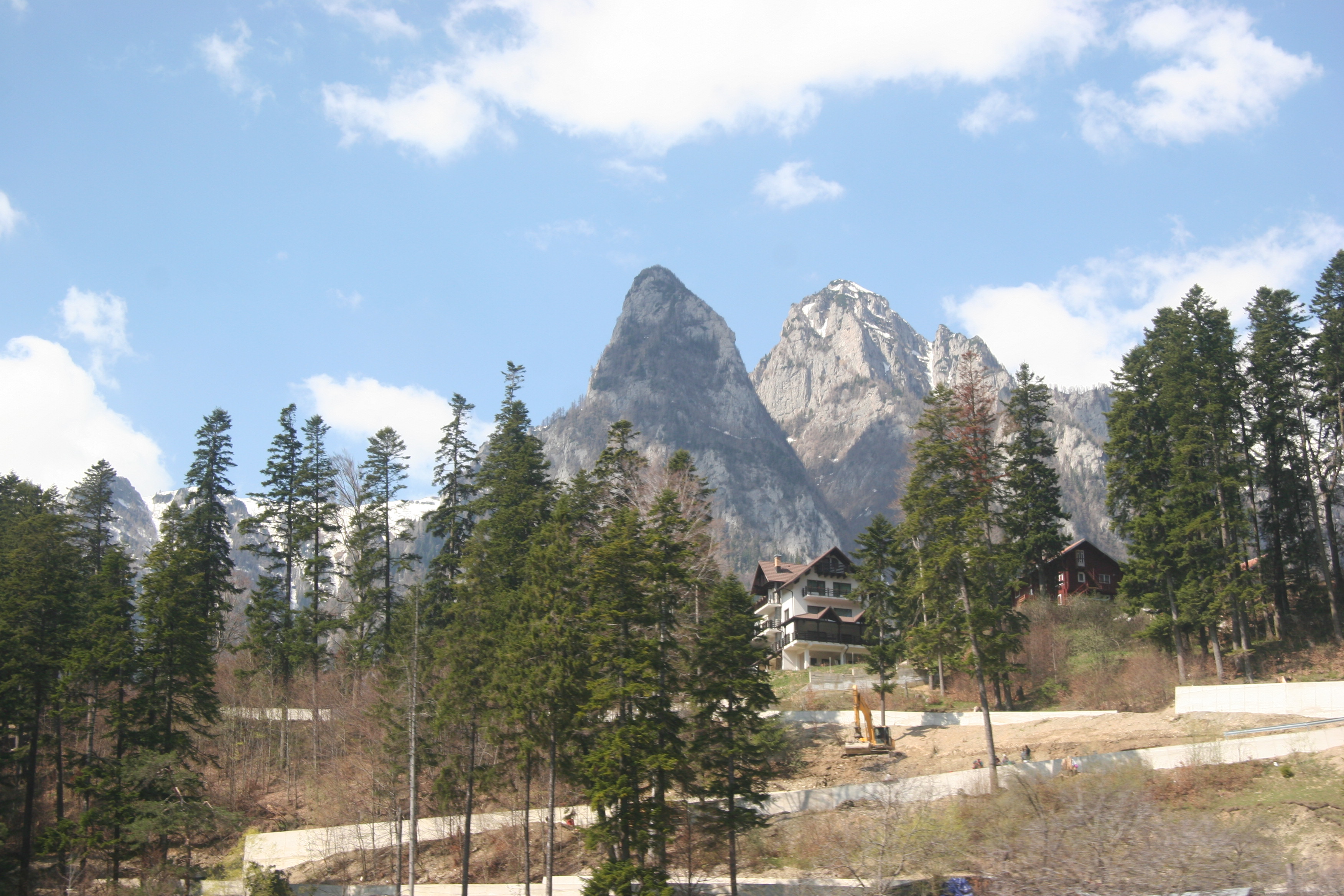
It was very pleasant to sit together to have breakfast the next morning while, outside the restaurant car window, snow capped mountains were passing by. These were a western spur of the Carpathians between Brasov and Bucharest.
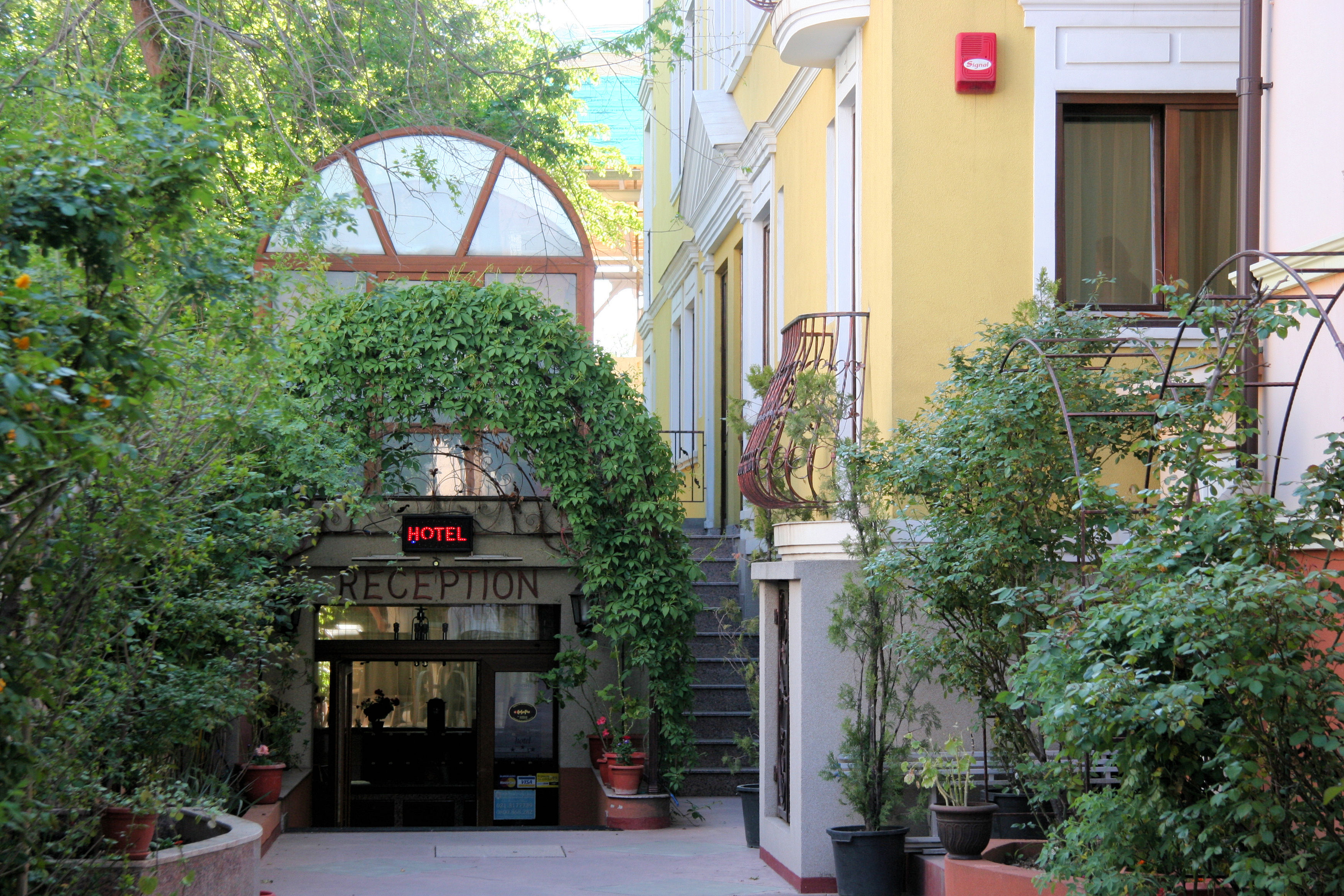
C&ESW had found us a really nice small hotel. There seemed to be, probably government inspired, a drive to improve the service to tourists and increase their numbers. There were experienced staff mentoring young trainees in the hotel and in a restaurant we used. Everyone was trying very hard and going the extra mile for us and of course we enjoyed the attention.
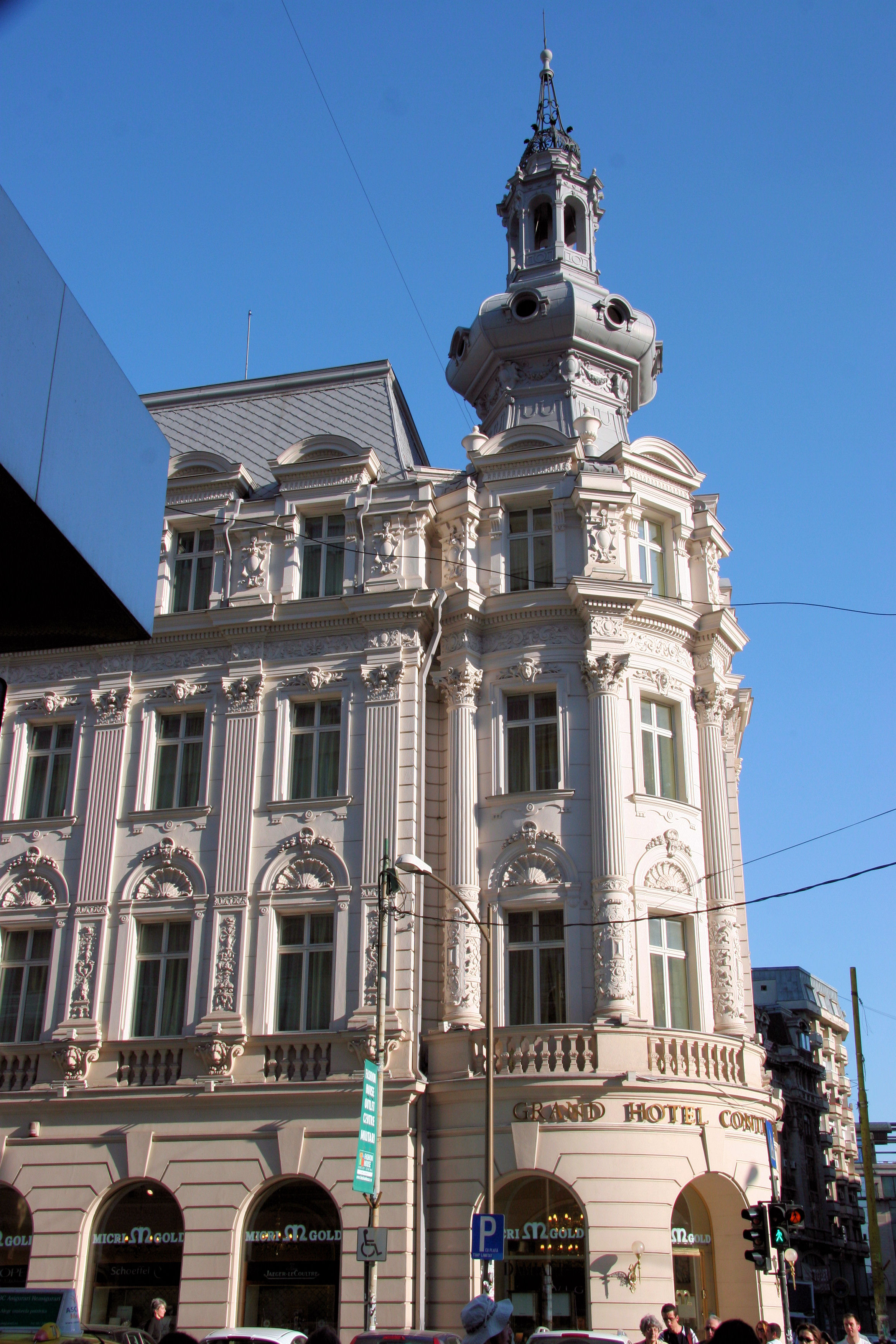
I think we all liked Bucharest, but at the same time it was a bit weird. The city centre was like any other with some handsome buildings. Elsewhere there were the after effects of some difficult recent history.
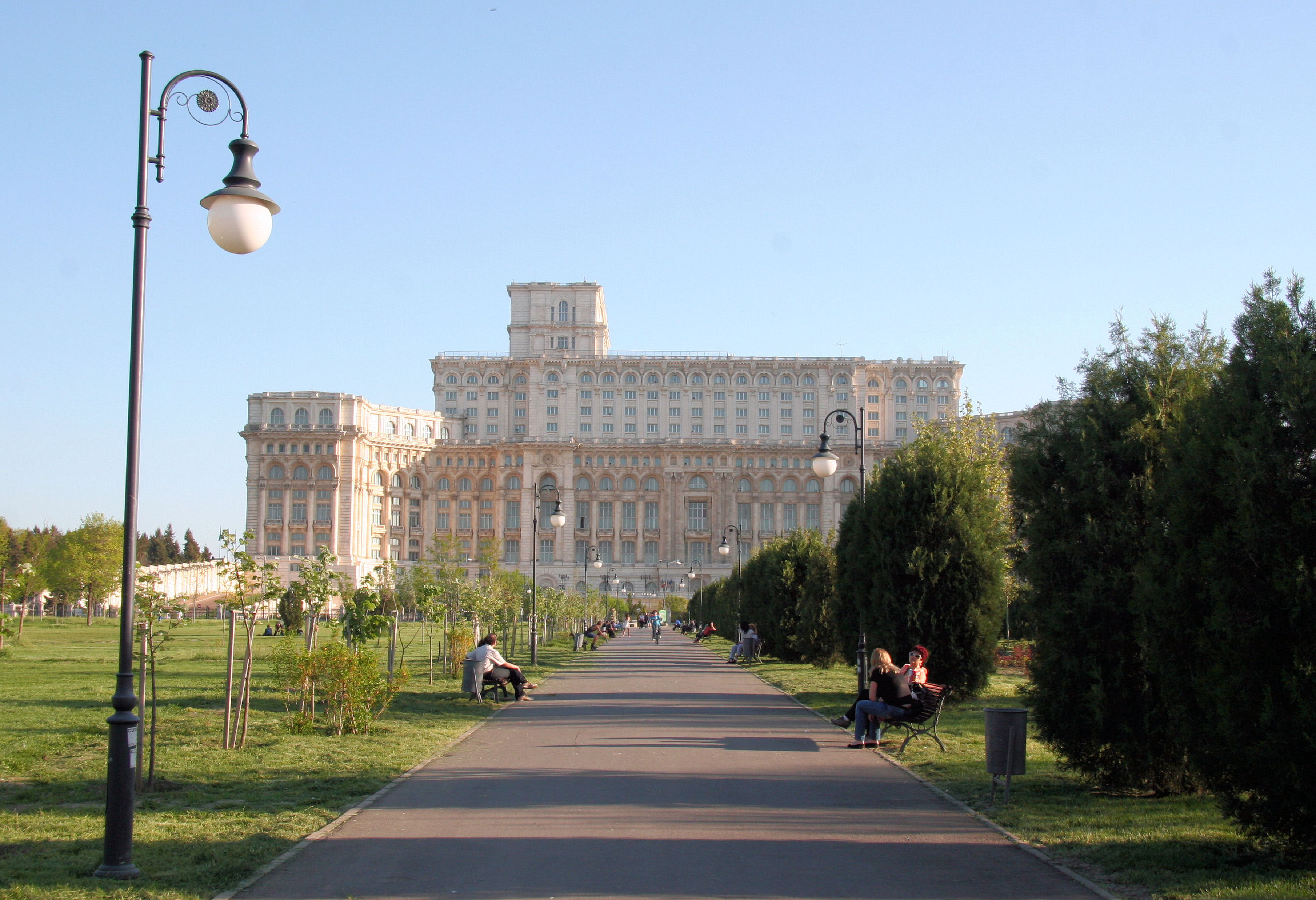
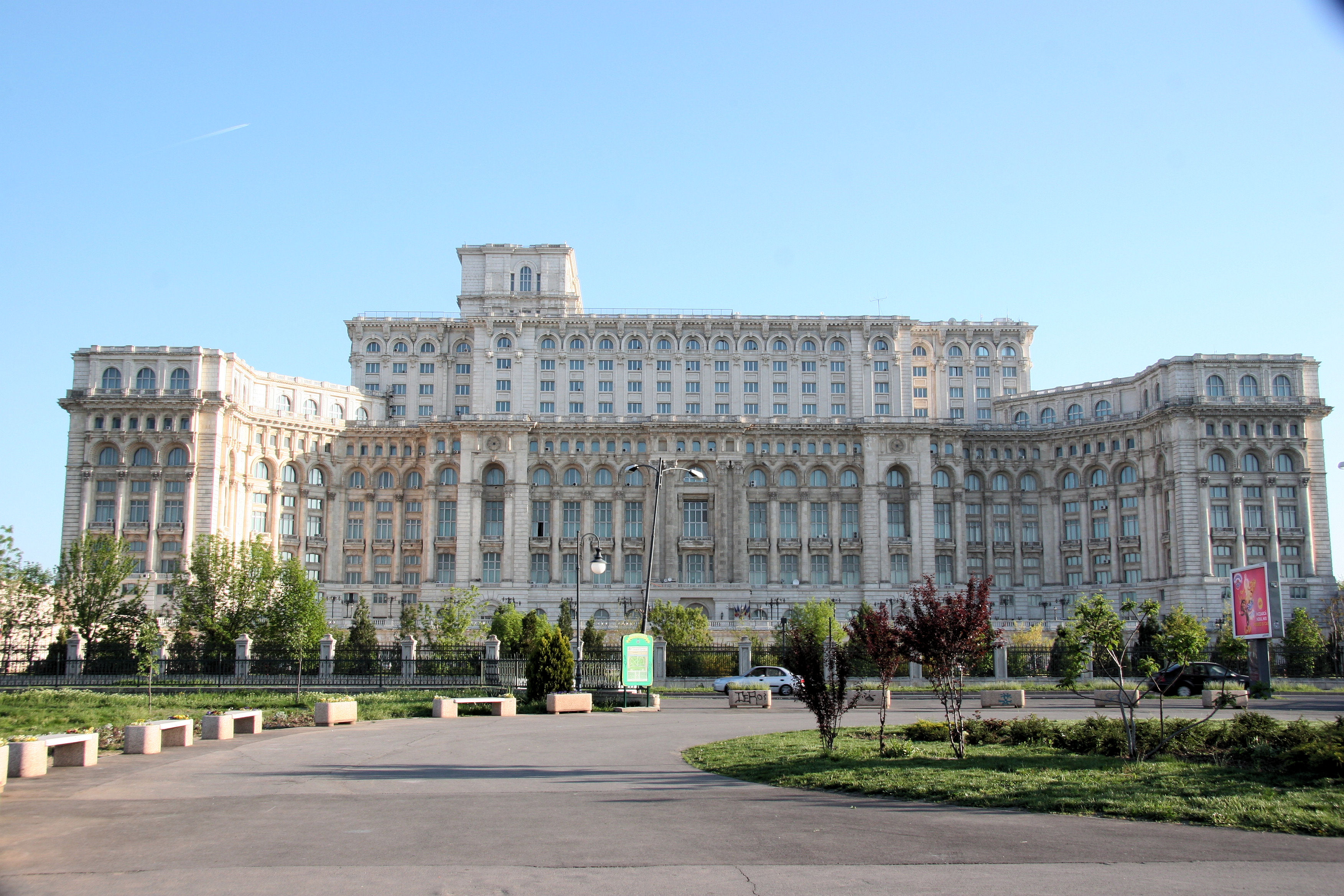
Nicolae Ceausescu was a dictator of Rumania for a quarter of a century until he and his wife were executed on Christmas Day1989. One of his megalomaniacal achievements in the years before his dramatic end was to raze acres and acres of the city centre to build this monster palace. It must be the world's largest building with no function.
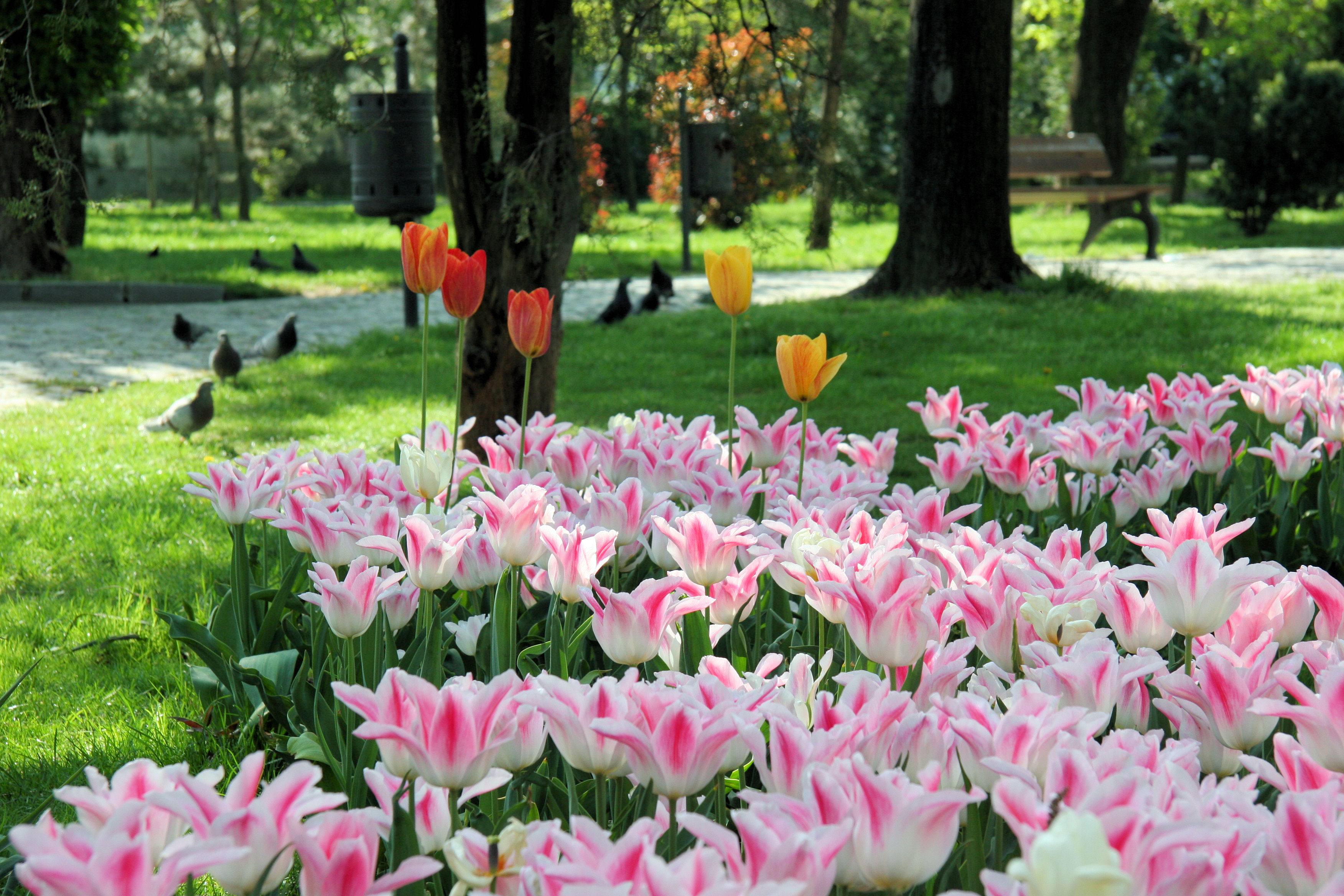
Much more agreeable are the many pretty parks.
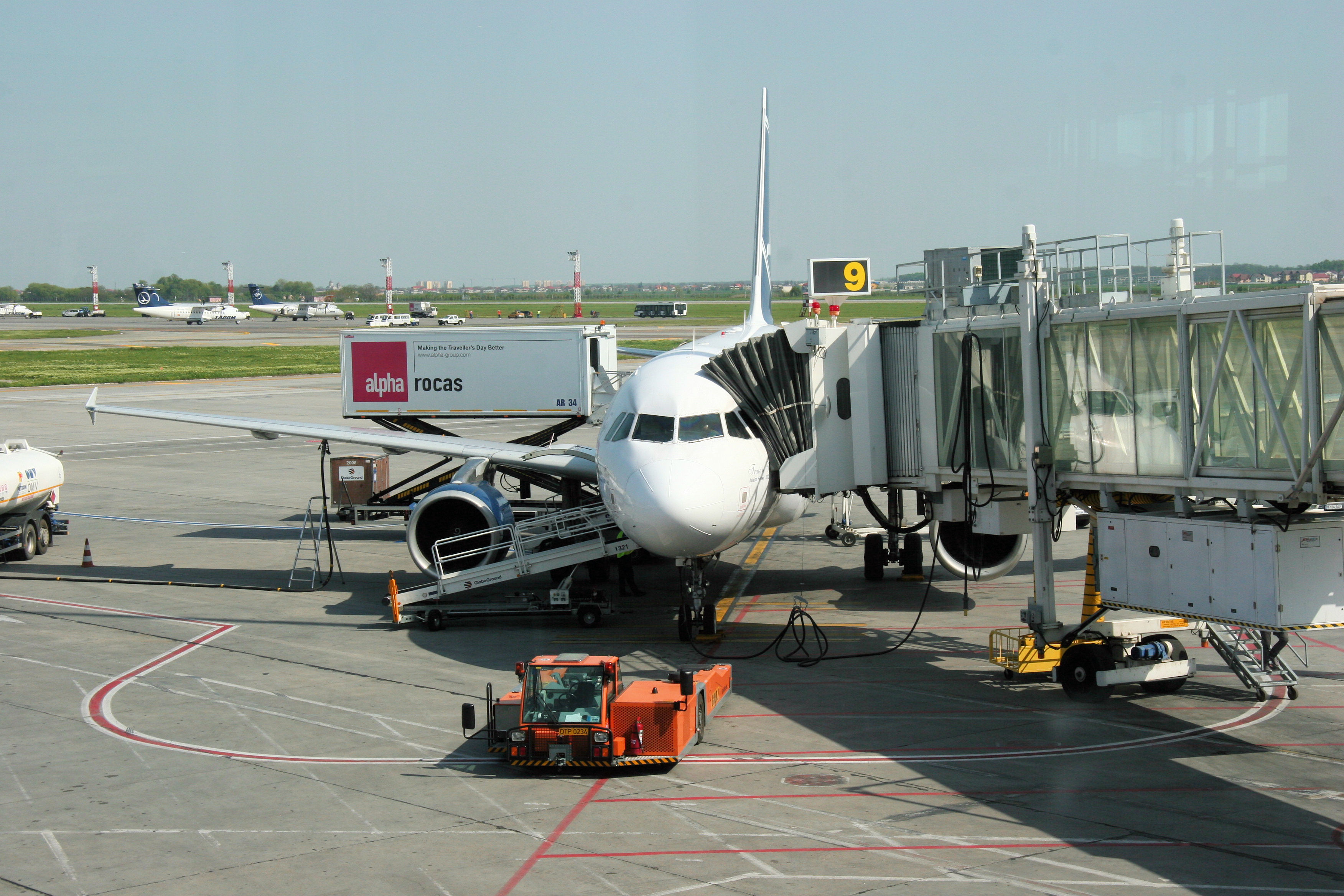
Sadly we could not complete our journey to Istanbul by rail as the Turks had closed the line between their border and capital to completely redevelop their rail system. My three companions ganged up on me and rejected the perfectly sensible ground based alternative, which involved a twenty four hour journey through Bulgaria, followed by an overnight bus to Istanbul from the border. Instead I was persuaded that a forty minute flight in this thin aluminium tube of death was a preferable option.
This was the first time I had been on an aeroplane since 1973 - for very good reasons. Luckily I was distracted from the unpleasant mental state this type of travelling induced in the past - intense concentration on every variation in engine and wind noise, acute sensitivity to every tremor of turbulence and vivid awareness that only a few millimetres of alloy separate me from certain death - none of these feelings were allowed to develop because sitting in the seat directly behind me was a screaming child. He was about five and probably suffering from earache caused by pressure changes and he kept up the screams full volume for the whole flight. In addition he flayed about as his poor mother tried to control him and, with what felt like heavy boots, kicked the back of my seat from takeoff to landing. Occasionally I glanced across at FW and C&ESW and could easily assess the degree of sympathy they were feeling from their shaking shoulders and the tears streaming down their cheeks.
To my amazement and with no little relief, we reached the ground again safely. Getting out of the airport and to our apartment filled a couple of stressful hours - sardine packed trams combined with a huge pile of luggage and having no idea where we were - caused the stress for the rest of the party. I on the other hand felt comparatively relaxed. It was hot and uncomfortable but I was fairly confident I was not about to die.
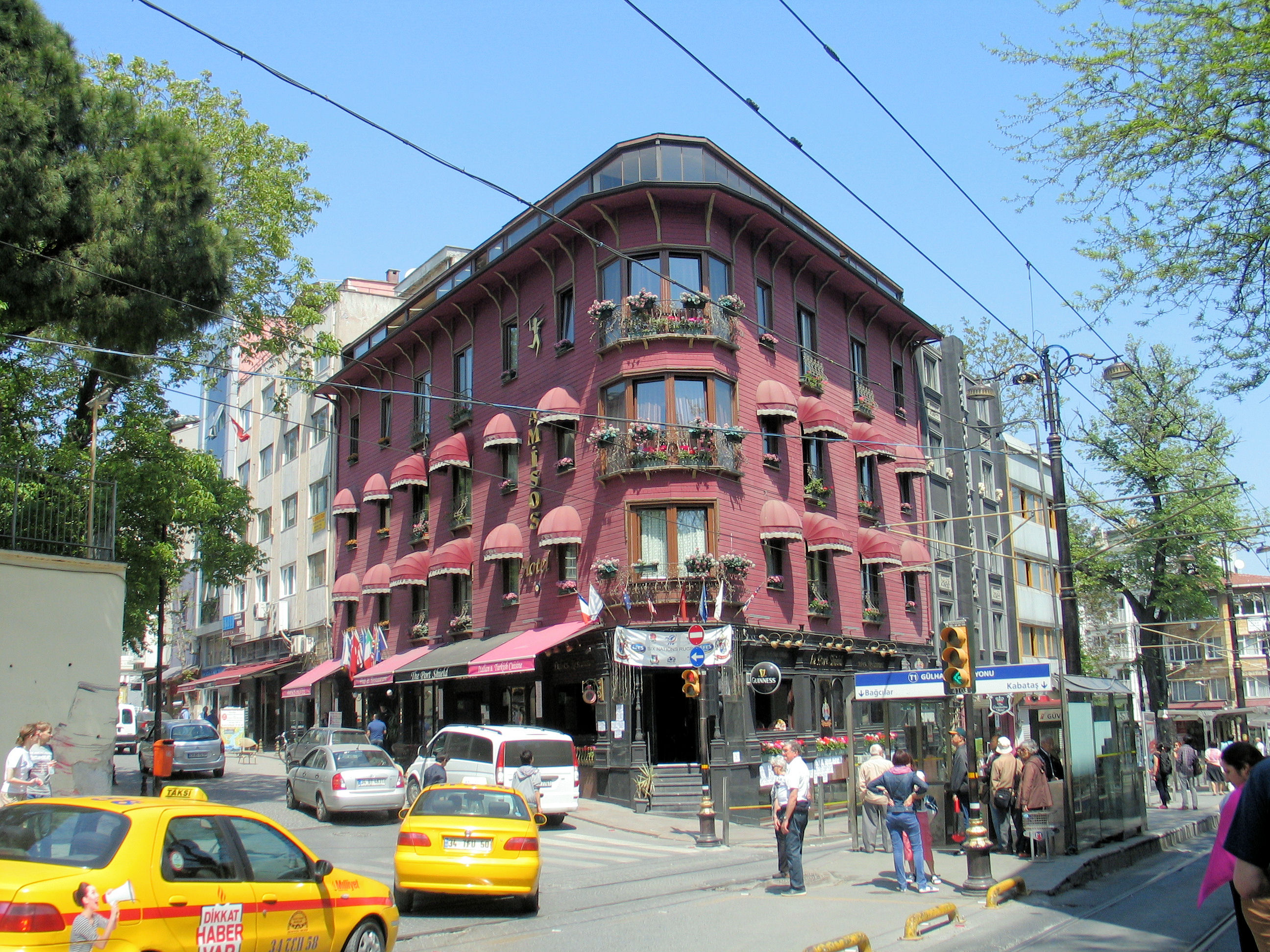
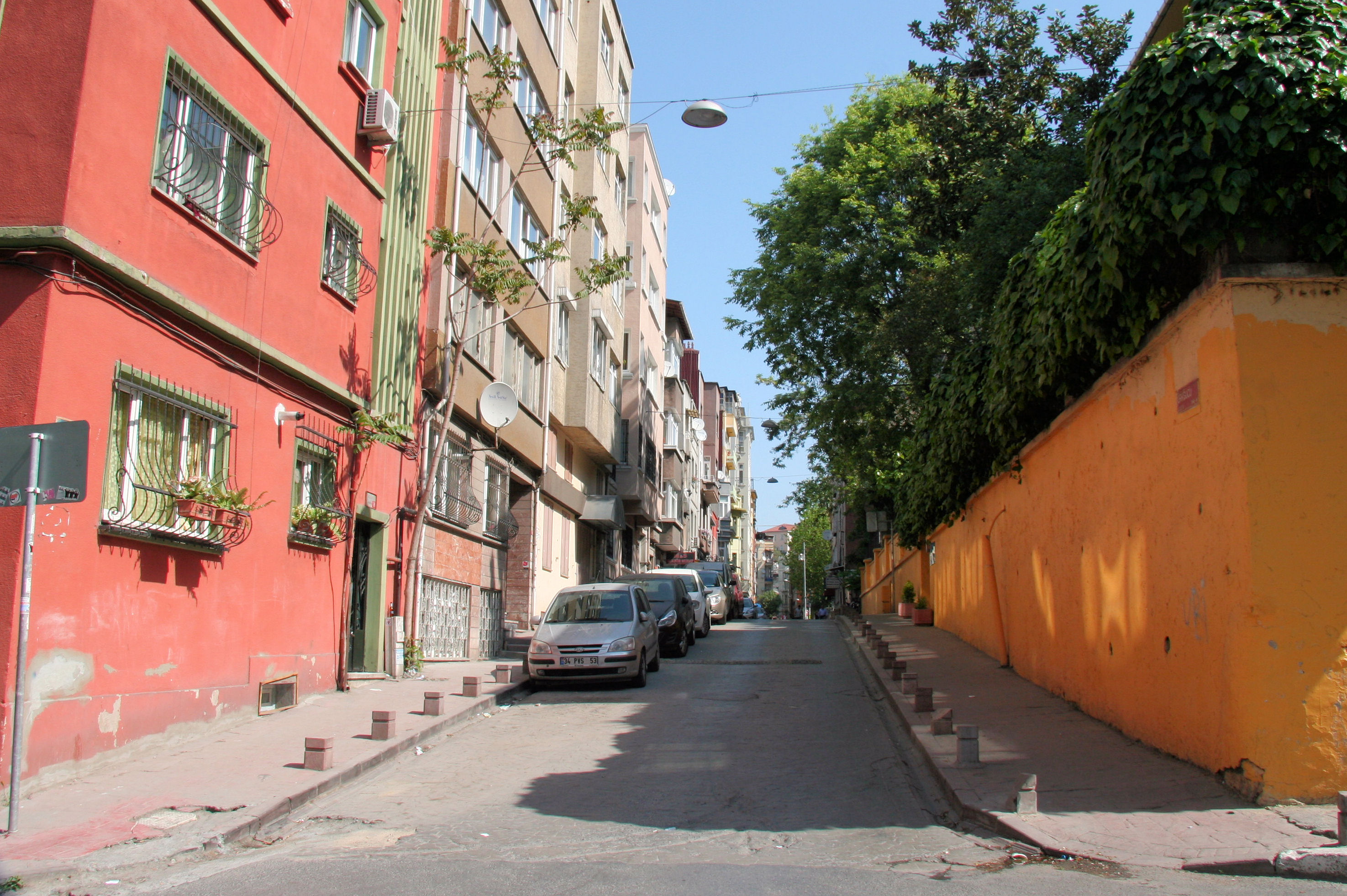
Down town Istanbul was extremely busy. Our apartment was located in a quiet, hilly street in the Old Town, across the Galata Bridge. It turned out to be very well equipped and comfortable and we were all very happy with it.
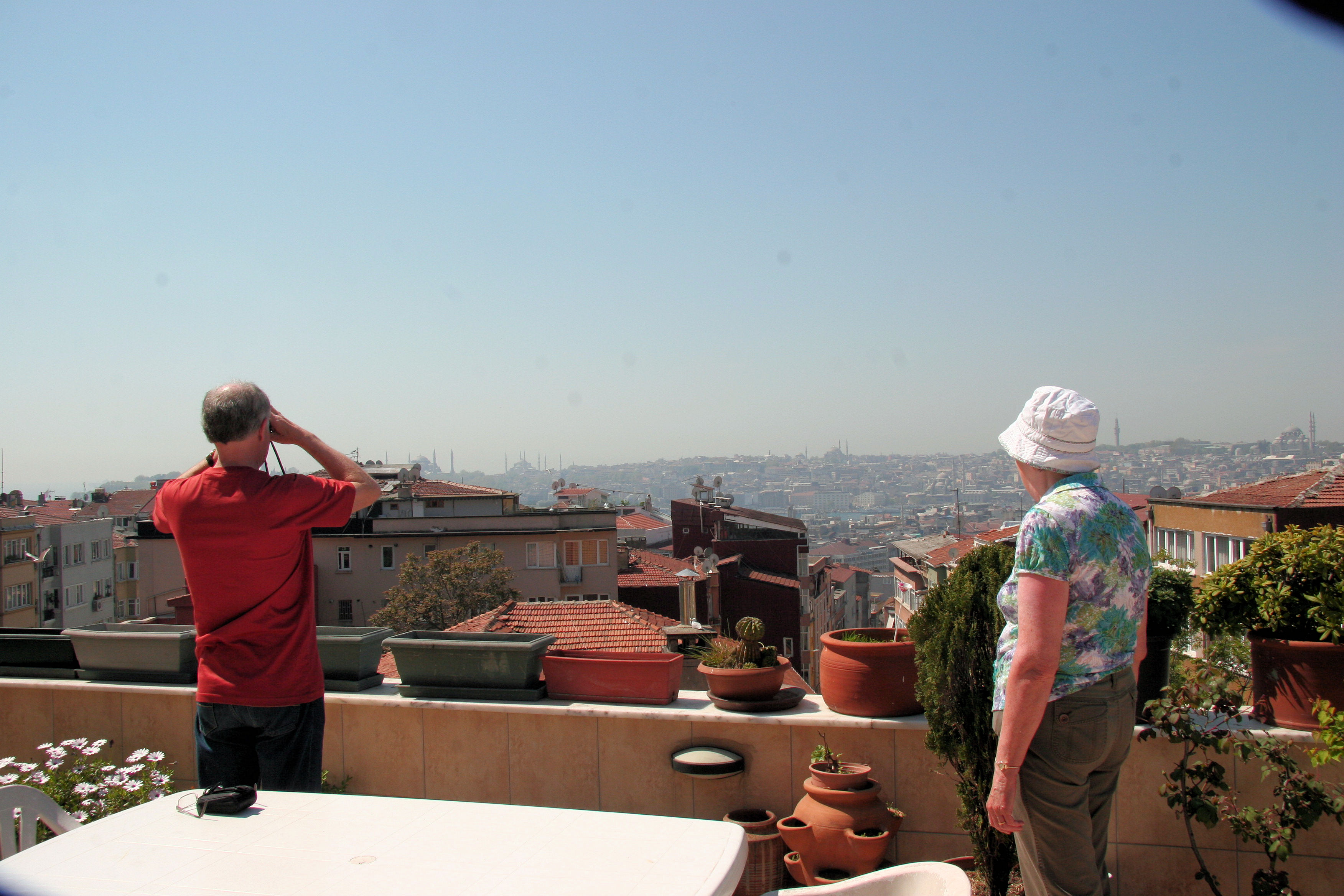
We were allowed access to the roof of the building...
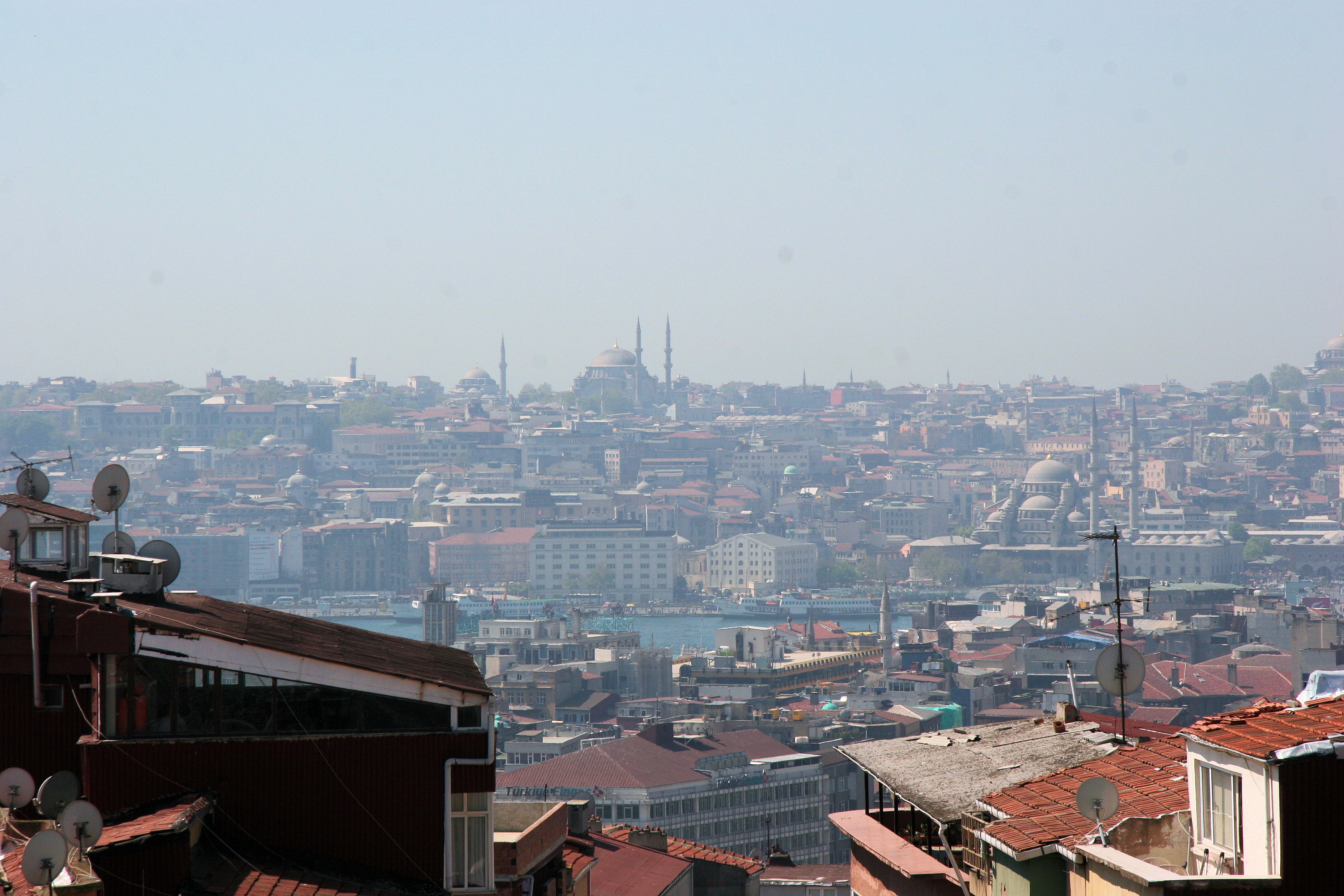
...which enjoyed spectacular views across the Old Town to the Golden Horn and provided an ideal venue for evening drinks.
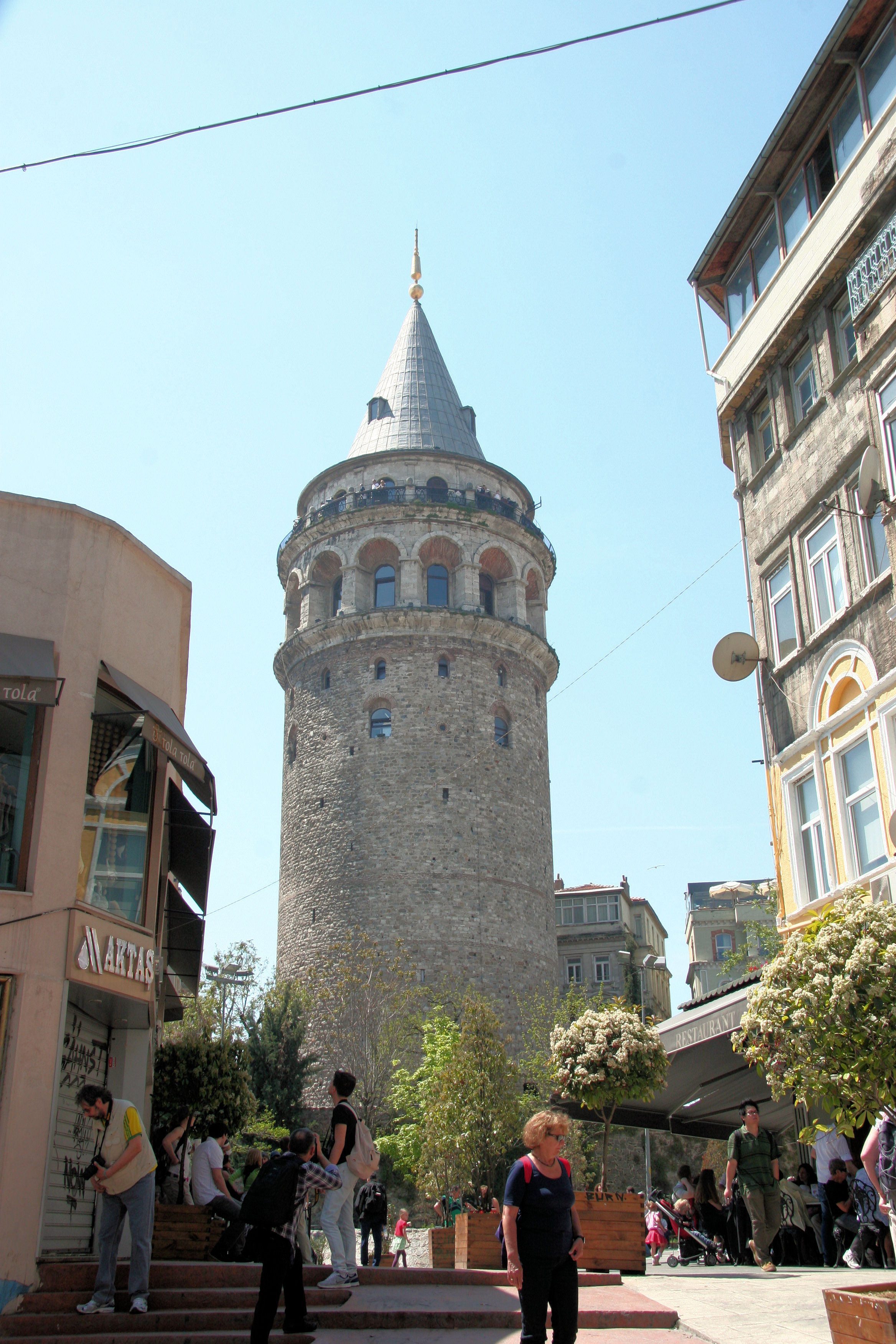
We visited all the traditional things in Istanbul like the Galata Tower, which was less than half a mile from the apartment.
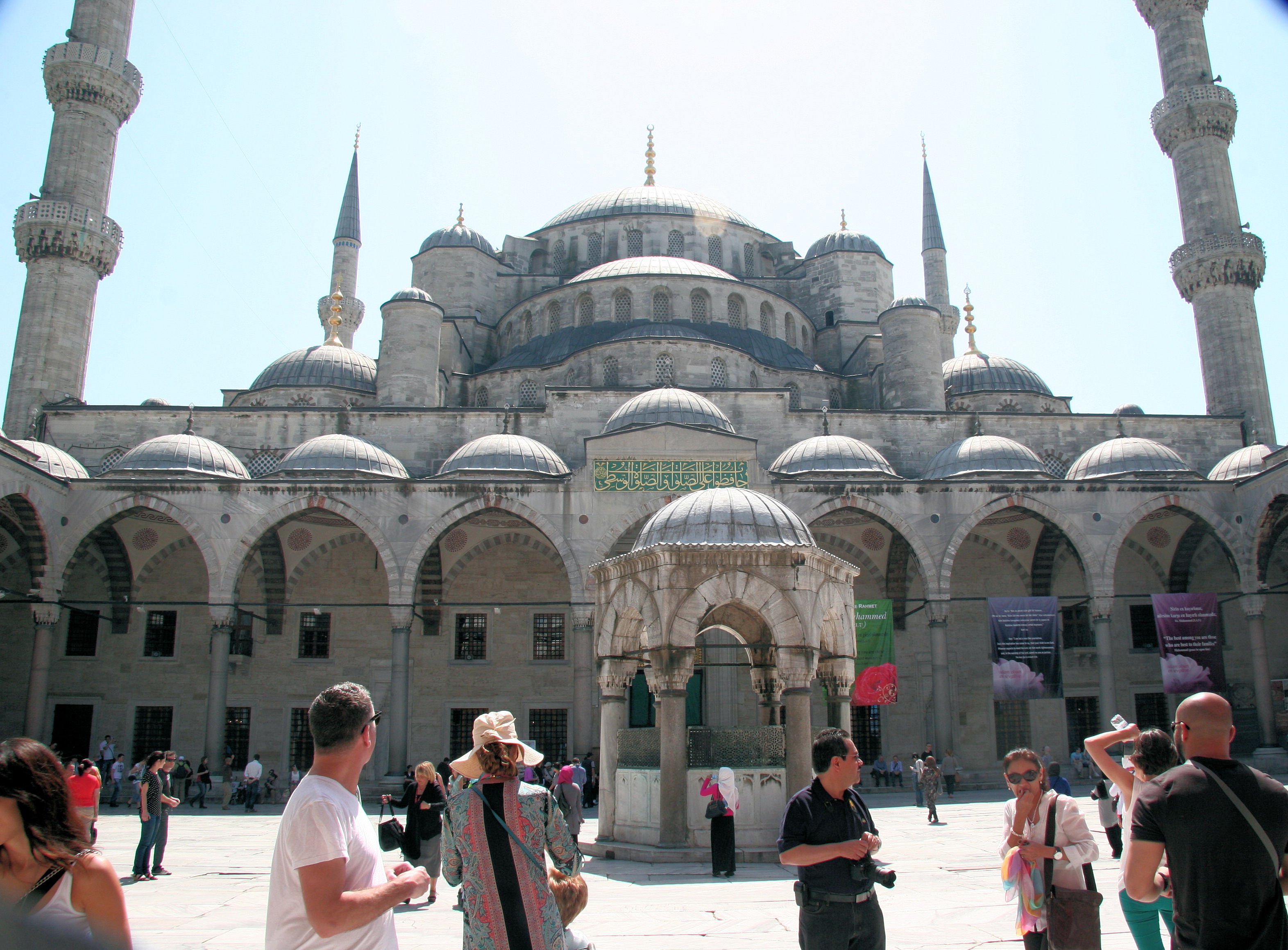
The spectacular Blue Mosque took up most of a day. It was hot and crowded outside with some queueing necessary, but well worth the effort.
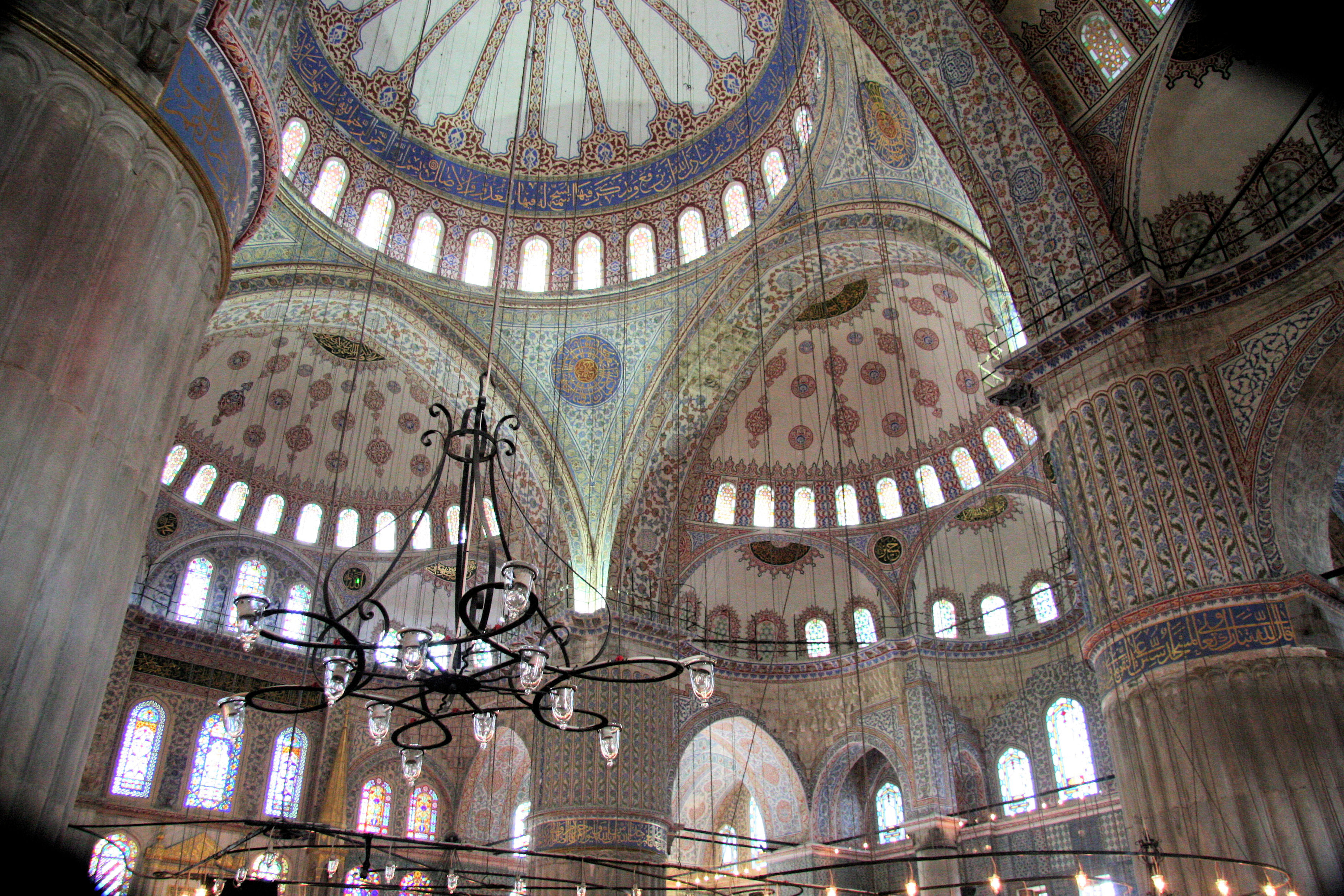
Inside is a vast, cool space which somehow melted away the crowds and wrapped one in an individual bubble of calm. The intricacy of the decoration, the cascade of windows and arches and the way this lit the scene was quite wonderful.
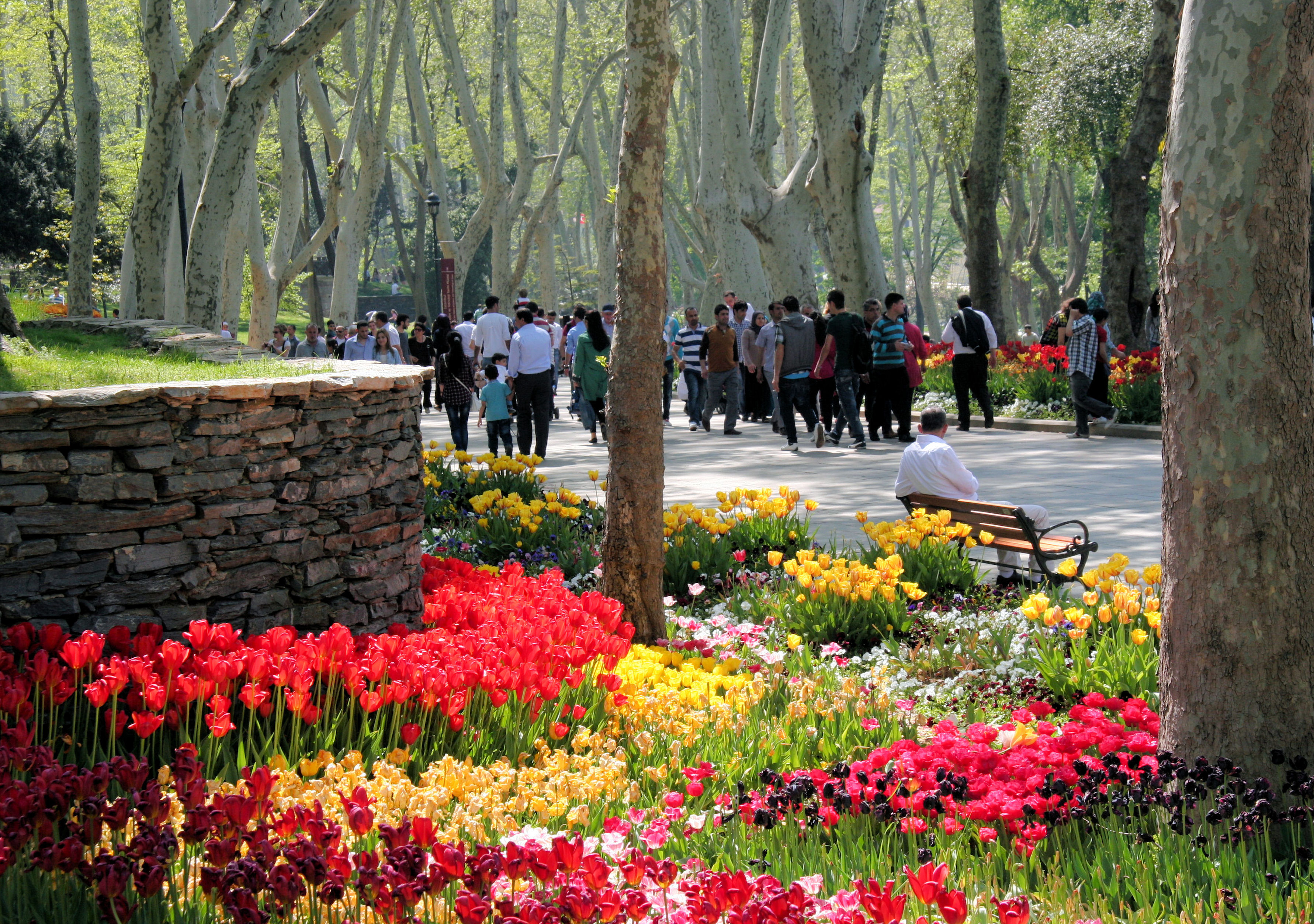
And yet...
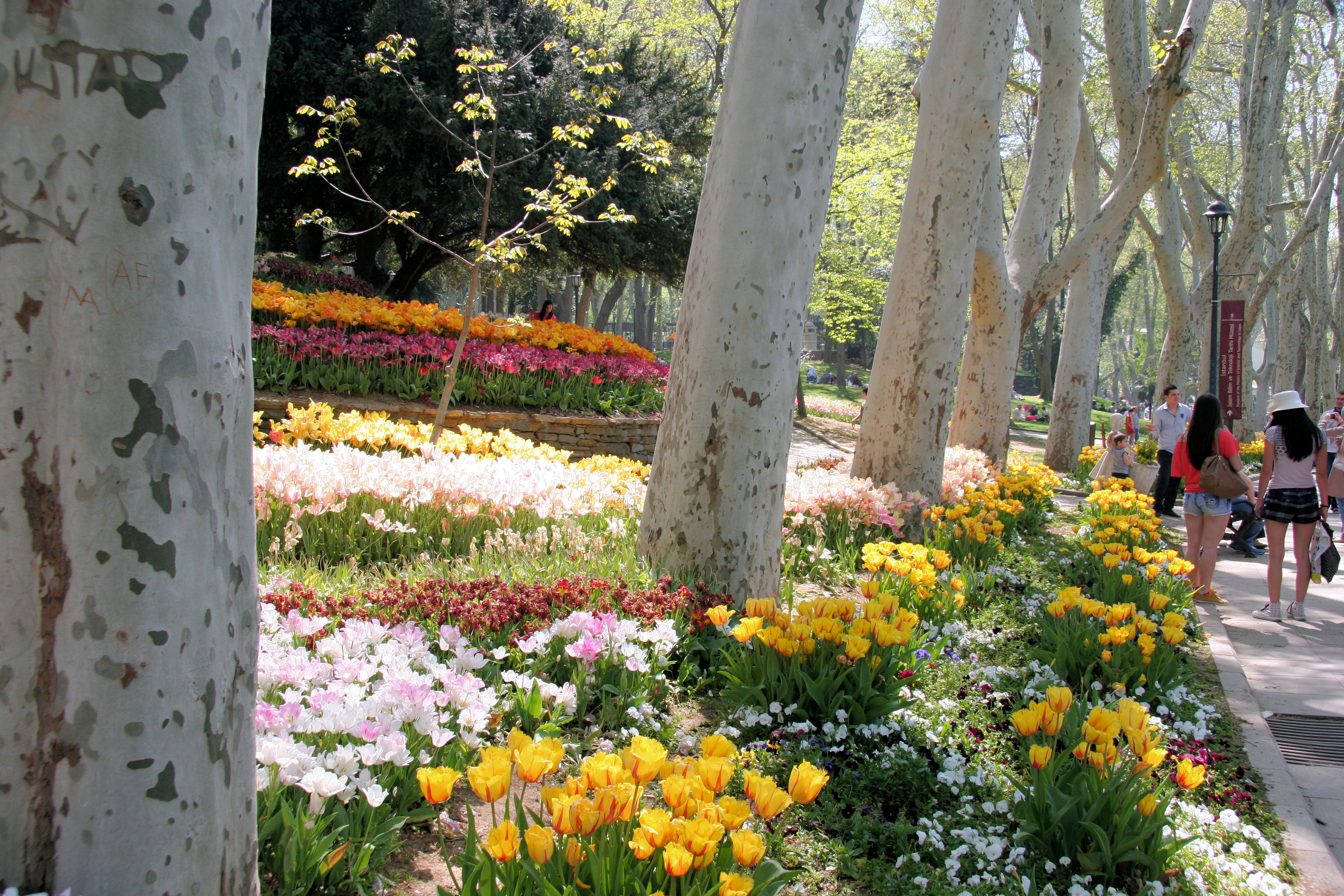
...wandering around the parks within which the two great mosques are set was also beautiful and inspiring.
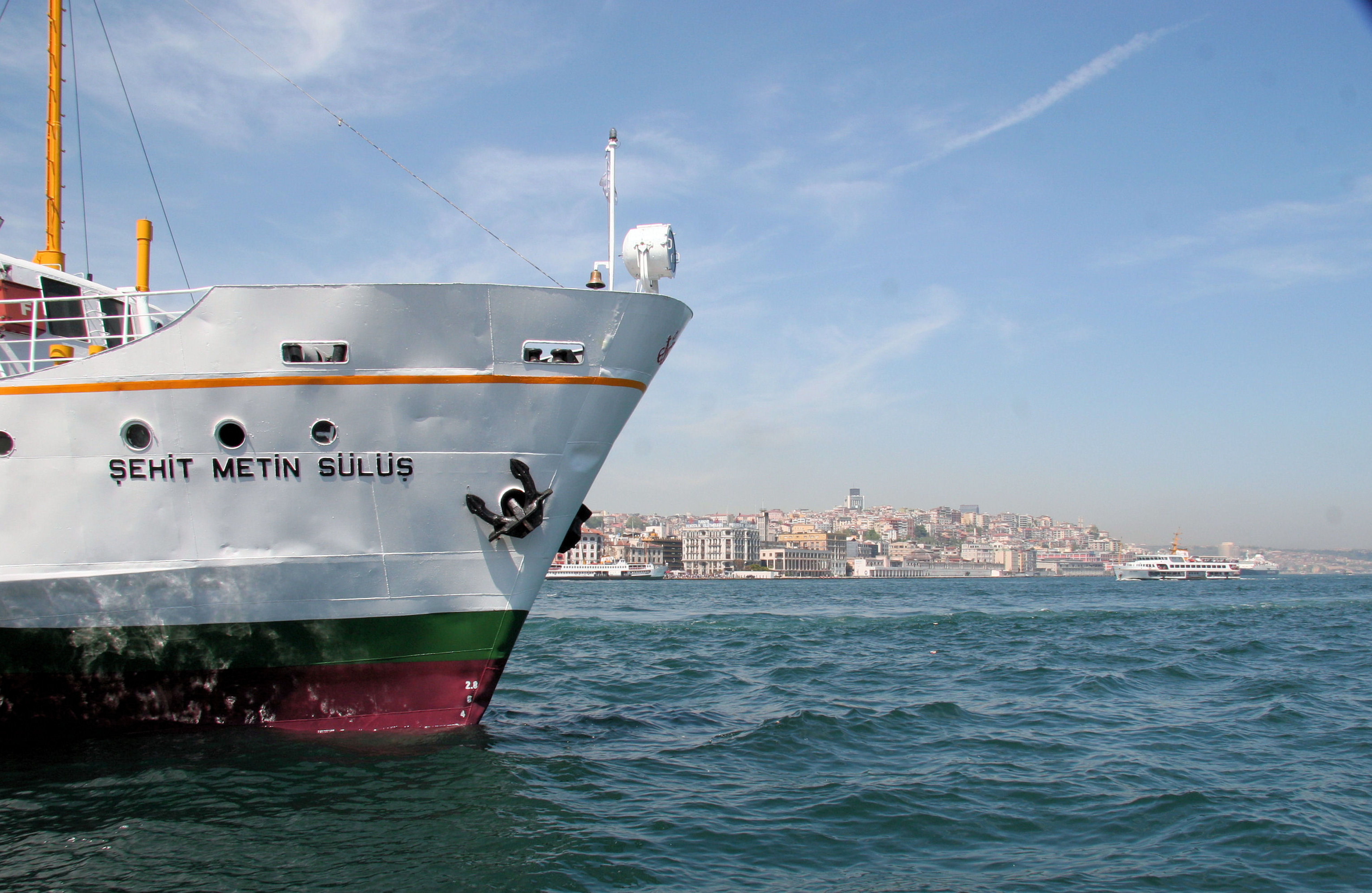
The Bosphorus is in constant motion as ferries come and go, churning the water into a choppy cauldron. A trip down the channel to where it opens out into the Black Sea gave us a great day out.
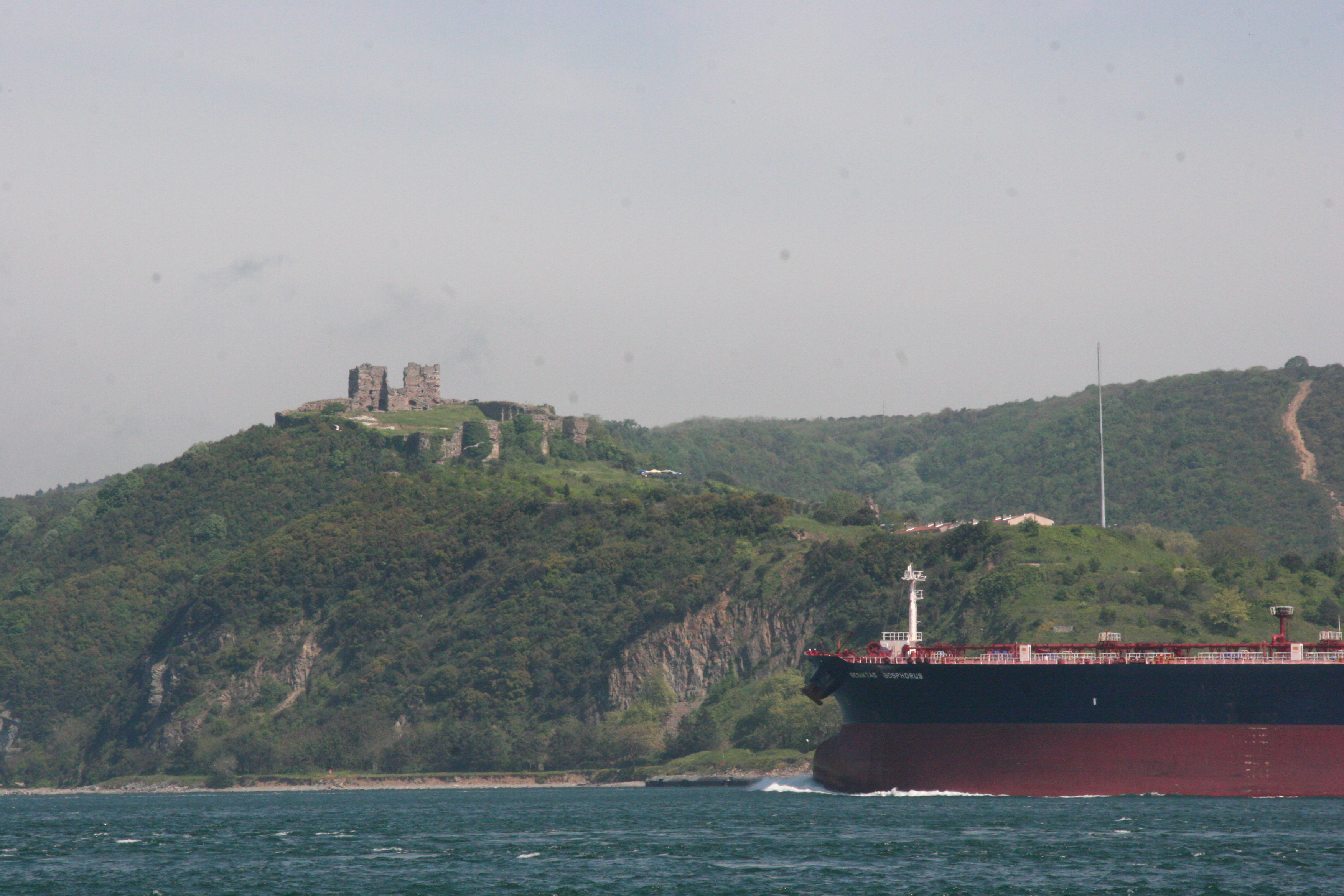
Lining the hills on either side are many old and not so old fortifications which look down on a constant stream of large freight vessels coming and going to Russia.
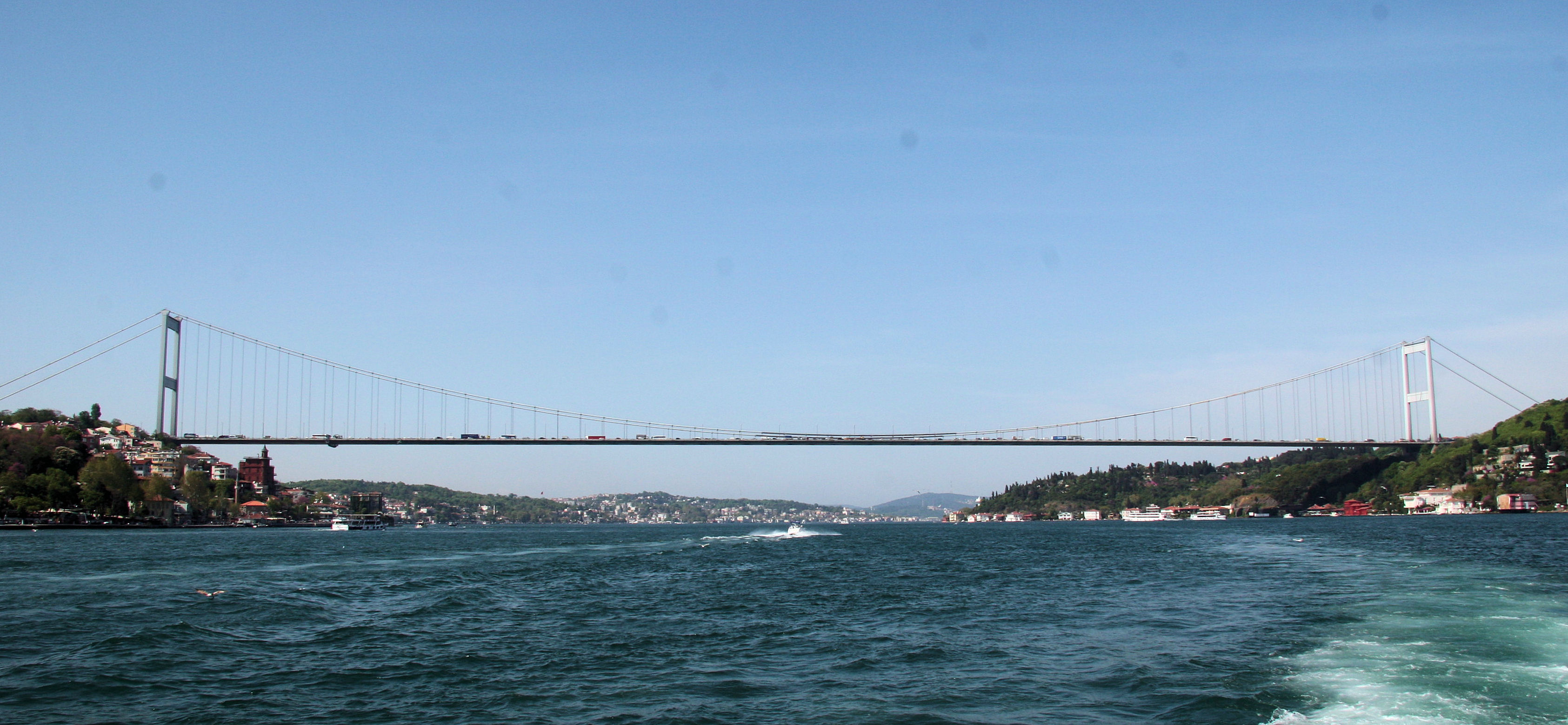
Just to the North of Istanbul is this magnificent suspension bridge which links Europe and Asia. Traffic across was very heavy at all times. More recently this bridge featured significantly in the recent coup attempt against the Erdogan regime when troops and tanks siezed and closed it.
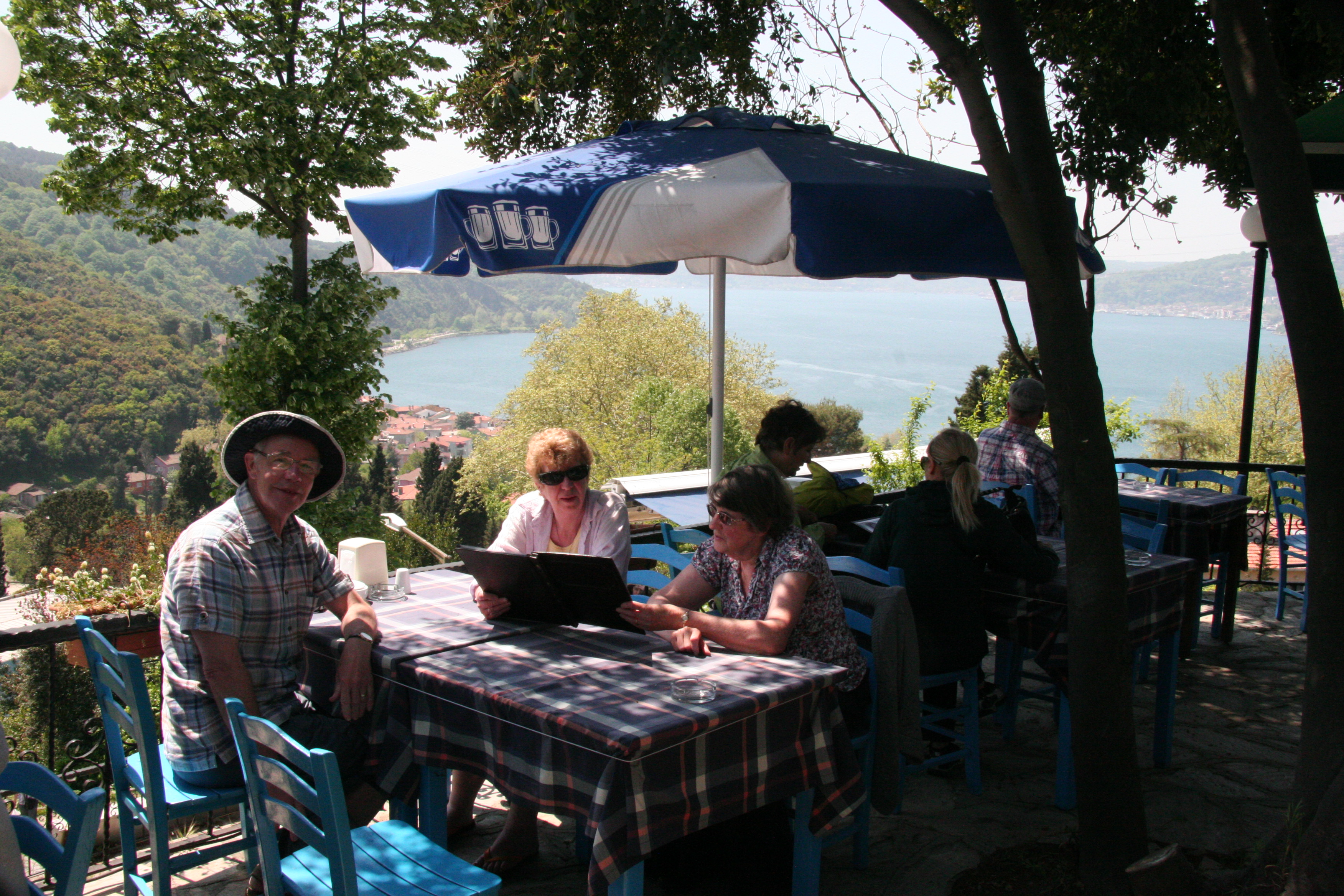
No coups at the end of our ferry ride up the Bosphorus, except perhaps C&ESW pointing out the healthiest option on the lunch menu.
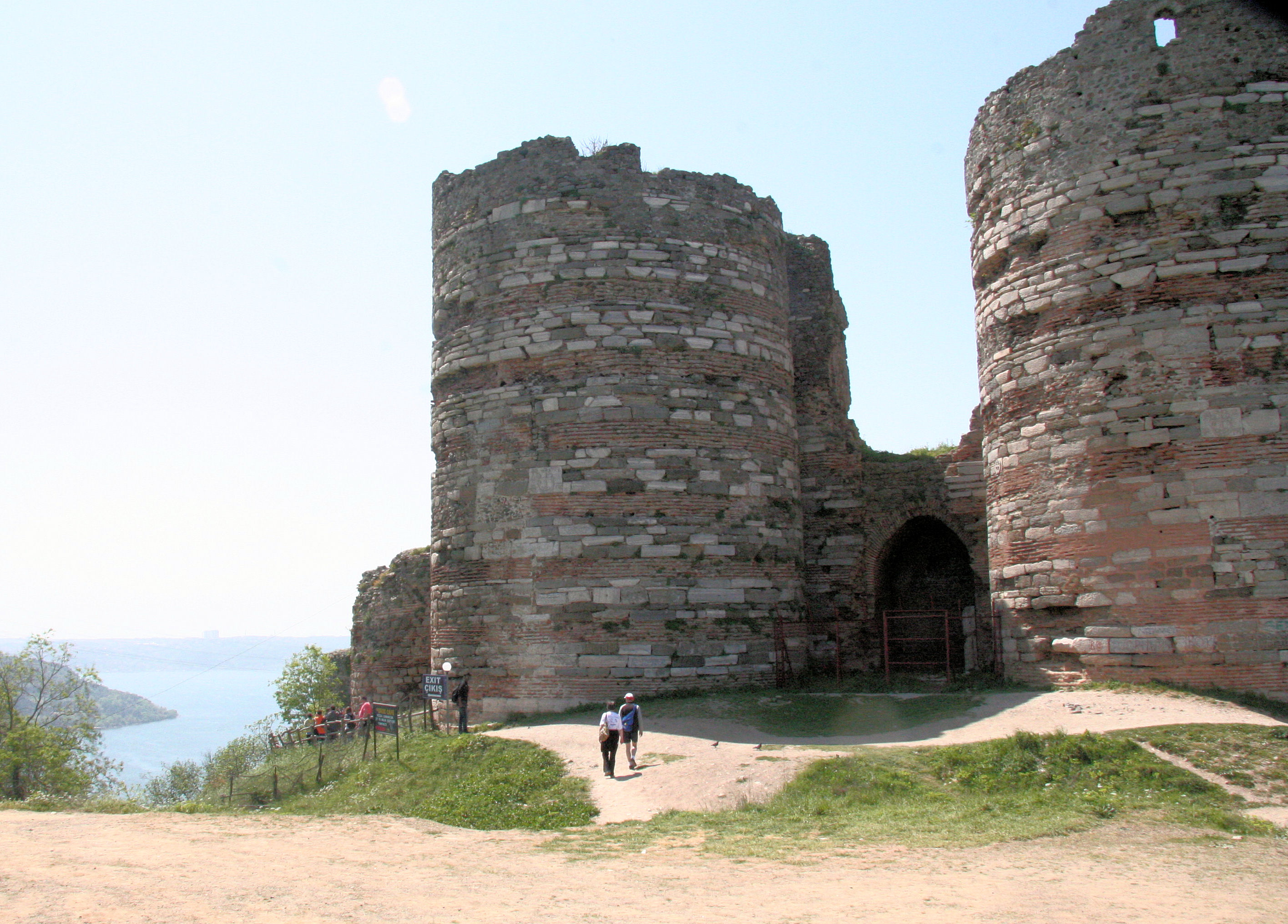
With the Black Sea beyond, this castle guards the northern entrance to the Bosphorus.b
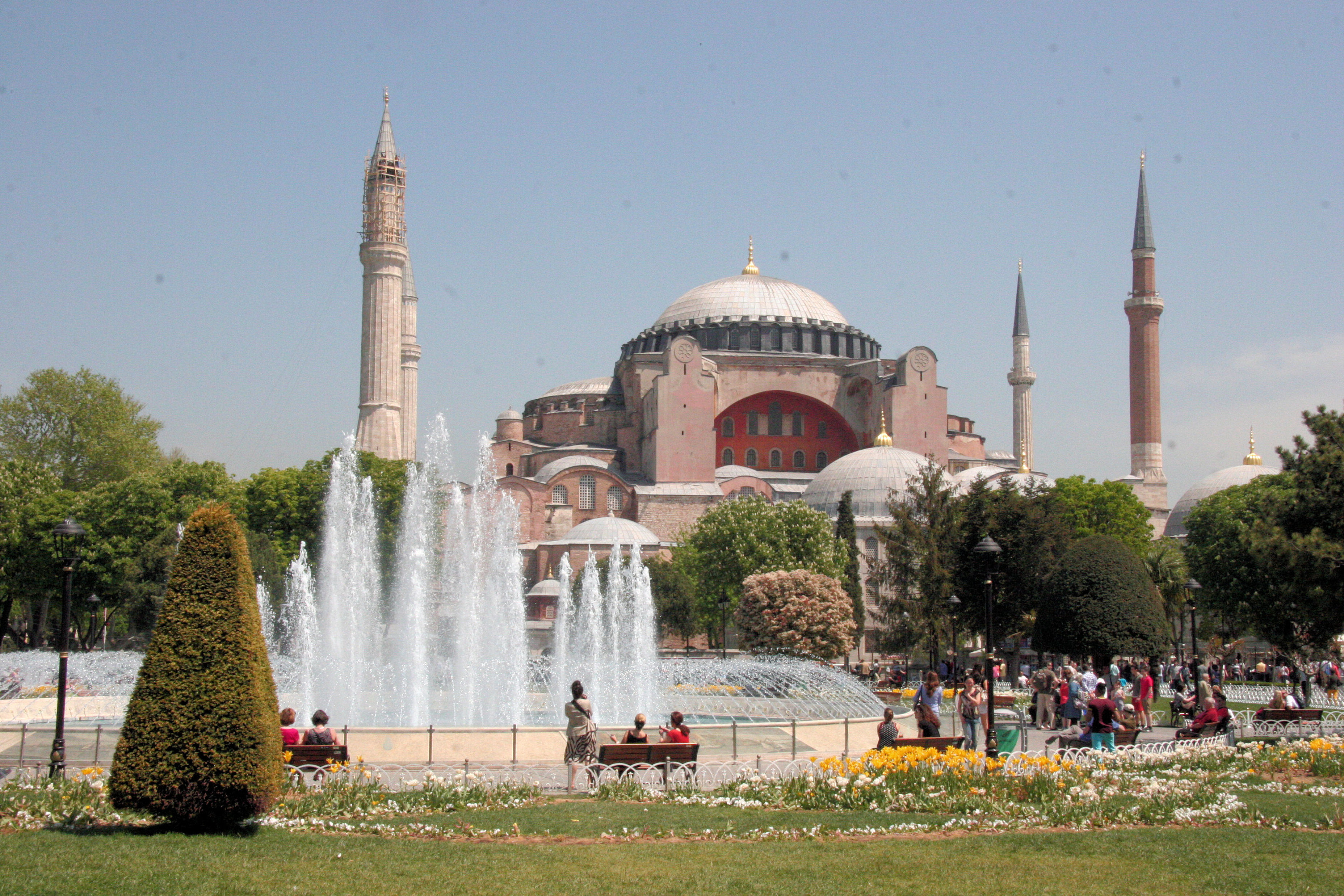
The Hagia Sophia has to be one of the worlds greatest and most amazing buildings. The first remarkable thing is its age, it was built in 537AD. For over nine hundred years it was a cathedral of the Eastern Orthodox Church, except for a brief interval in the thirteenth century when it became a Catholic cathedral. In 1453 Constantinople fell to the Ottomans who converted it into a mosque. In 1935 it became a museum and has kept this secular role ever since.
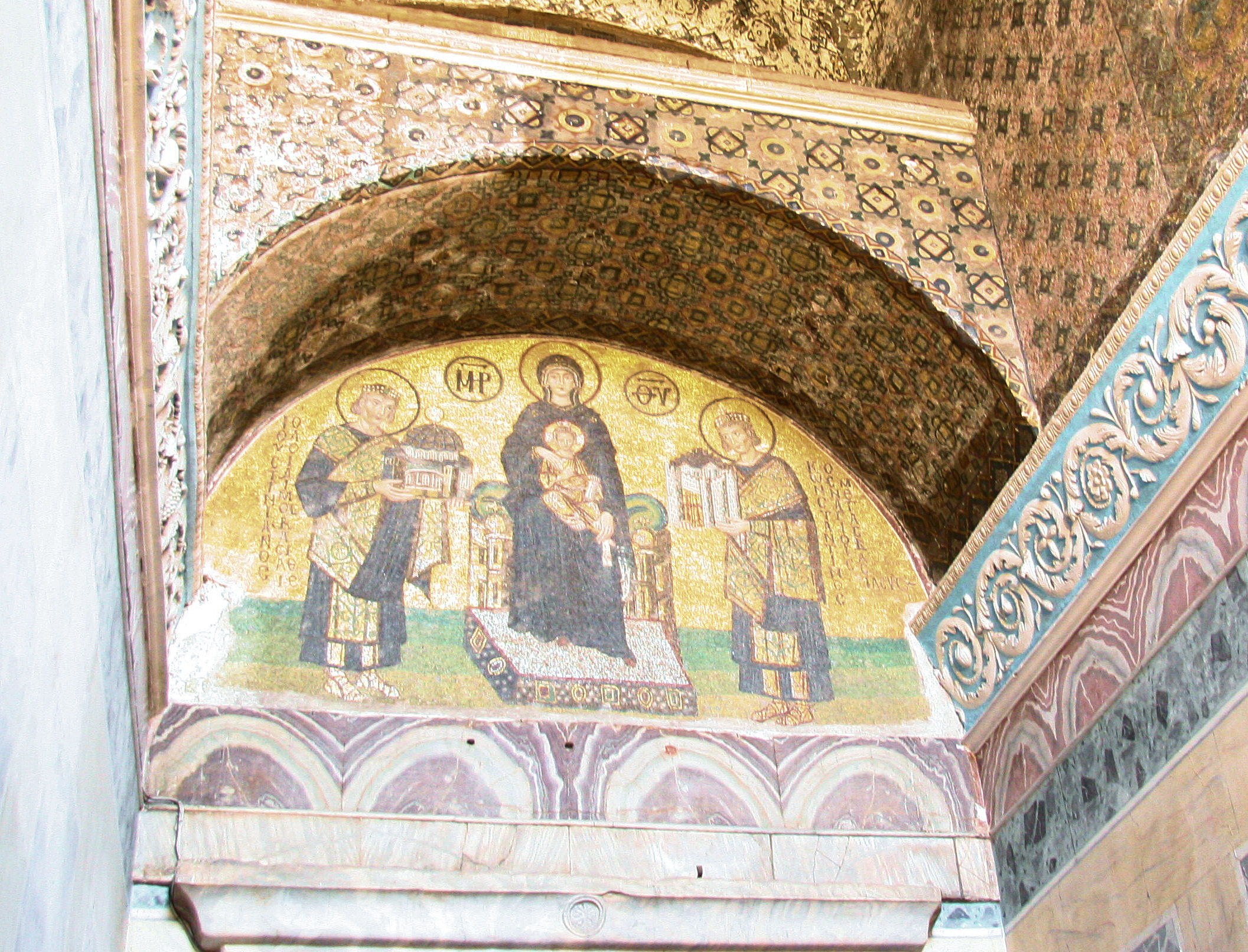
Evidence of its former Christian past were uncovered after 1935.
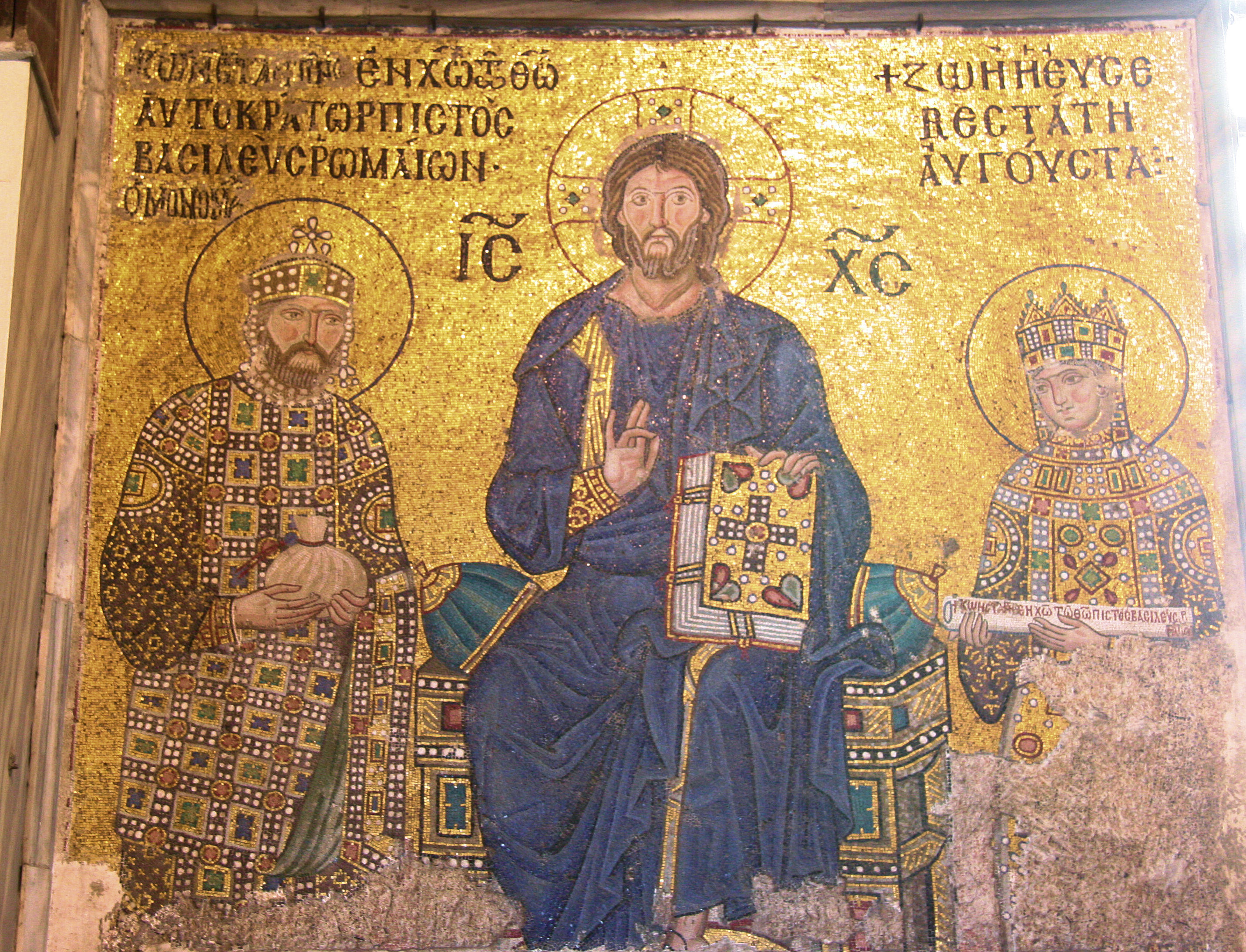
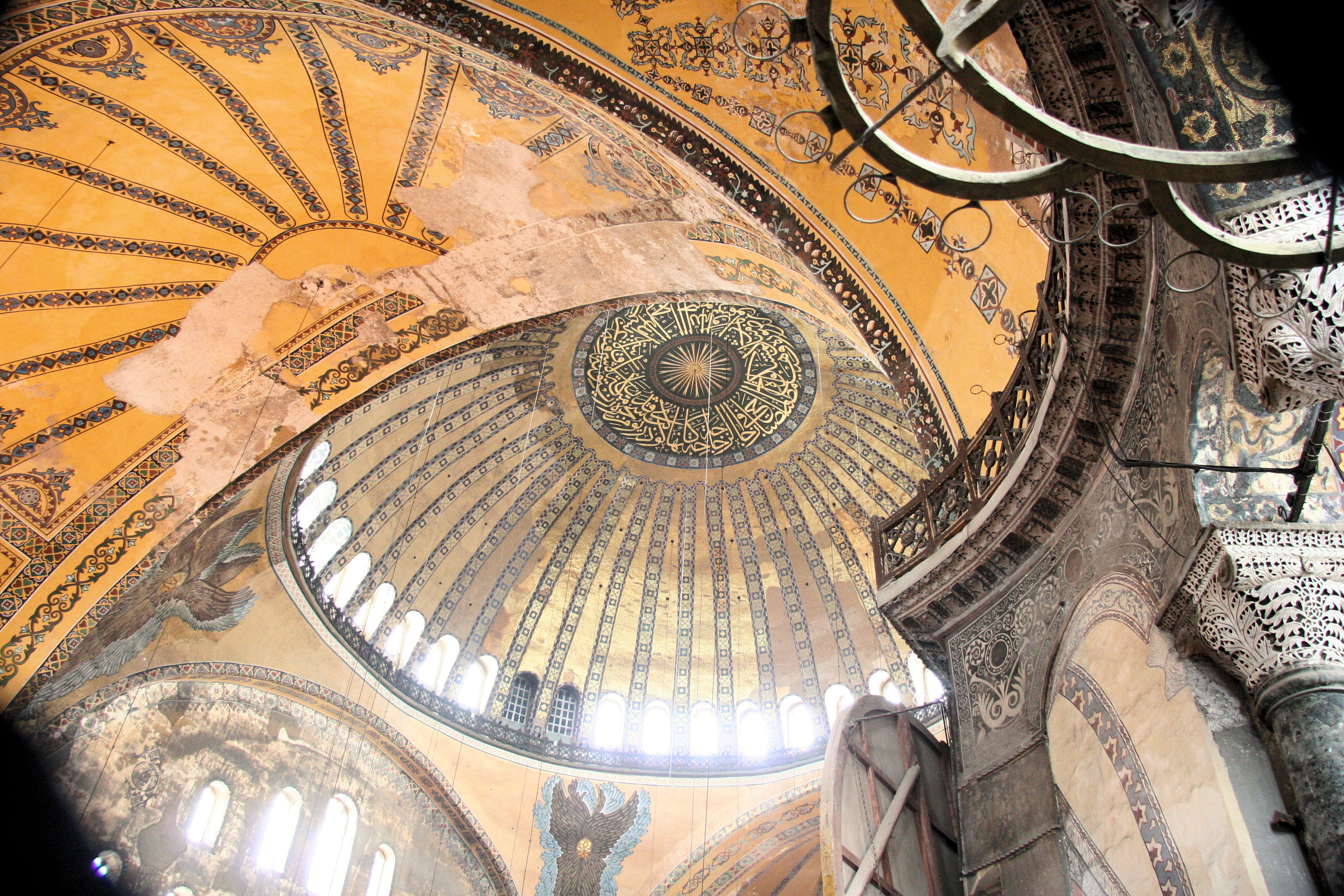
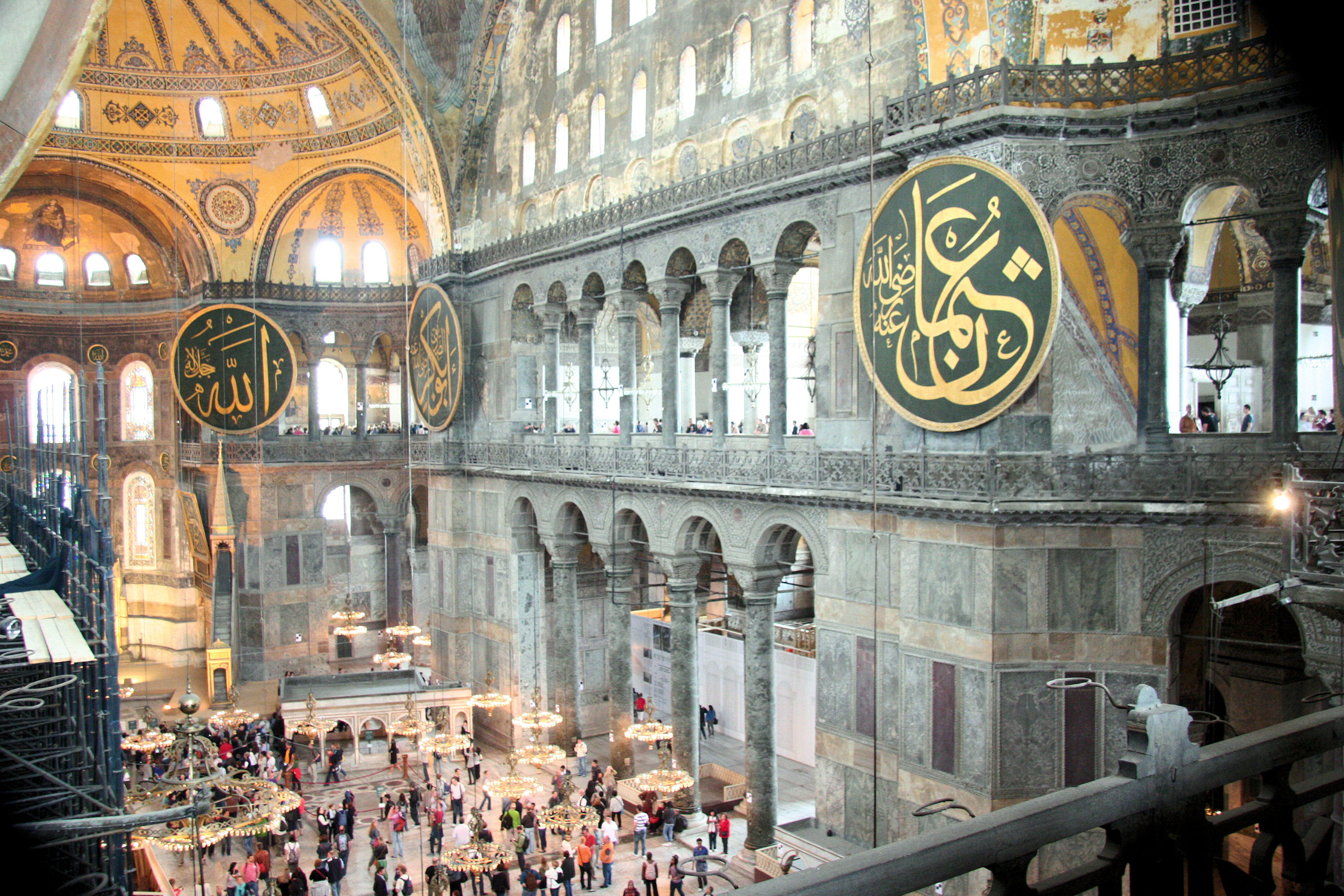
As a building it is impressive in every way with its height and great domes. It is difficult to imagine how they did it with the technology available in the sixth century. I was very taken by the floors of corridors and flights of steps which have been worn and polished to an almost translucent sheen by centuries of footsteps.
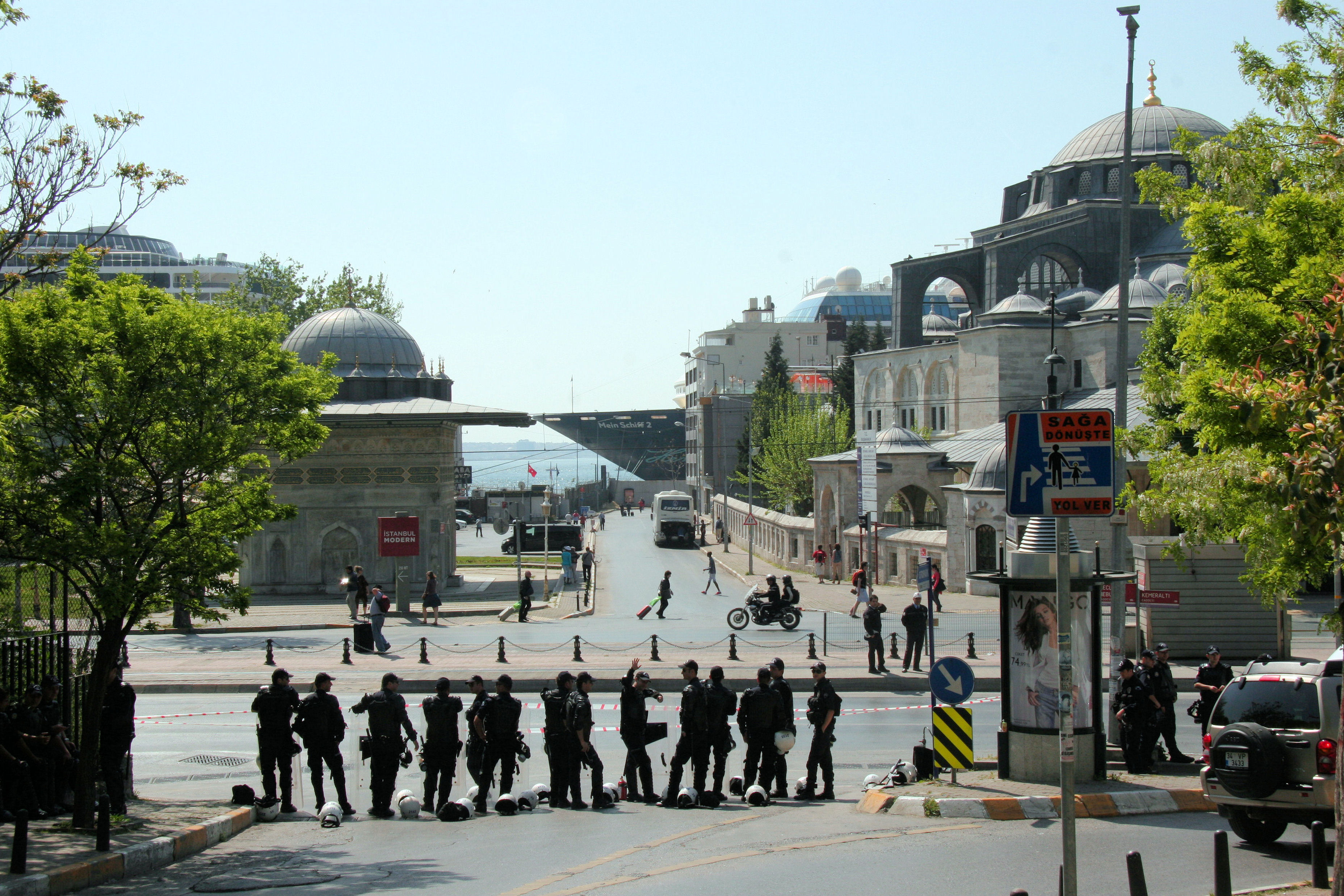
Much has happened in Turkey since our visit. I have already referred to the recent attempted coup with tanks blocking the Bosphorus suspension bridge. Just after we returned riots broke out in Taksim Square - just a few hundred yards from our apartment - over government plans to develop it.
Even during our visit there were signs of unease. I do not understand all the details, but lines of fracture seemed to be developing in Turkish society. During our visit a protest march was planned, on the day we intended to visit Topkapi Palace. I think it was against government moves to reduce the secular nature of the Turkish state. We had already encountered some sort of curfew around our apartment when all routes were blocked by police cordons for a while and next morning we got the distinct feeling that "something is going on."
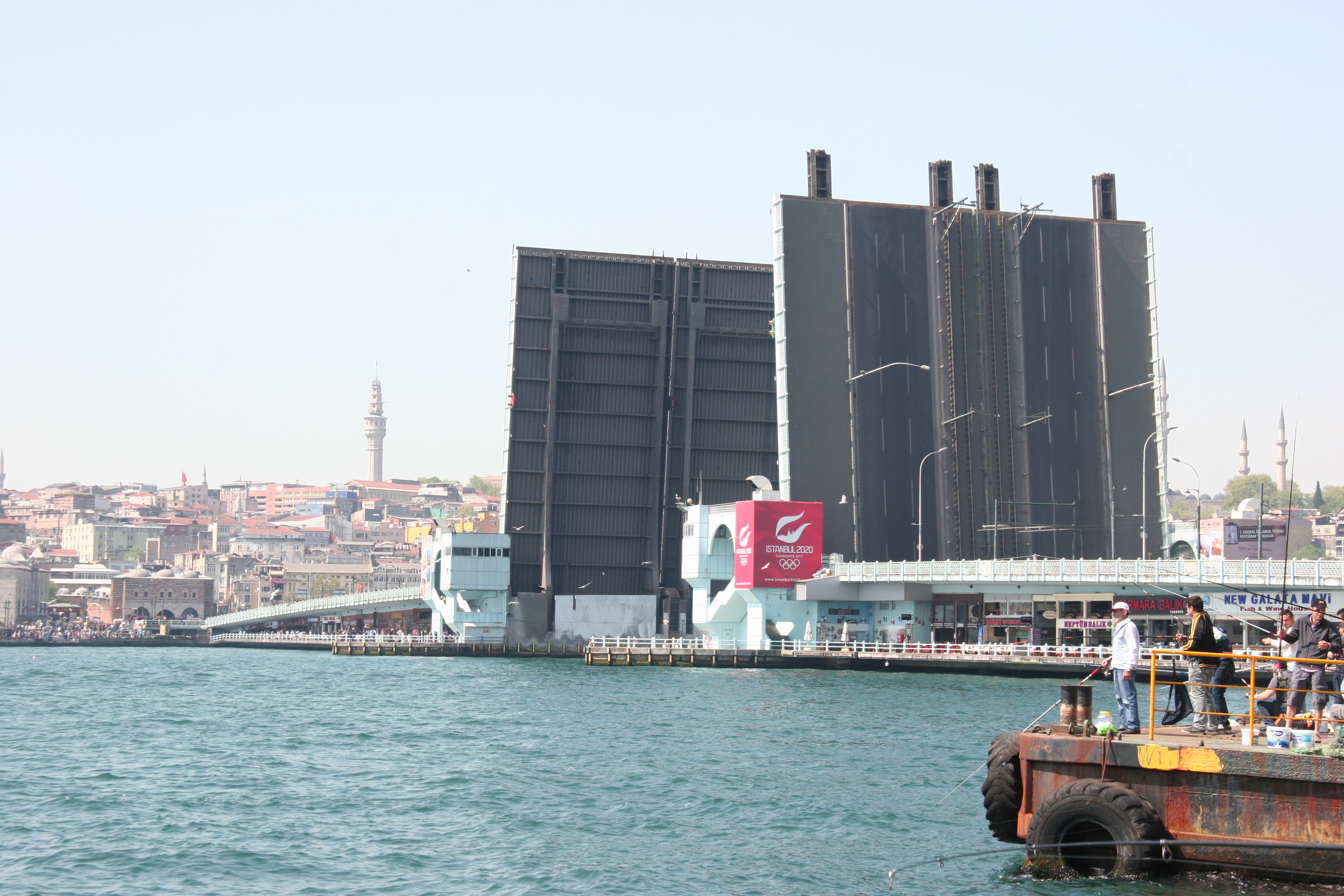
What was going on was a government being autocratic. In order to to prevent any protest march the government ordered the closure of the key link across the city, the Galata Bridge, to the massive inconvenience of everyone. Including us.
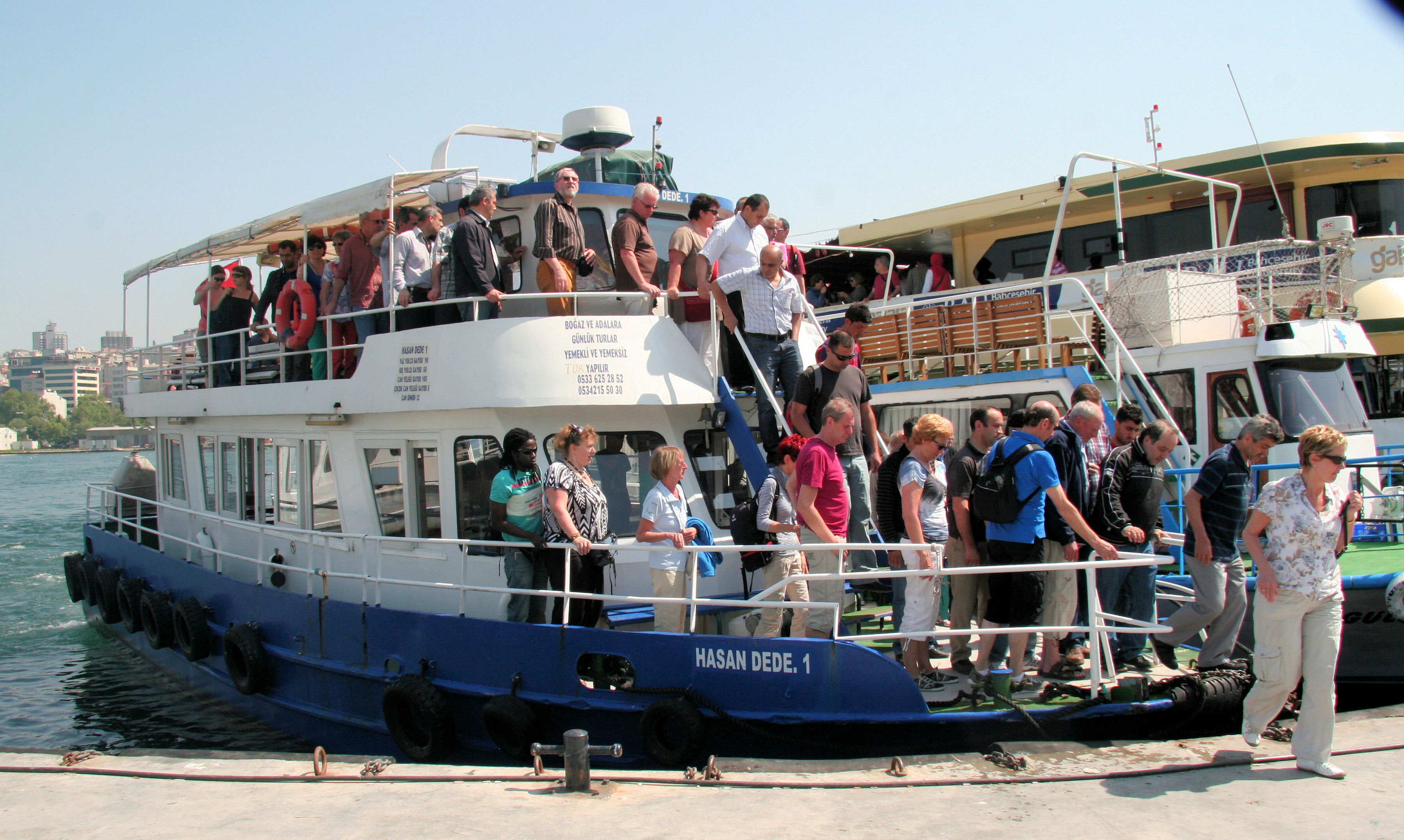
Fortunately an enterprising impromptu ferry service quickly developed so we were able to cross The Golden Horn and make our way to Topkapi Palace. On the way we encountered what must have been a counter demonstration of young, bearded, men, dressed in black, waving their fists in the air, their demeanour very committed. I felt quite disturbed by this spectacle, even frightened and the hairs on the back of my neck twitched a little. They did not seem the sort of chaps who would welcome a rational critique of their point of view, or discuss the reality of evolution without getting even angrier than they already seemed to be.
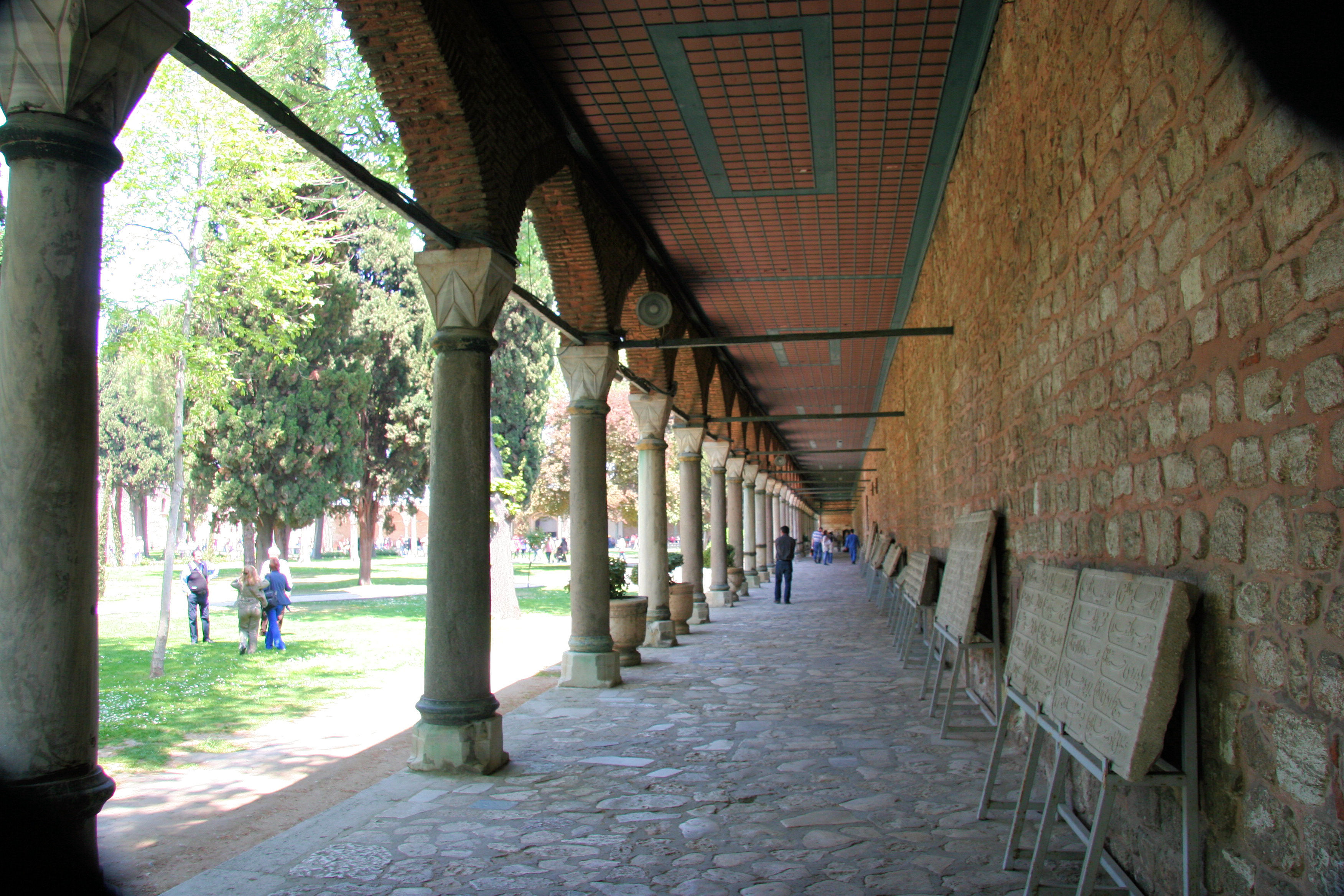
Somewhat subdued we made our way to Topkapi Palace which stands on higher ground overlooking the Bosphorus.
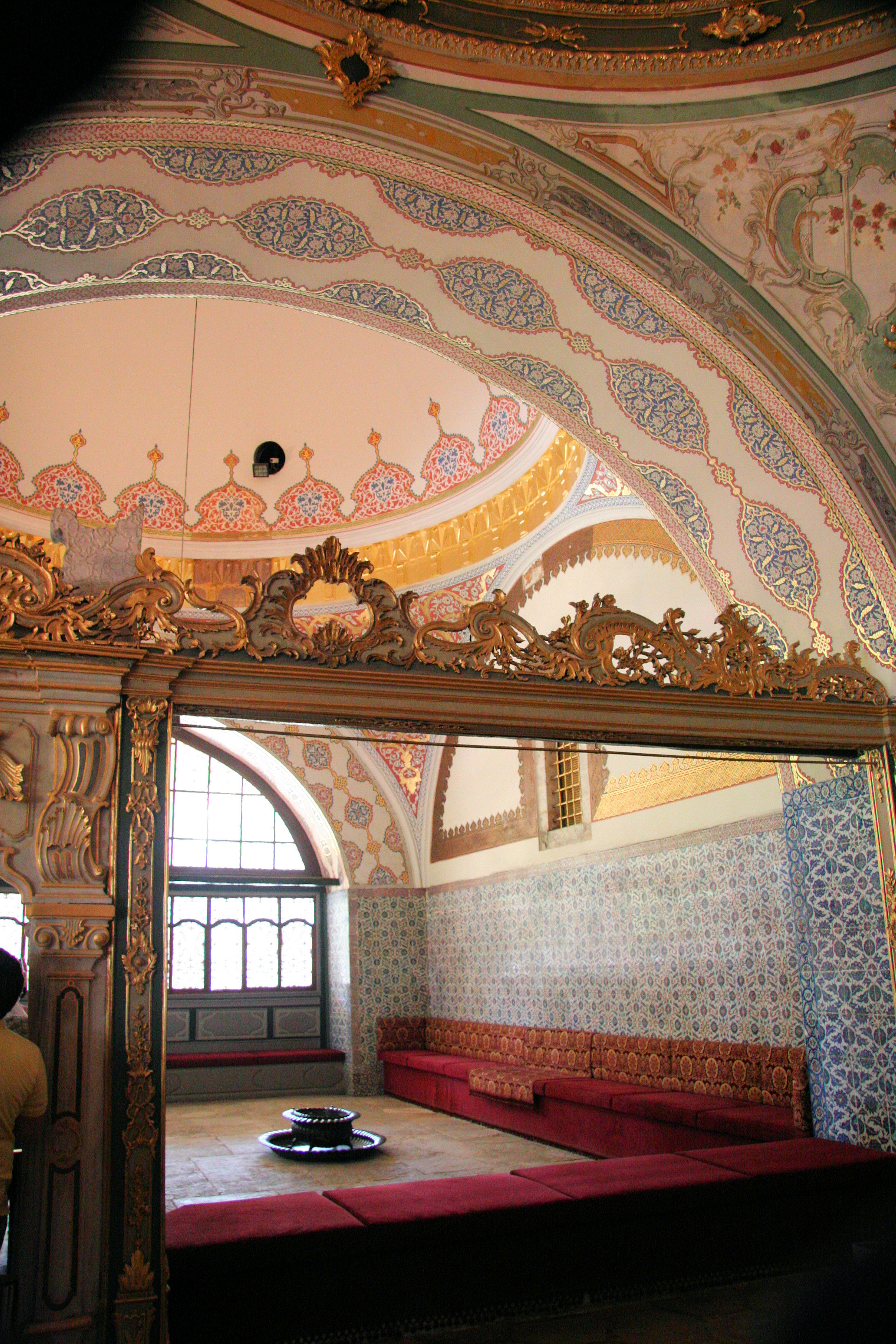
It was beautiful, impressive, intricately decorated - all the superlatives apply - and we wandered around from room to room, area to area..
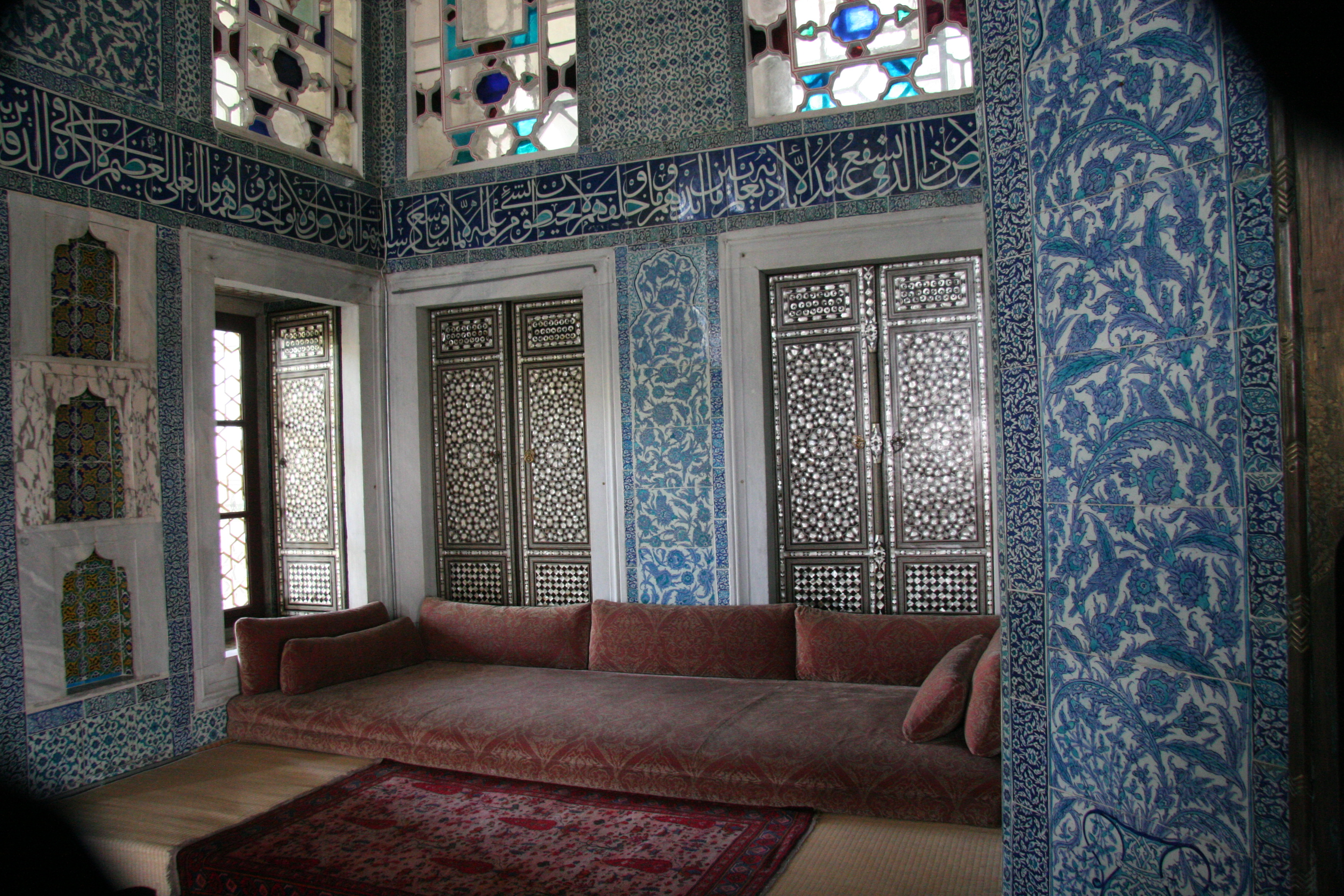
..then more rooms..
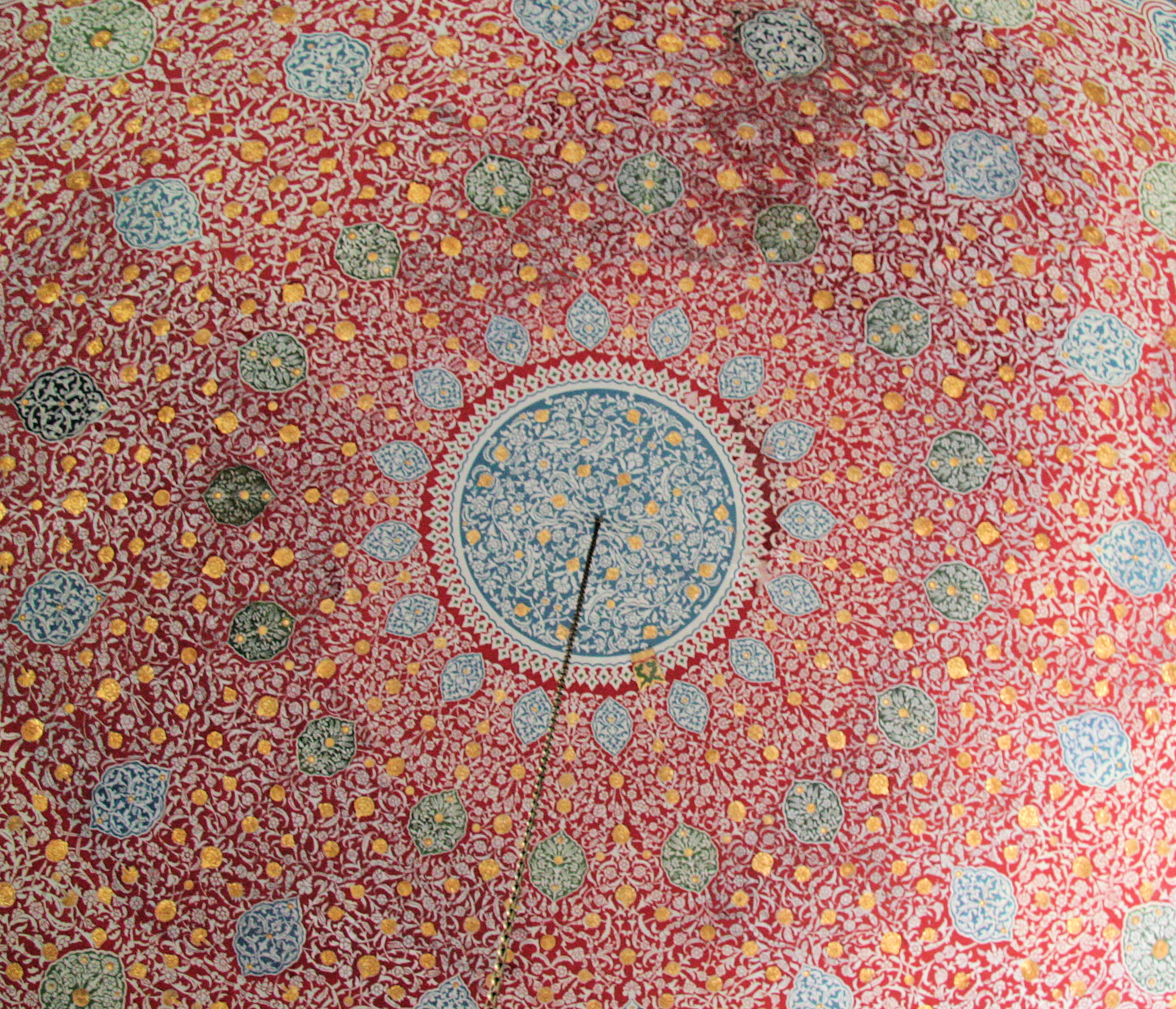
..and more amazing, intricate detail...
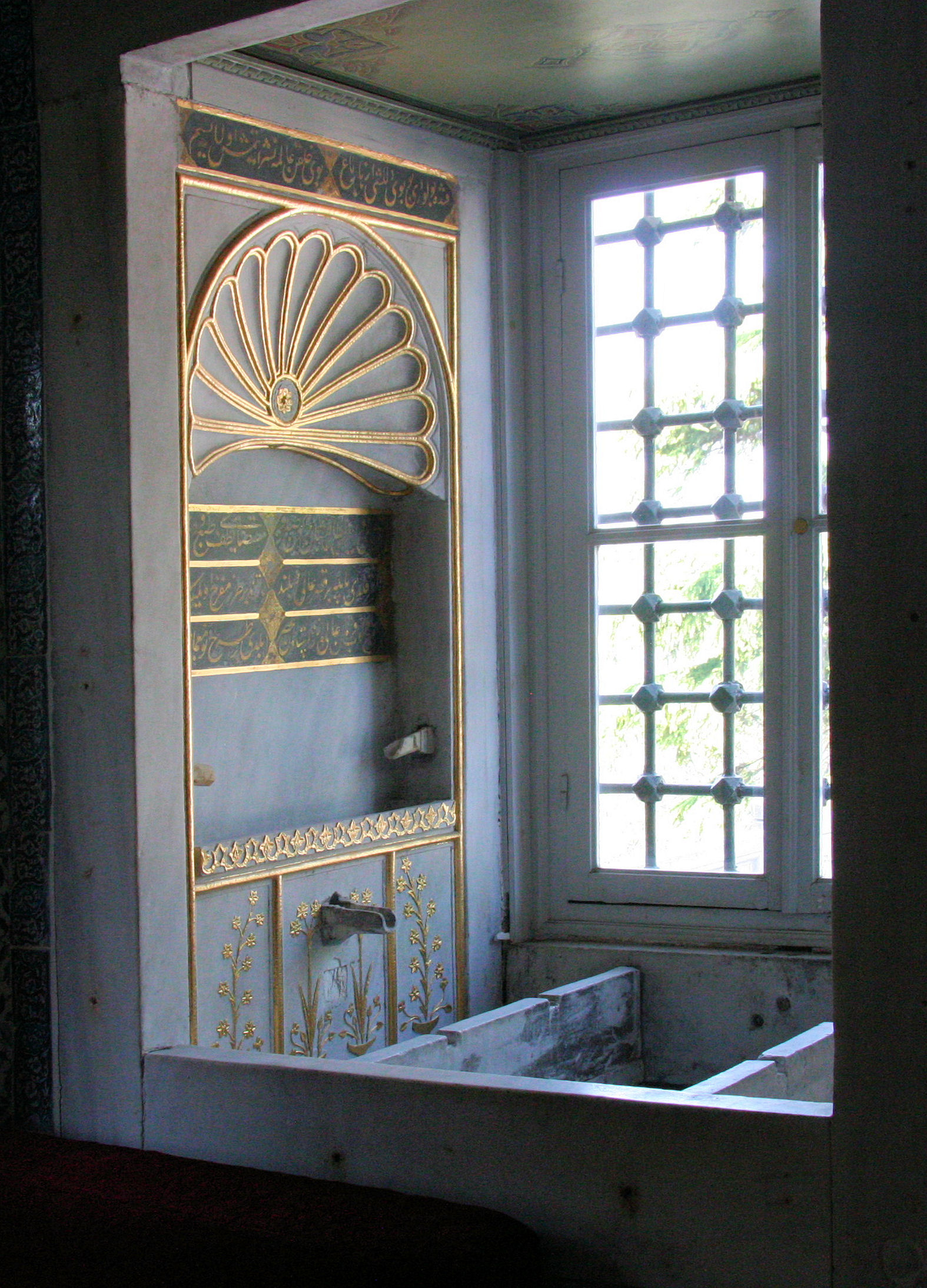
Don't even ask what used to go on in here!
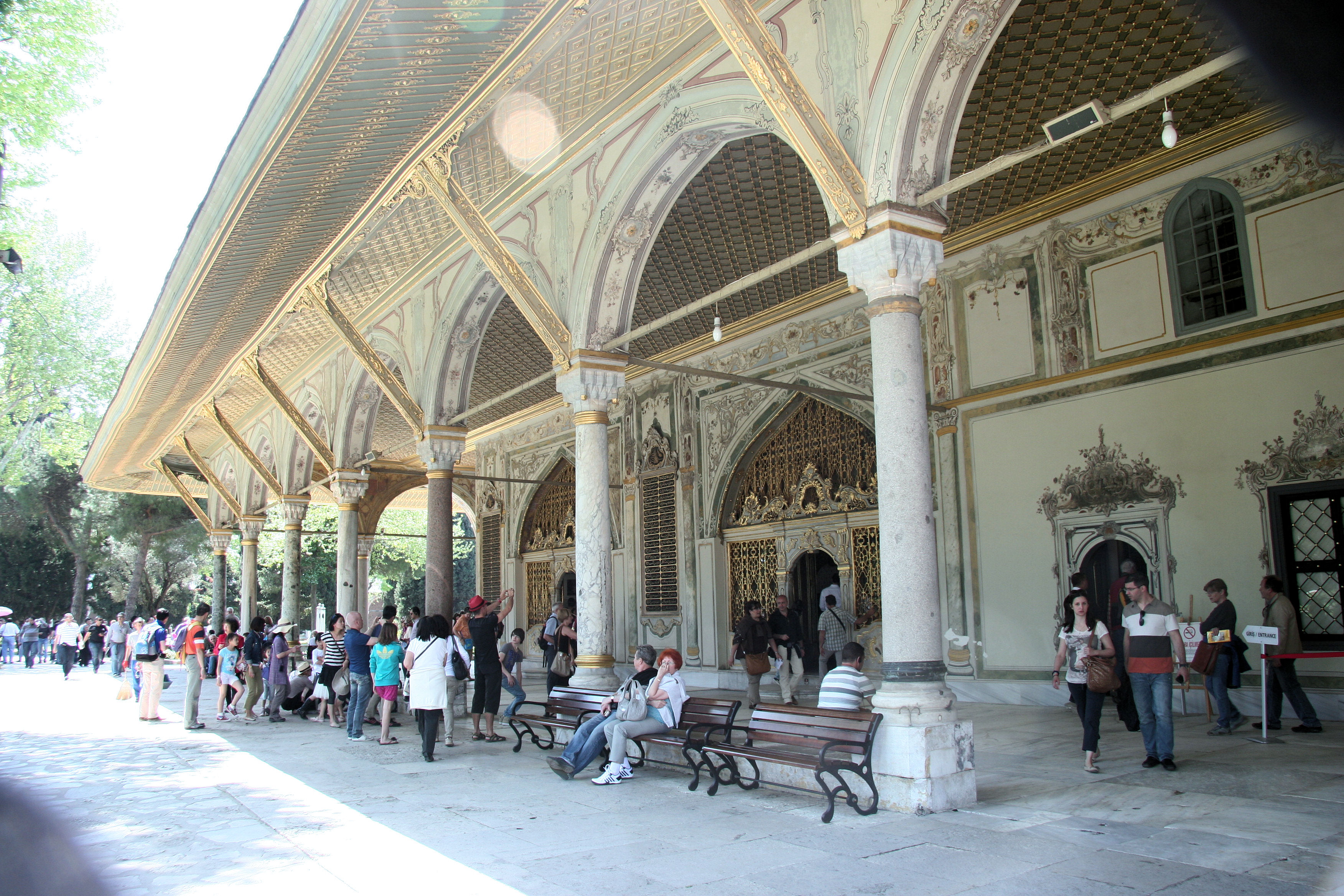
There were some extra special attractions, entrance to which required an extra payment and the need to queue, such as The Armoury. We gave them a miss as I do not like queuing and FW certainly hates paying twice.
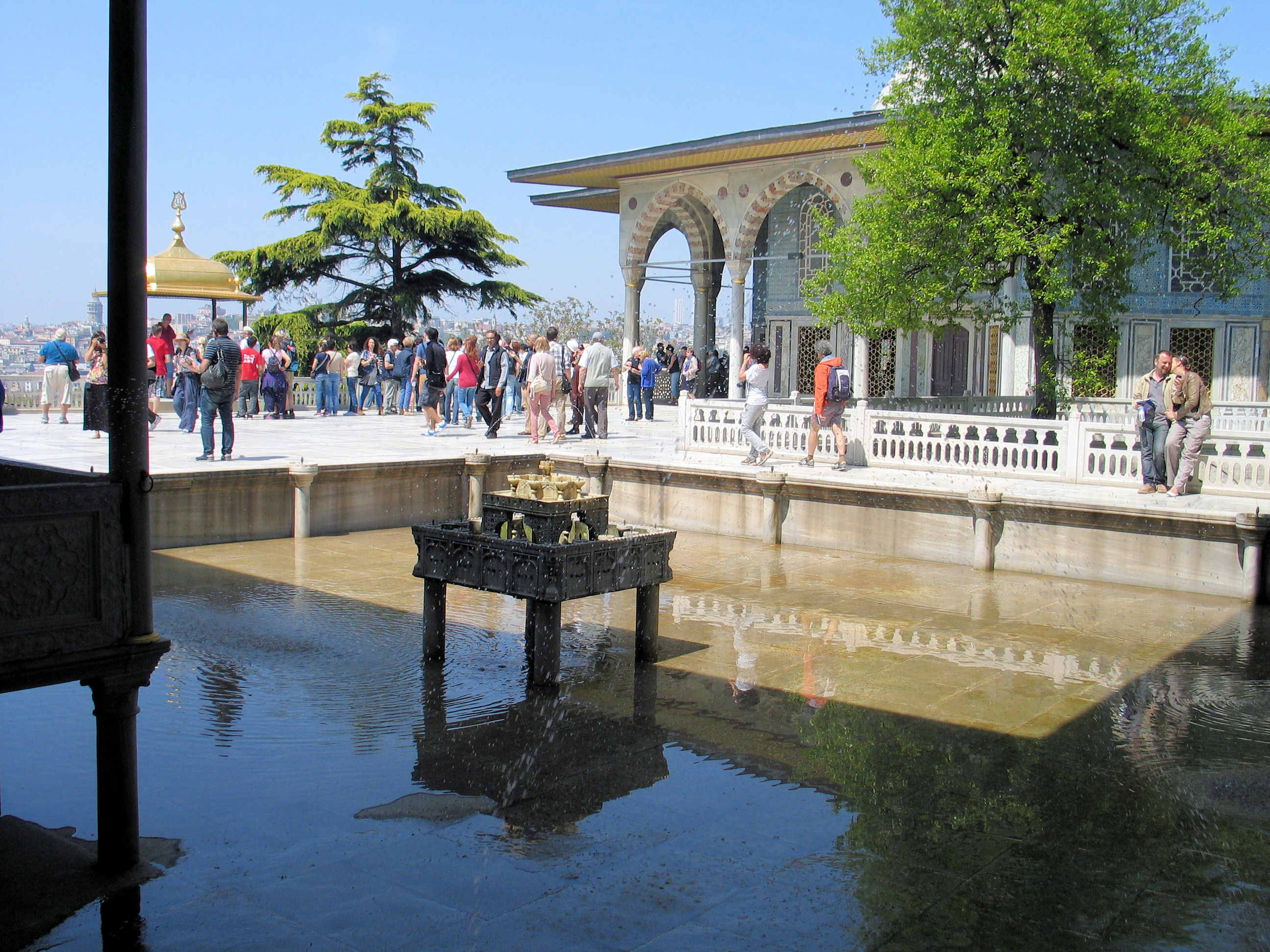
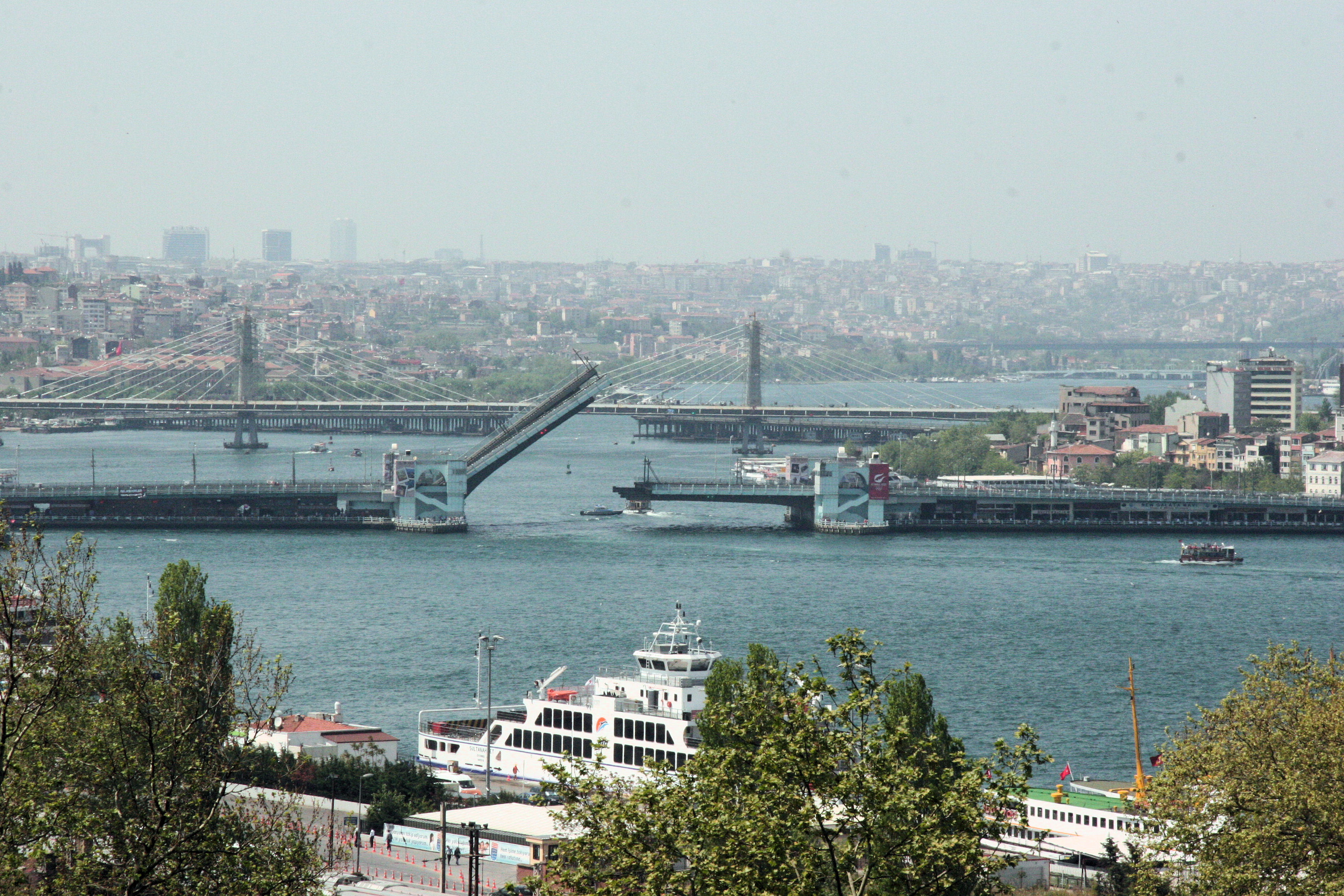
Eventually the museum effect, when everything begins to blur together, began to work on us and we made our way outside the palace to enjoy the views across the city.
"Oh look," exclaimed LSW, "Erdogan is going to let us use his bridge to get home. How considerate!"
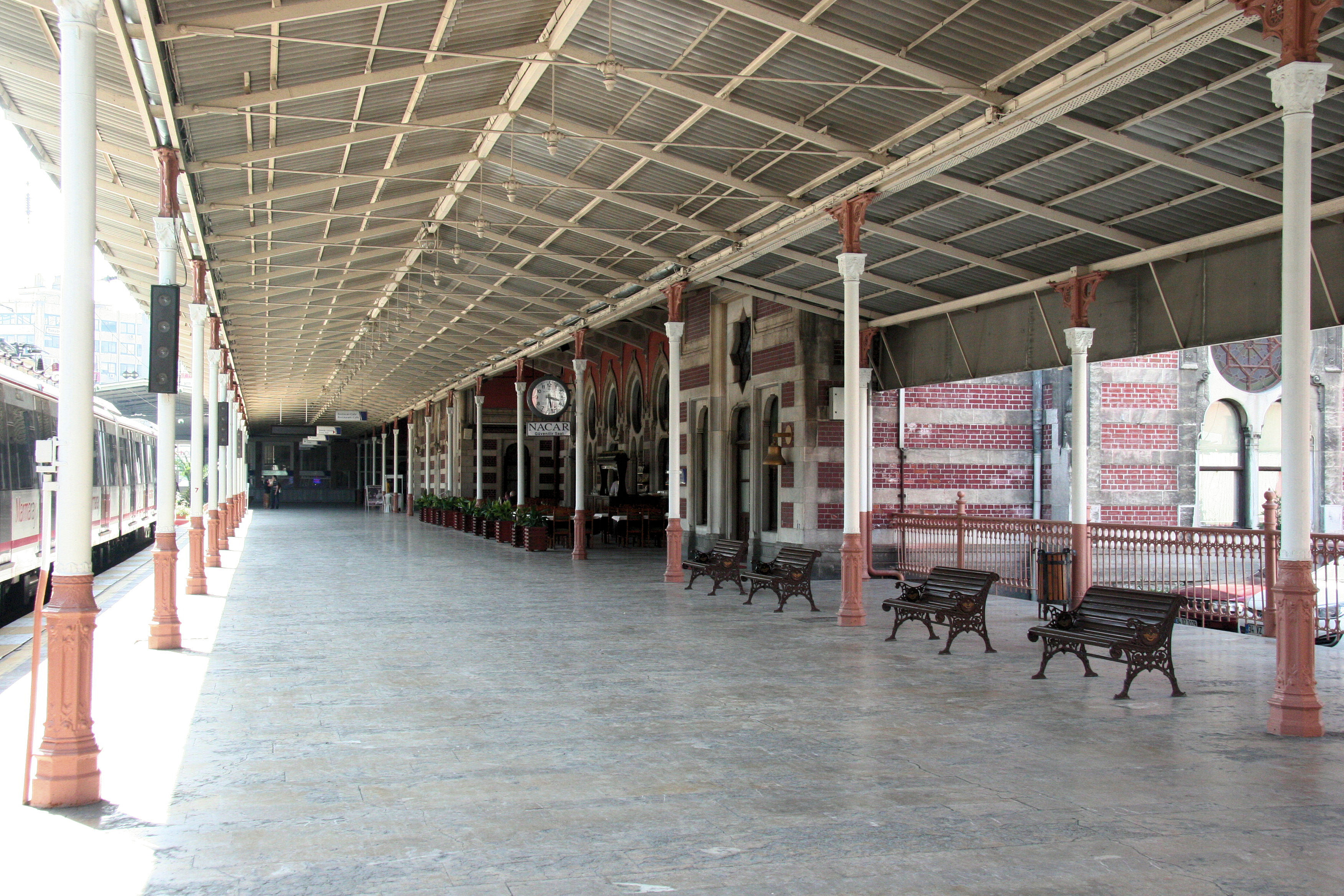
Other places we thought we ought to see included the platform at which the Orient Express used to arrive. Now only suburban trains use it, but there is still a nice bistro there and a vestige of its former atmosphere. The former station hotel is now used for a variety of purposes. We were intrigued by an impressive display of Sufi dancing in one of its large rooms.
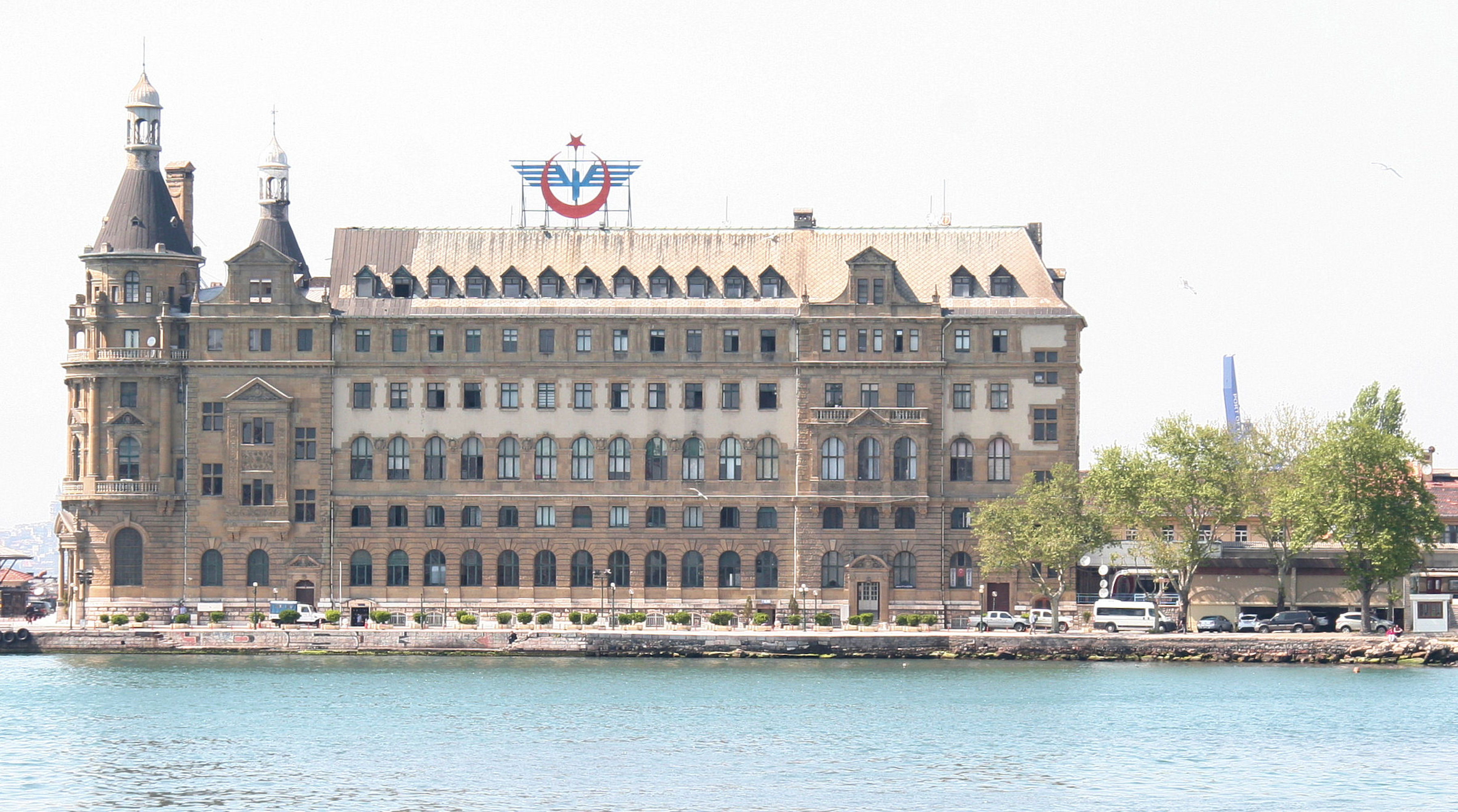
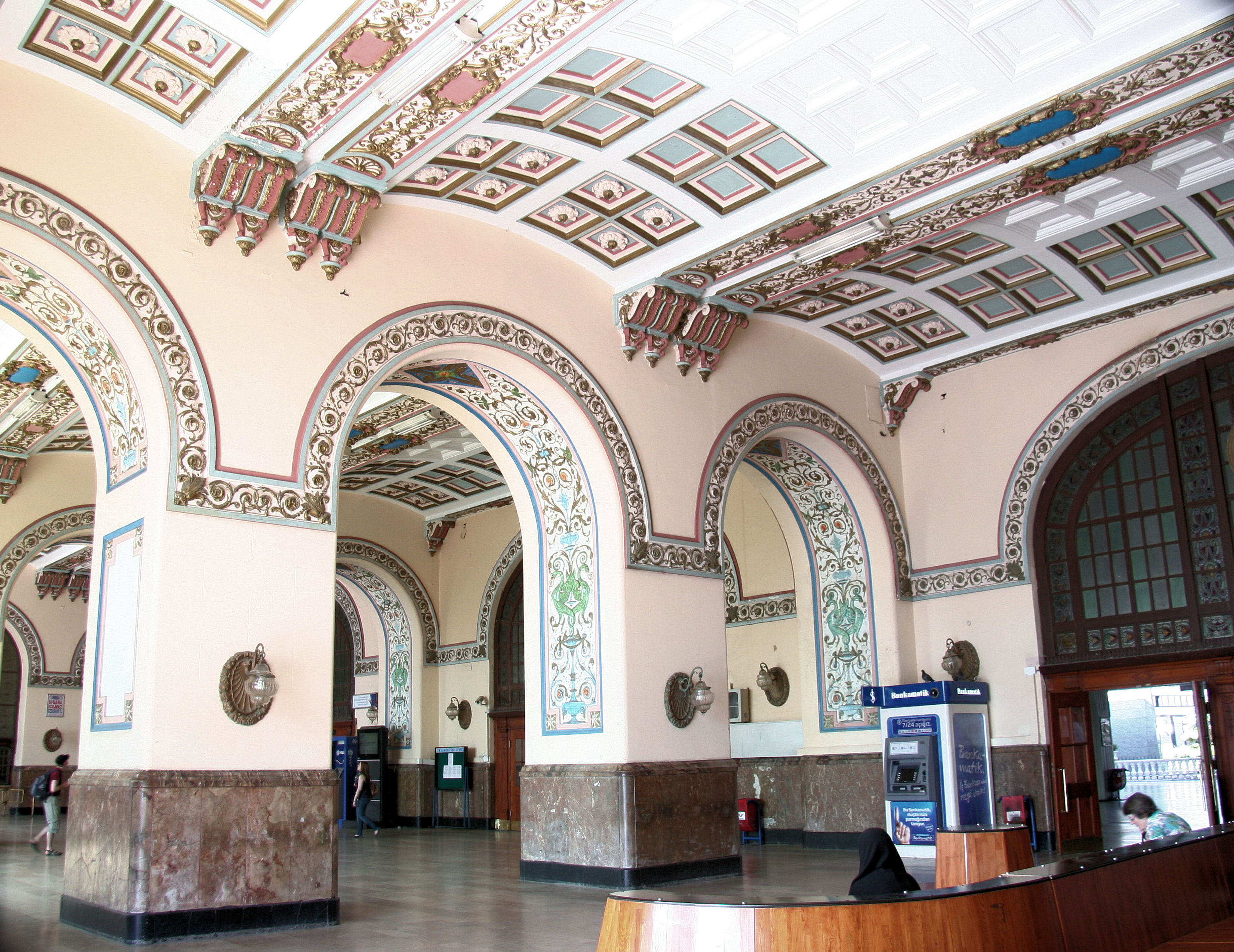
Today the main Istanbul station is on the Asian side, connected to the European part of the city and the rest of the European rail network, by tunnels under the Bosphorus (under construction during our visit). We decided to take a ferry across the Bosphorus to visit the Asian part of the city and see the German built eastern terminal, Haydarpasa Train Station, from where it used to be possible to take trains to Ankara and beyond to Teheran. It too was then functioning only as a suburban train terminal and large parts of it were unused. Nevertheless it was very grand and meticulously maintained. There is now an entirely new station that serves both east and west.
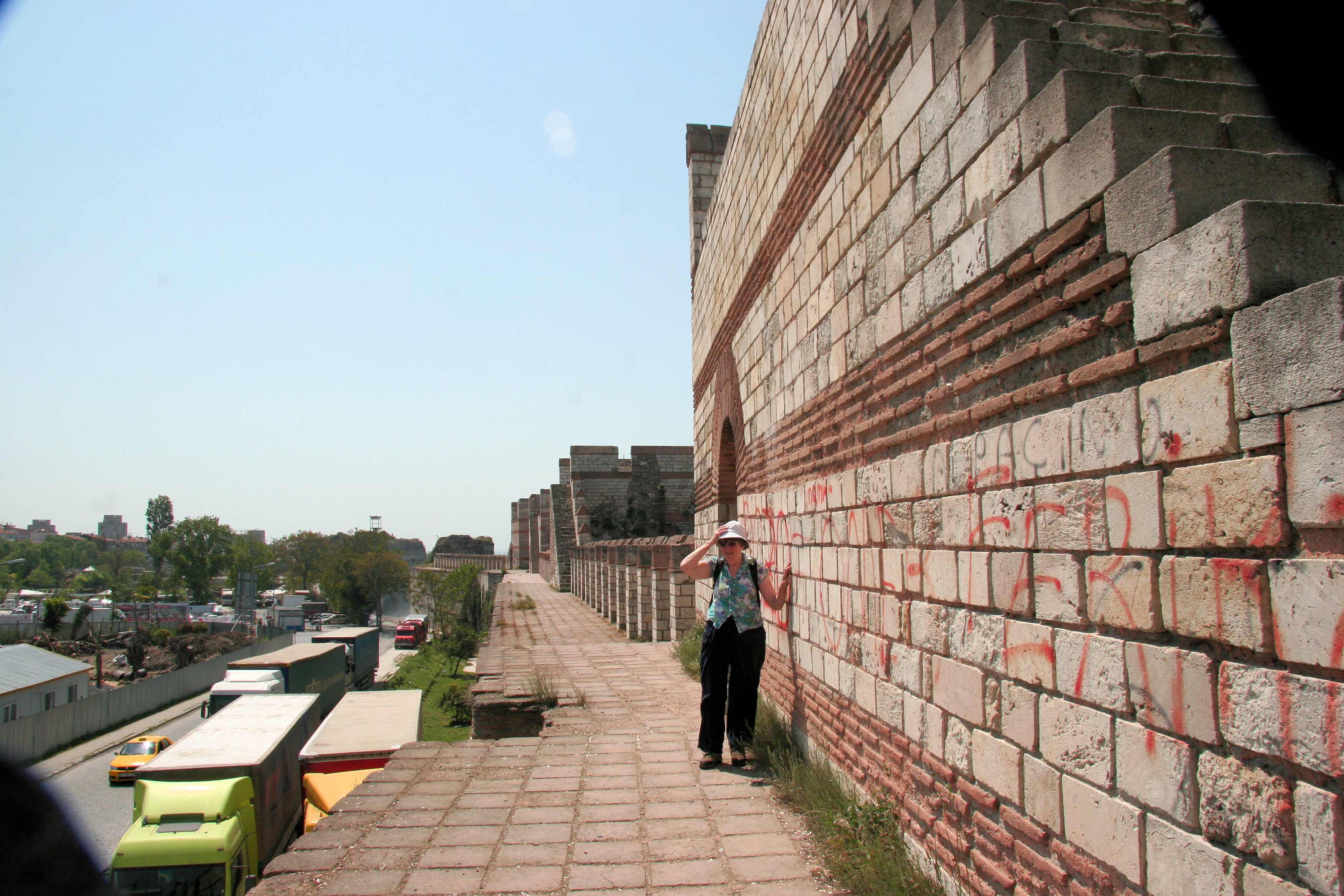 A guidebook we consulted to find our way around spoke of a western fortification, more or less intact, which defended the European approaches to the city. This was the final line of resistance of the Eastern Christian Empire against the Ottomans. We decided to go and find it and perhaps walk along it. It was hard to find and clearly not being promoted as a tourist attraction. There were tramps sleeping in sheltered spots, smashed glass everywhere and graffiti. We decided to retreat.
A guidebook we consulted to find our way around spoke of a western fortification, more or less intact, which defended the European approaches to the city. This was the final line of resistance of the Eastern Christian Empire against the Ottomans. We decided to go and find it and perhaps walk along it. It was hard to find and clearly not being promoted as a tourist attraction. There were tramps sleeping in sheltered spots, smashed glass everywhere and graffiti. We decided to retreat.
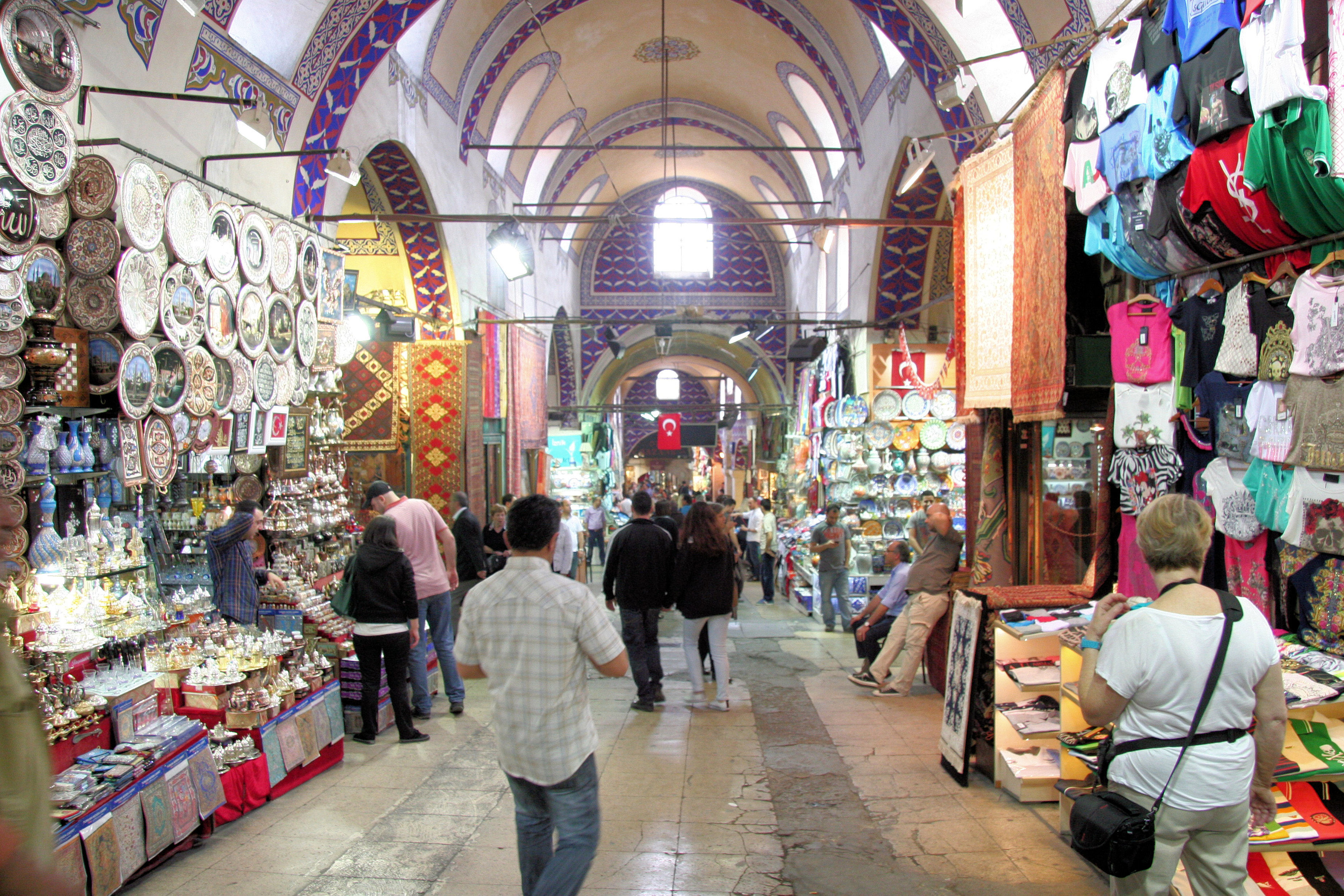 ,
,
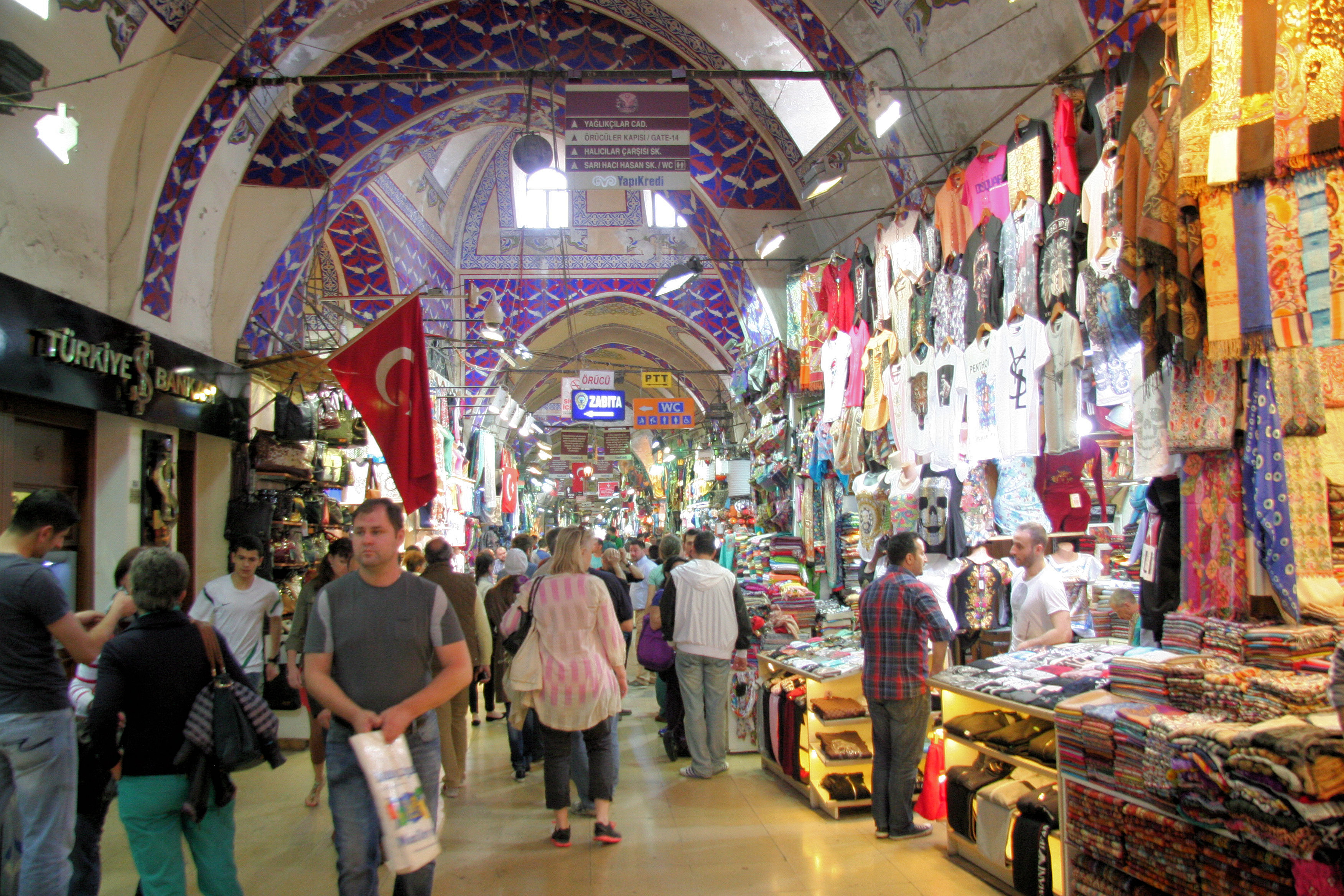
And, of course, the Bazaar - not really my scene - but interesting to walk through.
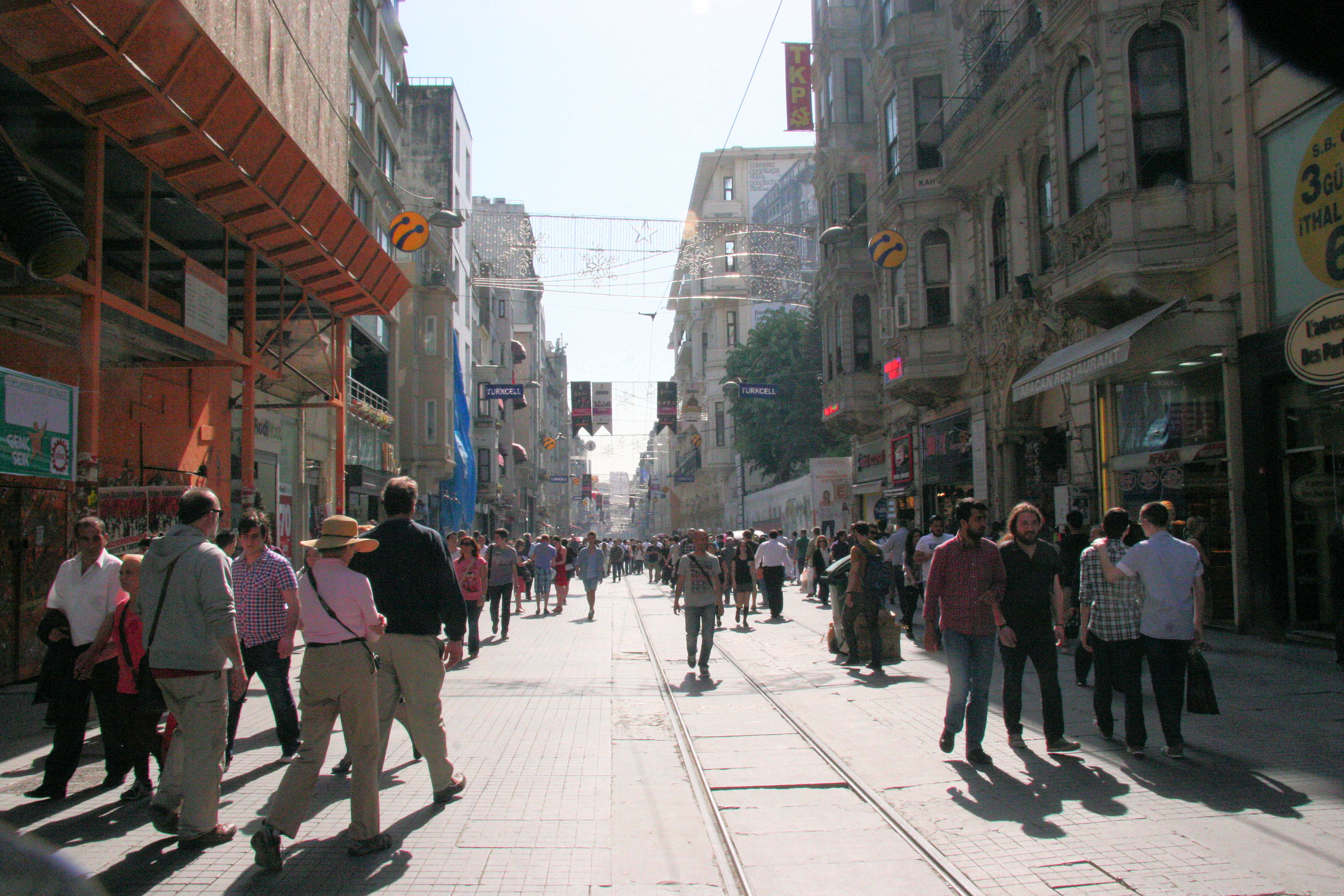
From Taksim Square, the site of serious riots a few weeks after our departure, a busy pedestrian street, Istikial Caddesi, runs downhill to the Galata tower. A vintage tram runs up and down its length, ringing its bell to part the swirling throng of people. Here we gave in to tourist pressure and indulged in a selection of Turkish delight.
About two weeks into our trip our party divided into two. FW and C&ESW left Istanbul a couple of days ahead of us to fly further east to Cappadocia, where they had booked a walking tour of the region. We found ourselves up before sunrise to see them off (or as FW put it, to make sure they had gone!) The apartment suddenly seemed empty and we felt a bit flat.We passed the remaining day and a half preparing for our journey home, which was to take a long way round via Greece and Italy, by having a practice trip to the hydrofoil terminal..
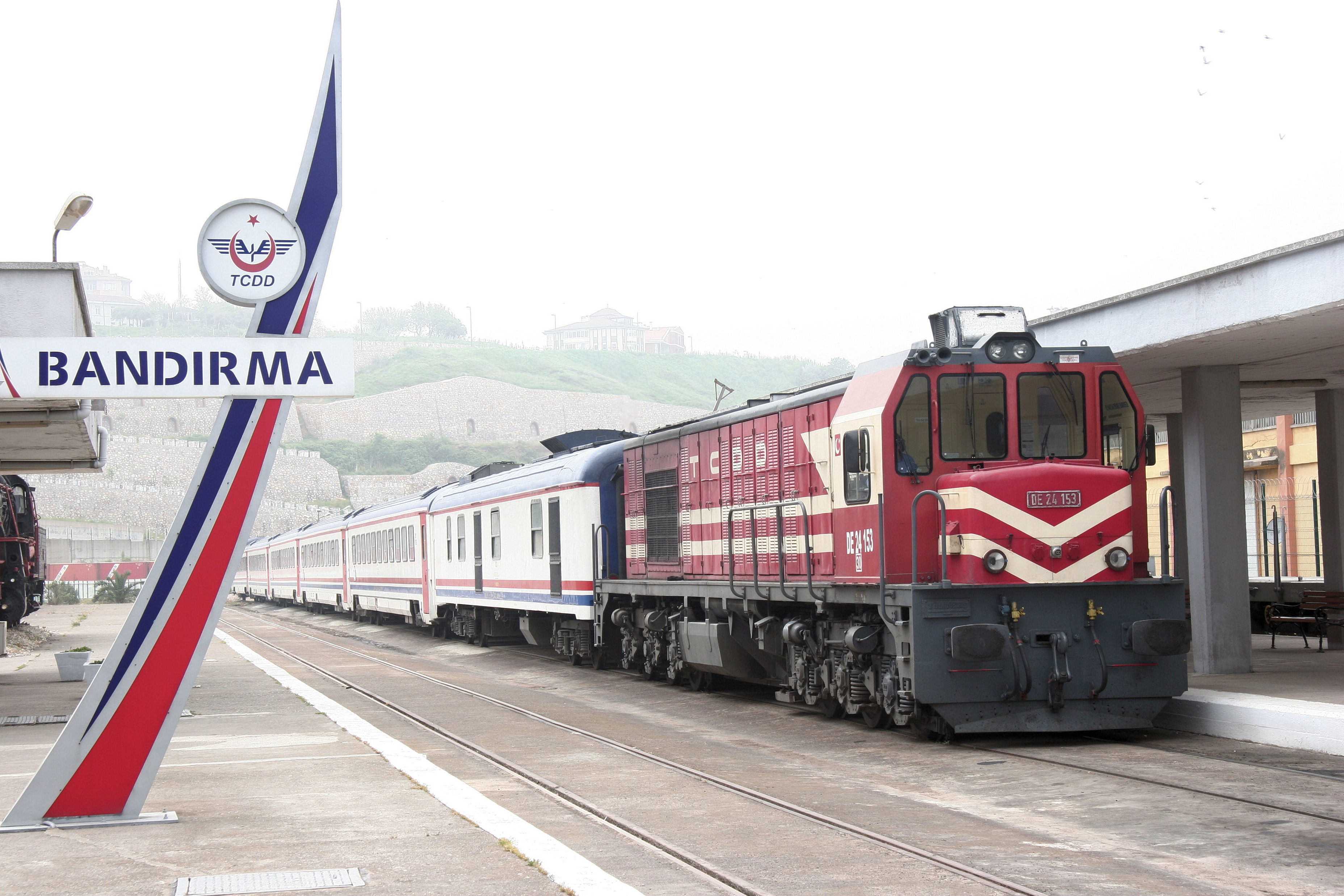
We have always wanted to visit Ephesus and to achieve this we had first to get to Izmir. This meant an early morning taxi ride from the apartment, a hydrofoil ferry across the Bosphorus to the port of Bandirma and then a very interesting and long traIn ride. All went according to plan, although the train was very late, and we found ourselves in our hotel, next to the station by seven in the evening.
Istanbul is a very open and cosmopolitan city. The people are warm and friendly and it did not feel entirely foreign. In Izmir our first problem was to find somewhere to eat and we walked around a few blocks close to the hotel, looking for a restaurant, something that would not have been a problem anywhere in Istanbul. Here it was different. All the eating places were full of men. Only men. LSW felt uncomfortable just looking in through the door. We retreated to the hotel and used their expensive but adequate dining room.
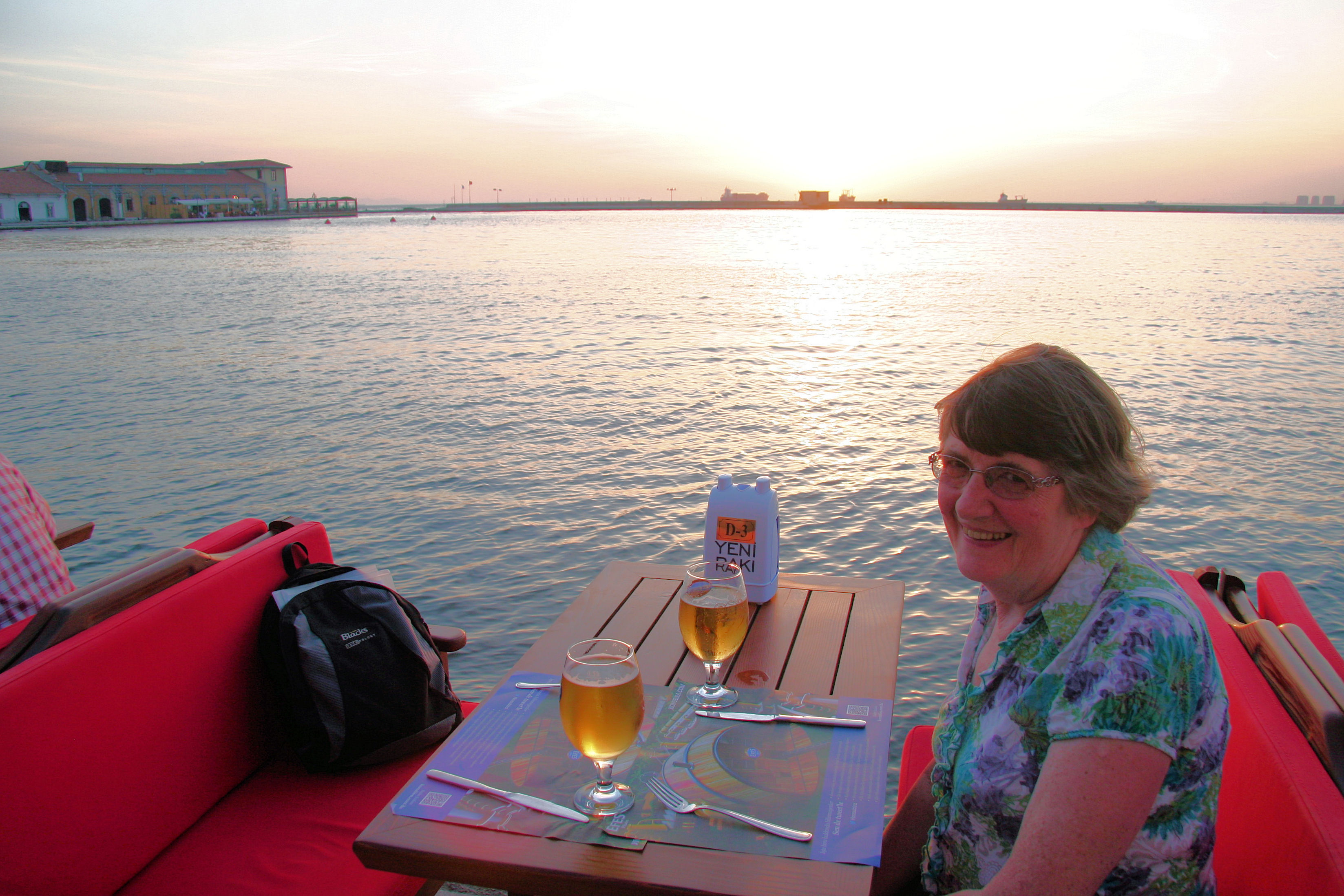
Later we did succeed in finding a more relaxed, tourist oriented part of Izmir, where LSW was prepared to eat.
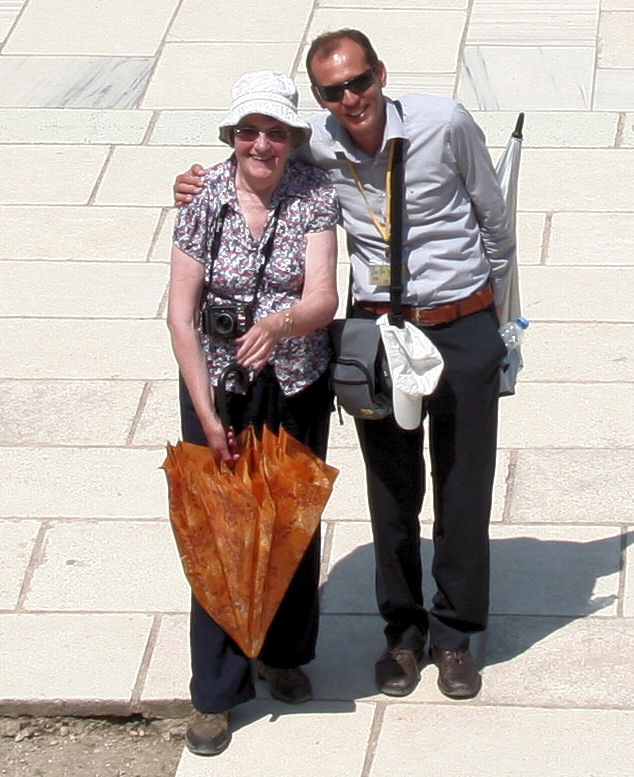
This is Ali, our guide who picked us up at our hotel in a luxurious mini bus with driver and drove us the forty miles or so to Ephesus. He was erudite, well informed, spoke perfect English and gave us a wonderful tour of Ephesus. He was a very nice man and I liked him a lot, though before the end of the trip we had a serious falling out.
Ephesus lived fully up to our expectations. It is the most spectacular historical site we have ever visited. Ali was clearly a very senior tour guide. There were lots of guides conducting large parties around, but they all hung back from Ali and his party of two. If we were standing being told about a particular building, other guides would wait at some distance until Ali had finished his discourse and I had taken my photograph. Here is a very small percentage of them.
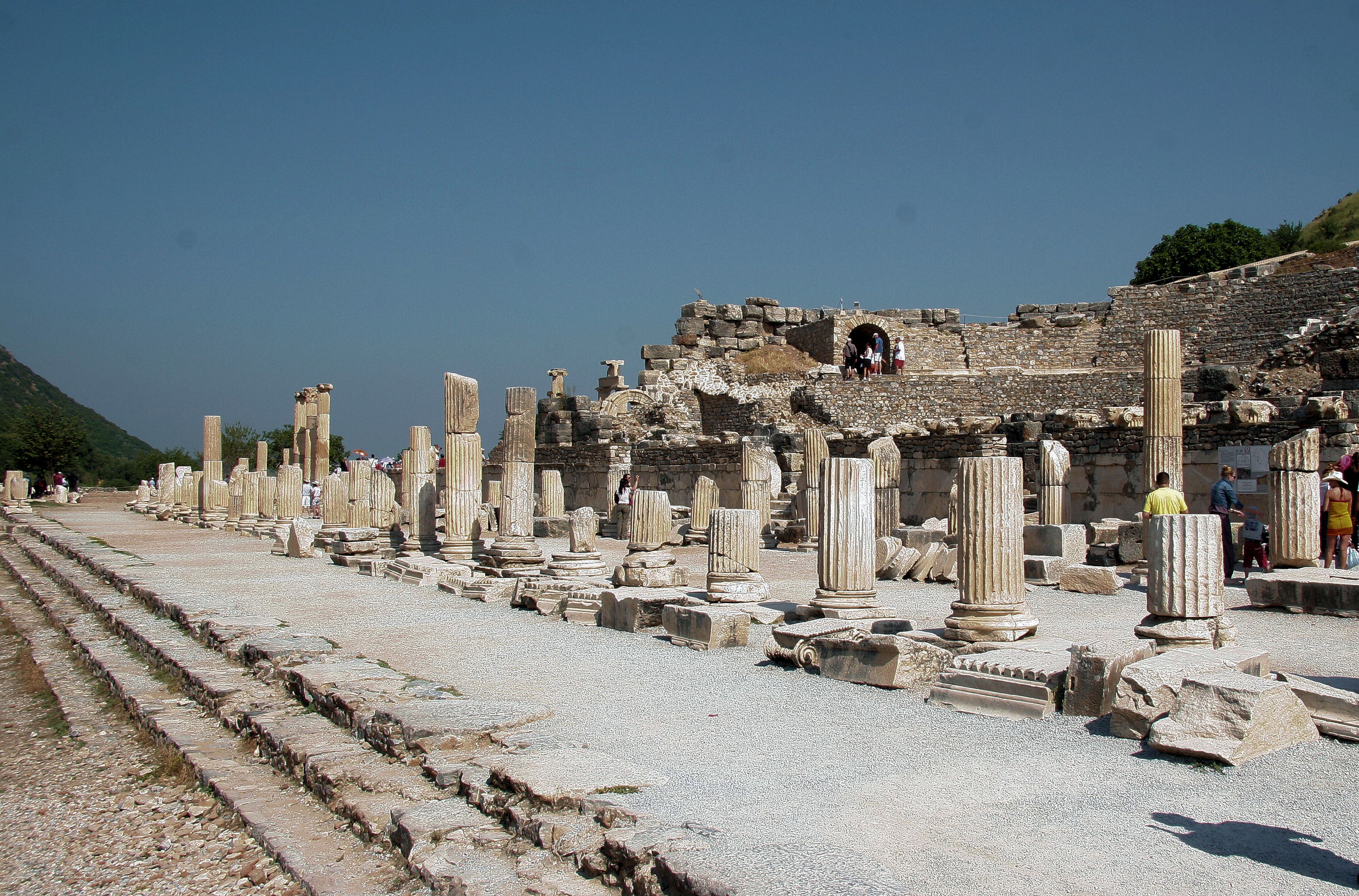
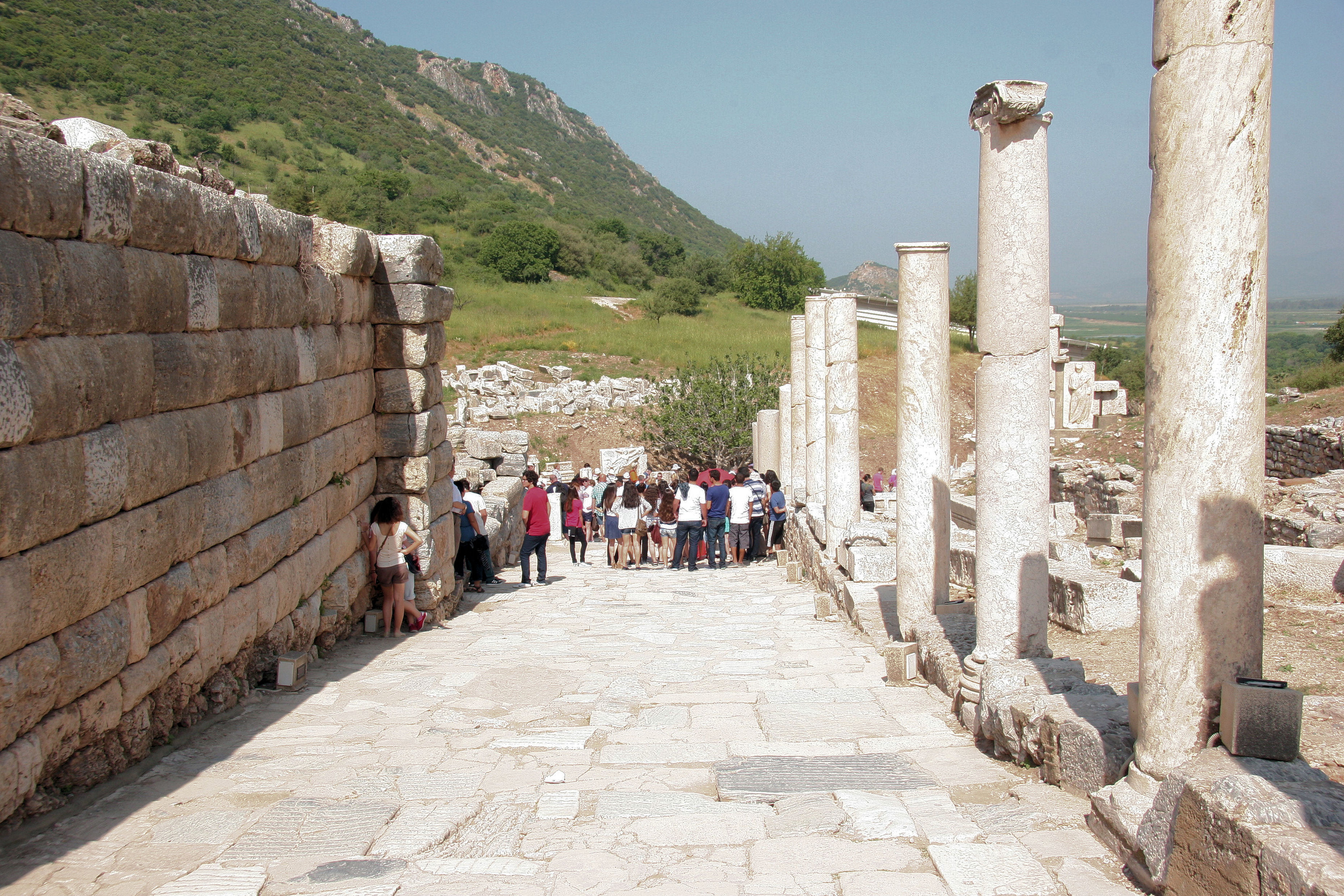
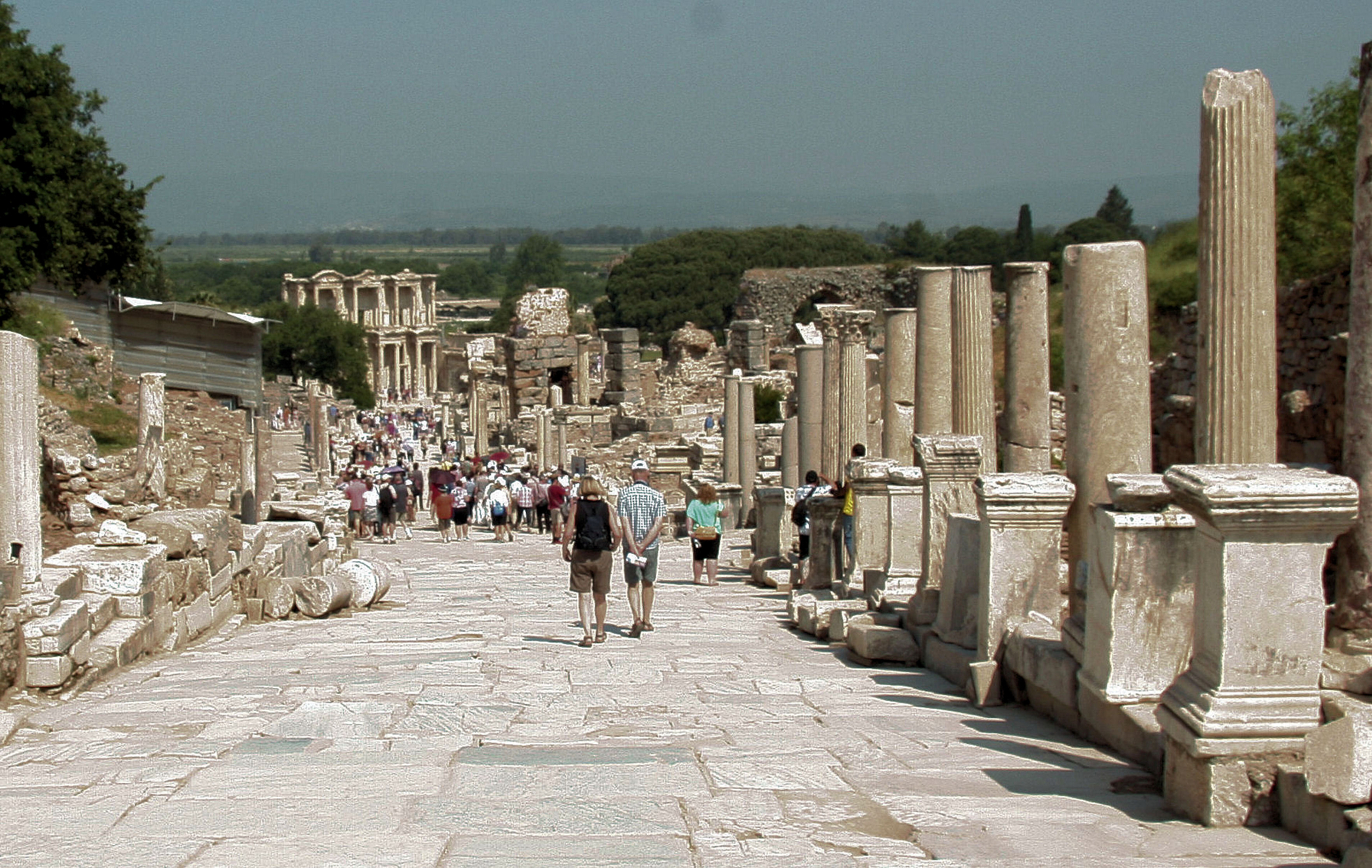

This is The Library, the most complete building.
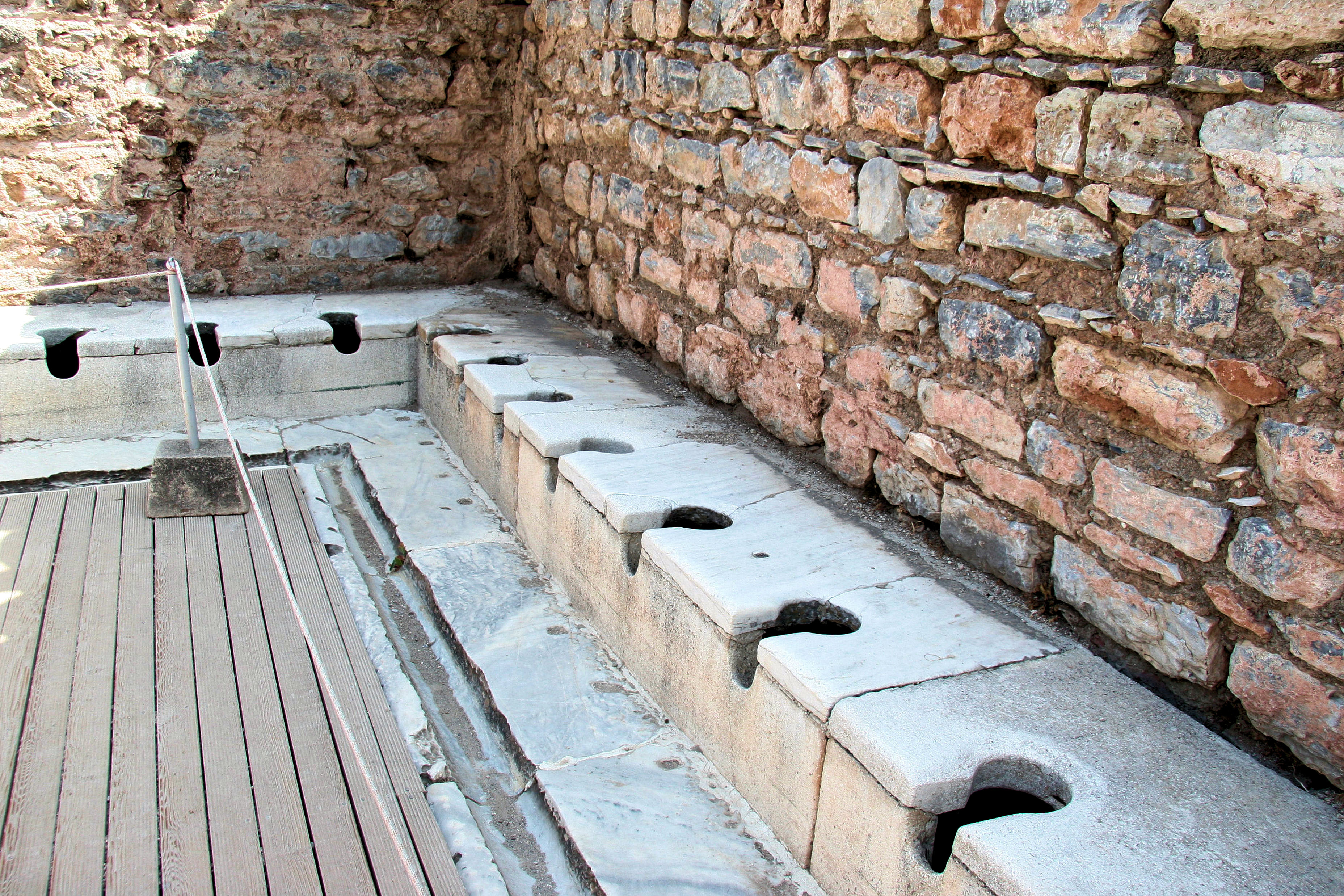
Yes! That is exactly what it is...
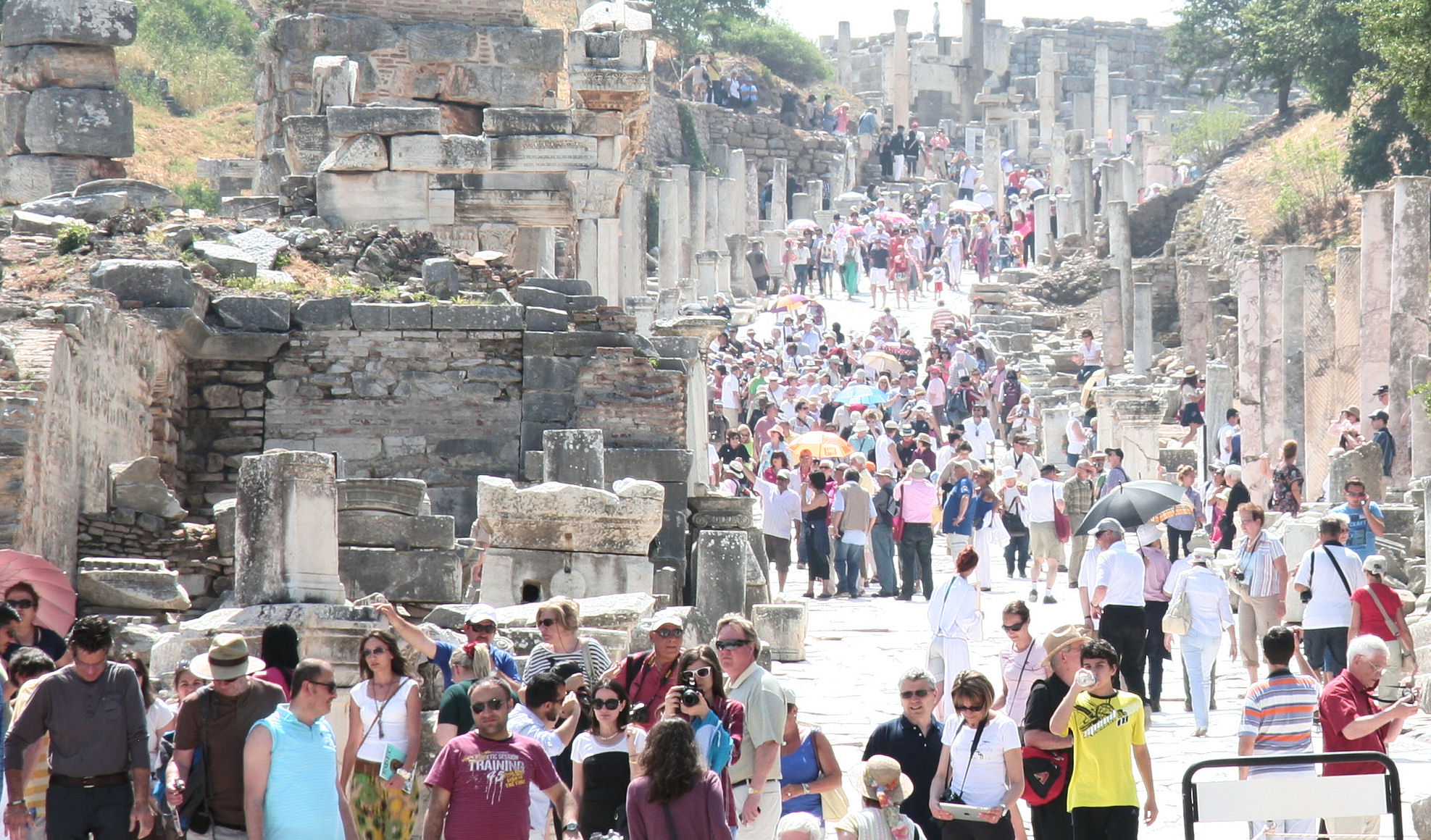
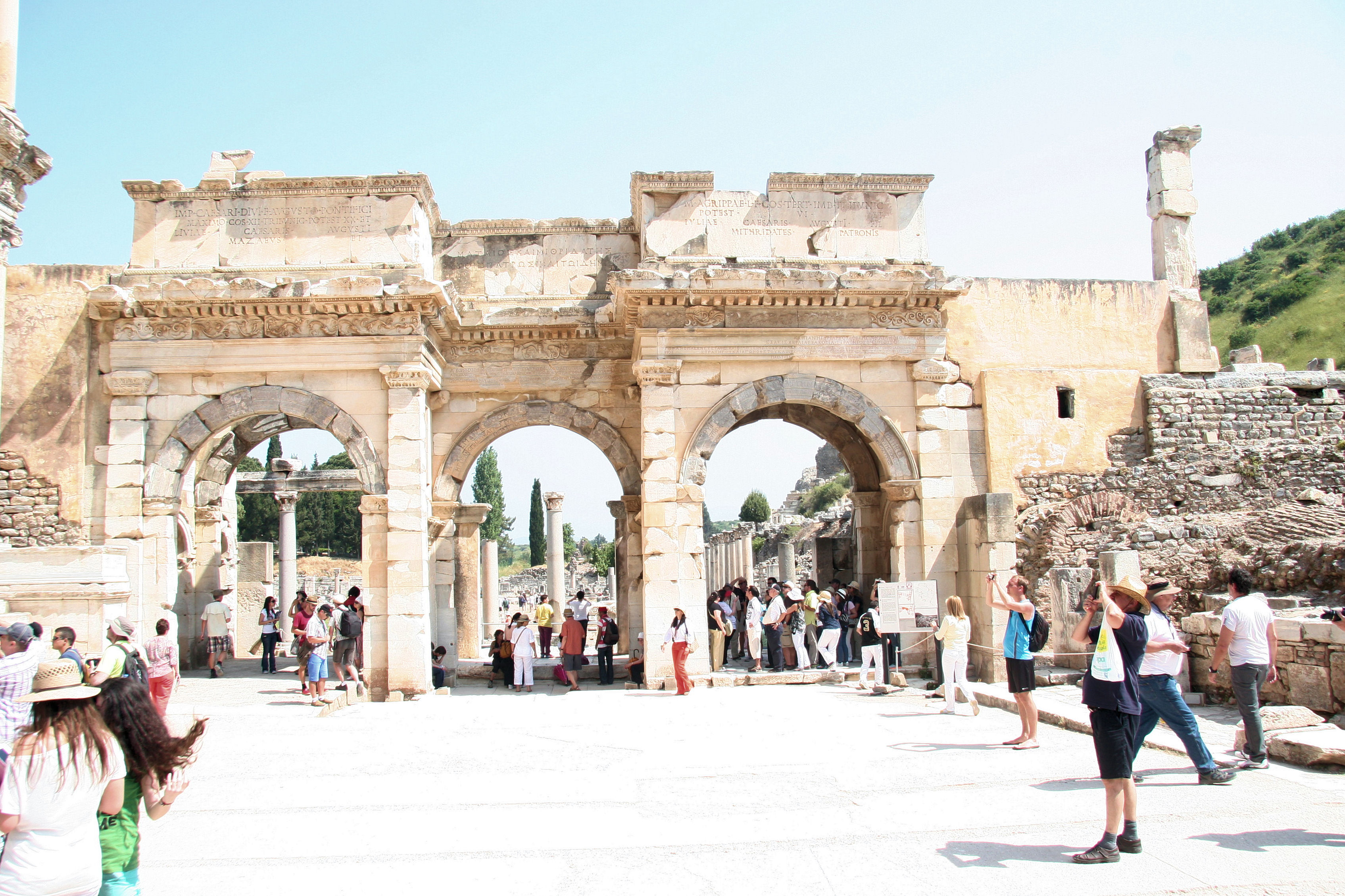
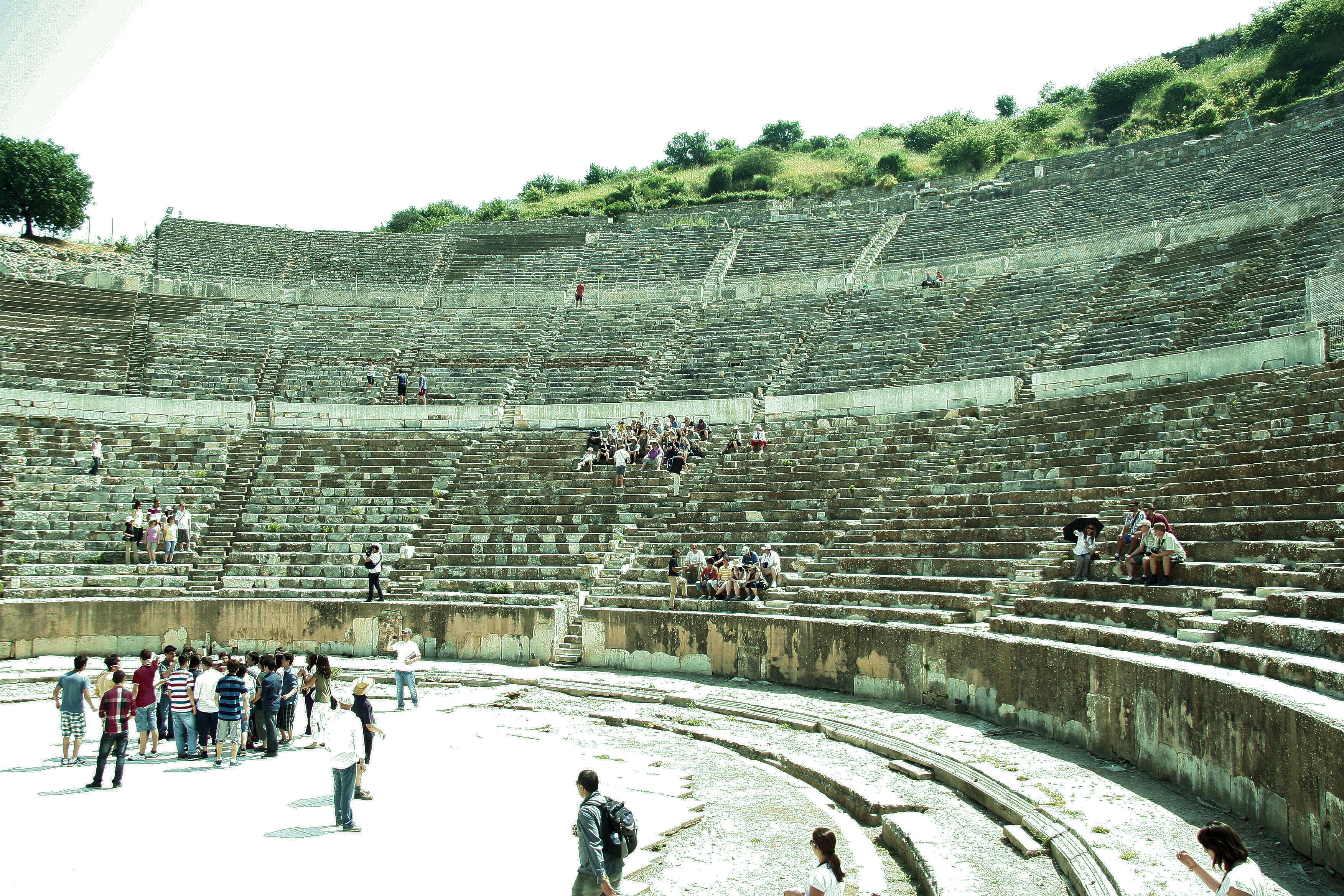
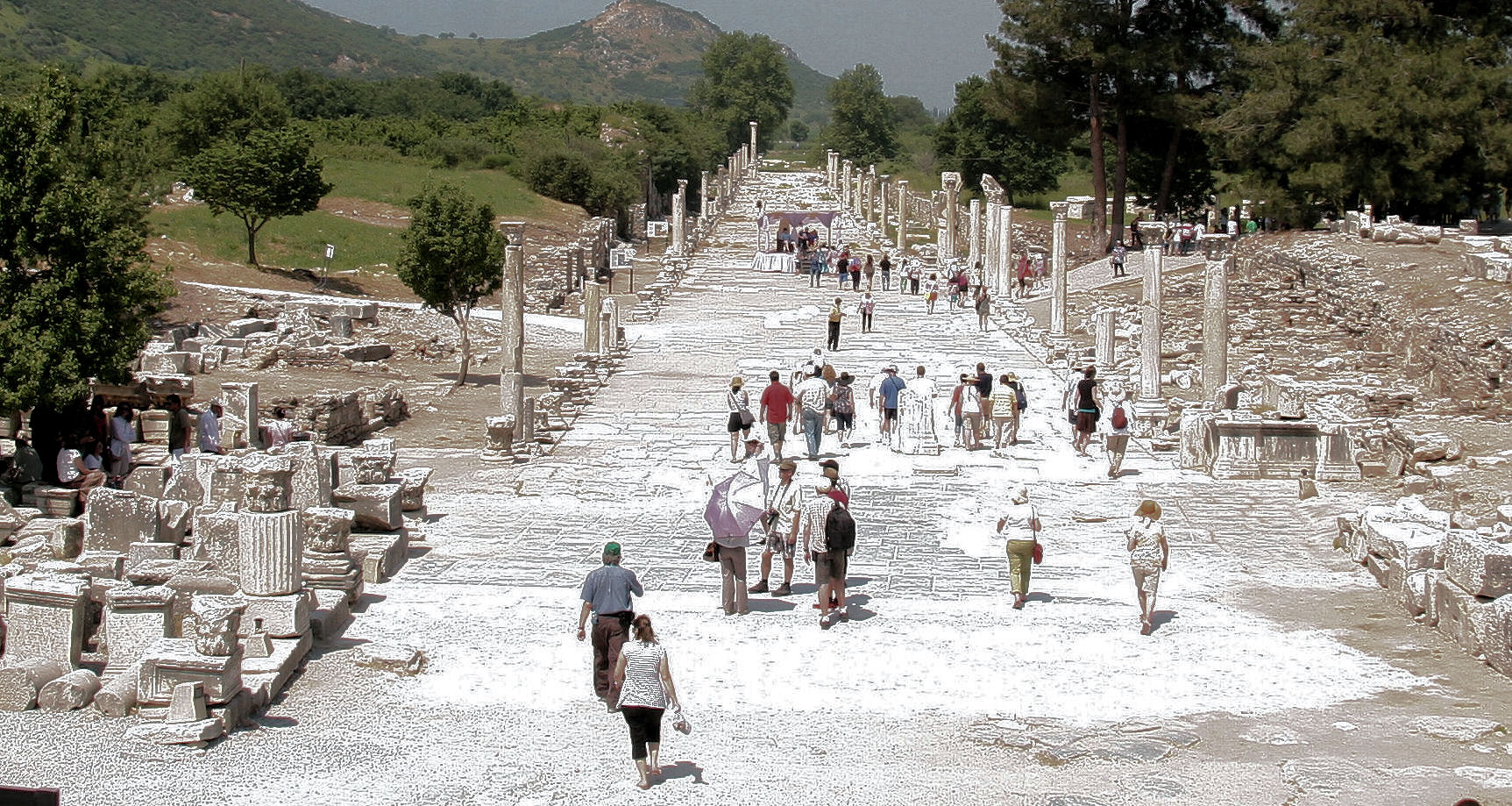
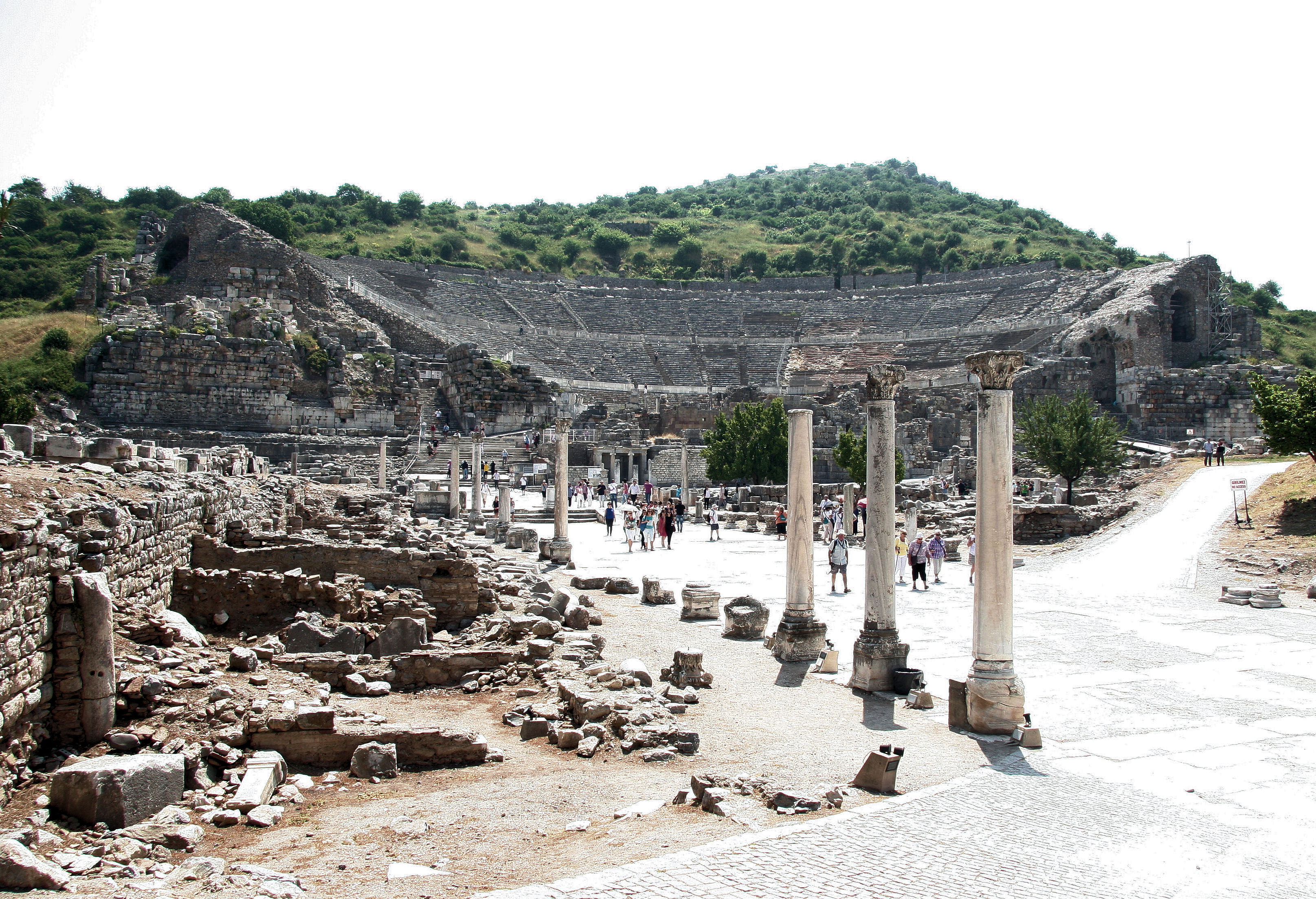
Ephesus as seen today covers several acres, but only about thirty percent of the site has been excavated. The streets we walked along, where Paul himself might have trod, simply disappear into the hillside.
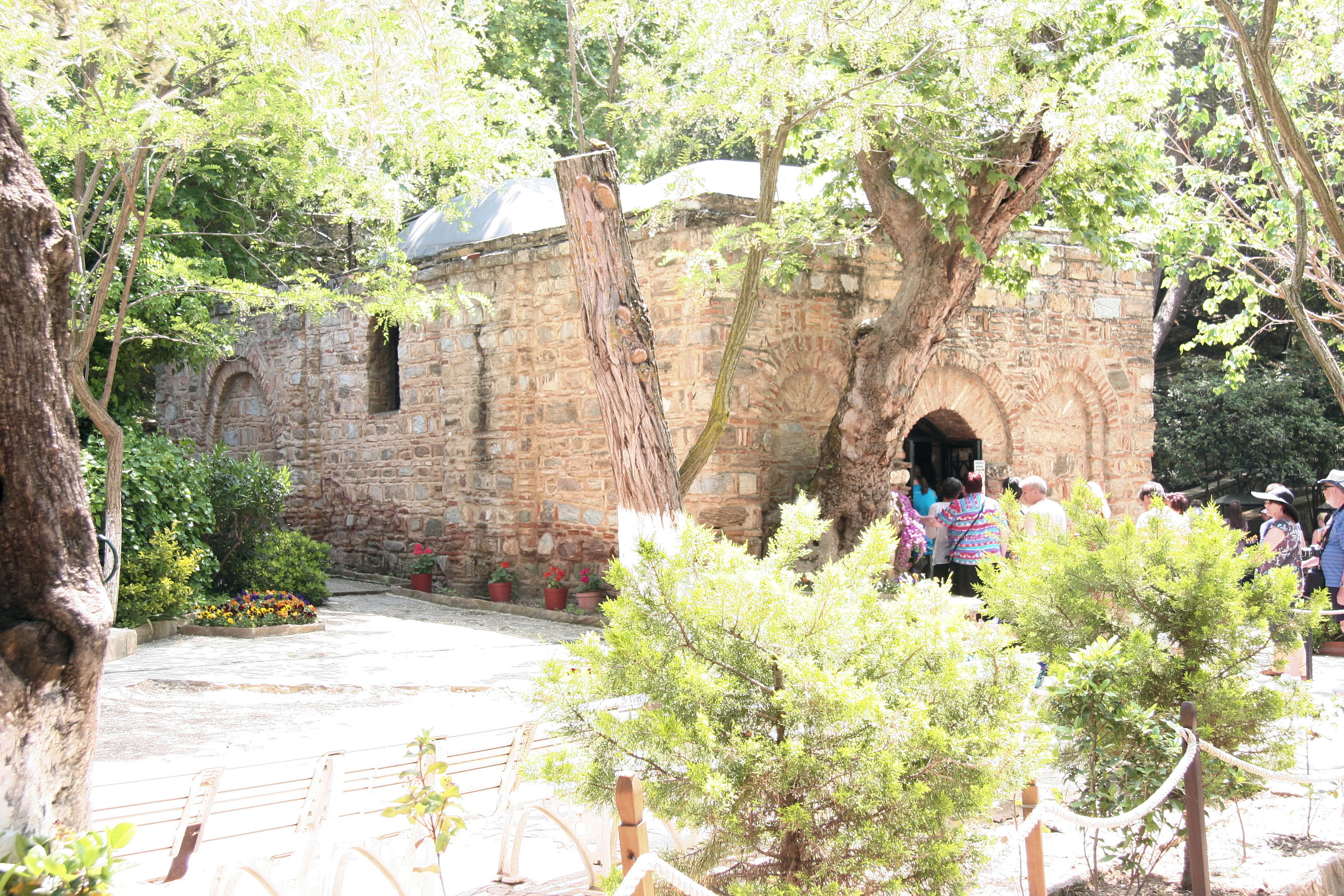
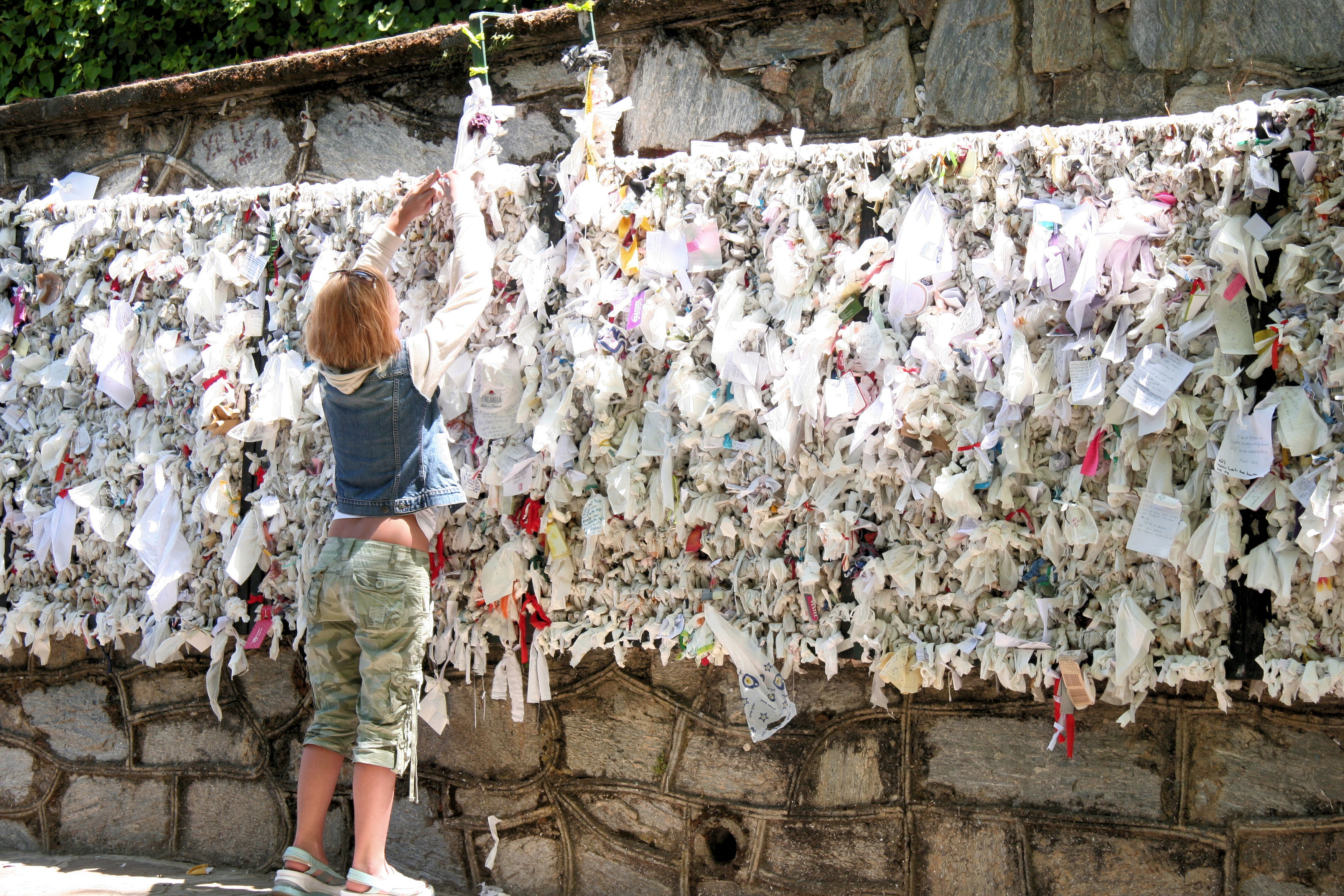
Close to Ephesus is another site with a more dubious pedigree known as the Shrine of Mary. This is sacred to both Christians and Muslims and associated with it is a well said to be endowed with curative powers. Pilgrims stuff their petitions to Mary into cracks in a wall. We decided not to take advantage of this facility as there was no conclusive evidence to suggest a successful outcome.
As part of the Ephesus tour, something we had not asked for, we were taken and shown round a small carpet factory where young girls with the necessary small nimble fingers were hand weaving carpets. As a group of two we were shown round the various stages of the process and found it all mildly interesting. Next we were shown into a large demonstration hall where the real point of the exercise began. First we were offered refreshments and then shown a large number of carpets which were unrolled in front of us by a team of men. An enormous effort was being made for just the two of us and the feeling of obligation to respond became unbearable. I suppose that normally these private tours would be patronised by quite well off people who might well not mind an unplanned expenditure of several hundred Euros for something that had taken their fancy.The torture went on for about half an hour. Small carpets that would hang on a wall, exquisite silk carpets... by this time the pile of carpets was several feet high...but we held out. FW would have been proud of us. The reality was that we had stretched the budget to pay for this private tour and simply could not afford anything extra.
When we finally staggered back to the minibus Ali informed us that he was now taking us to leather working factory which proved a final straw for LSW who flatly refused to go. Ali began to talk of poorly paid workers who depended on tourism by the wealthy West but was silenced again by LSW who pointed out that the customer, who was paying for the service did not have to submit to anything she did not want to do. A stony silence prevailed for a while as we drove back to Izmir.
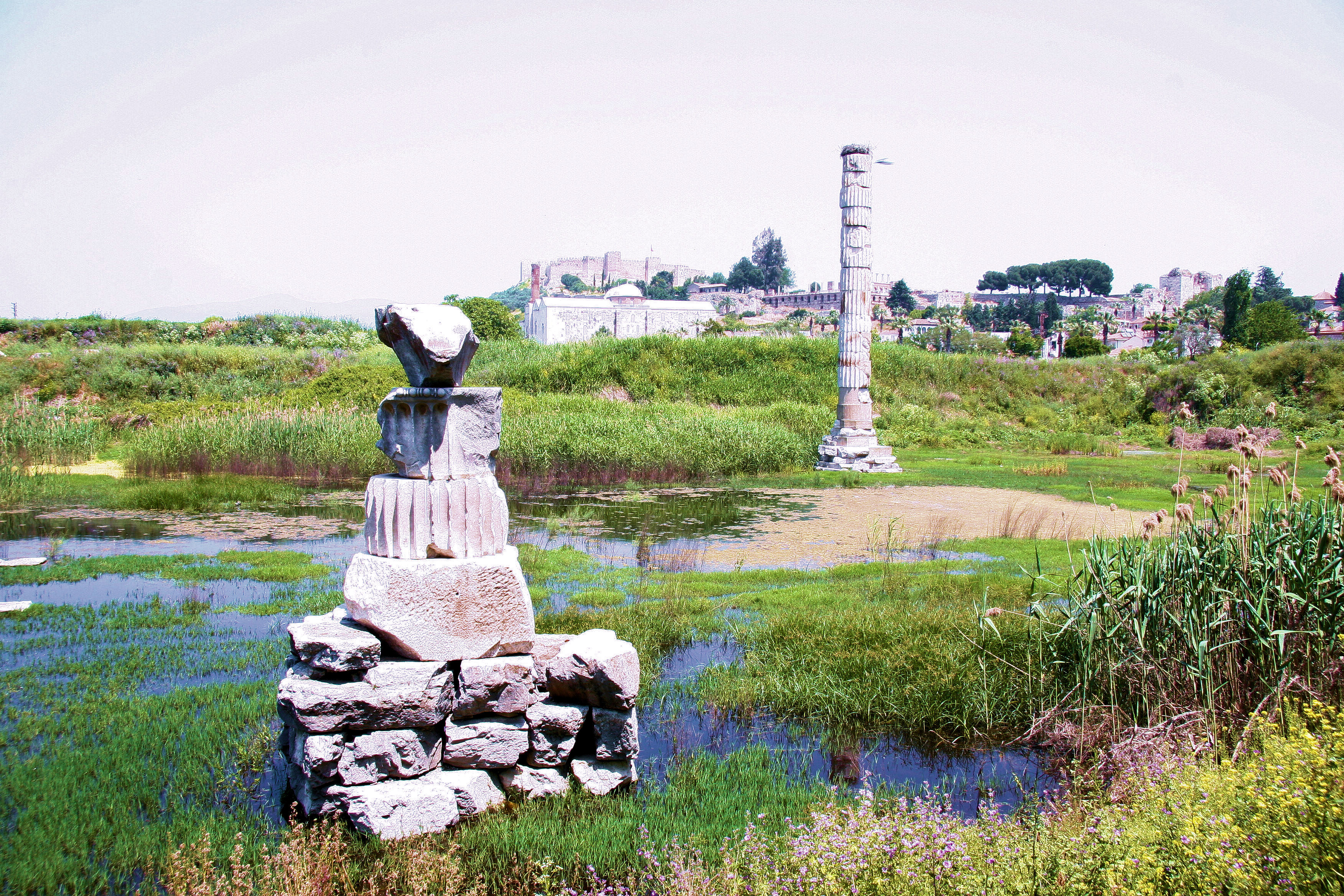
Peace was restored after a while and, perhaps to fill in for the abandoned leather workshop visit, Ali stopped at a site where he said I could photograph Phoenician, Greek, Roman and Turkish structures in one shot, an experience which ,if nothing else, served to illustrate the long, rich and varied history of the region. I am glad we had Ali to show us round. It is all very well to look, but to have purpose and context explained at the same time is so much more rewarding. I made a mistake as we said goodbye. I gave the driver a generous tip but felt a university educated professional such as Ali would be insulted by such a gesture. On reflection and with subsequent experience of the murky world of tipping I can see it was wrong. Sorry Ali!
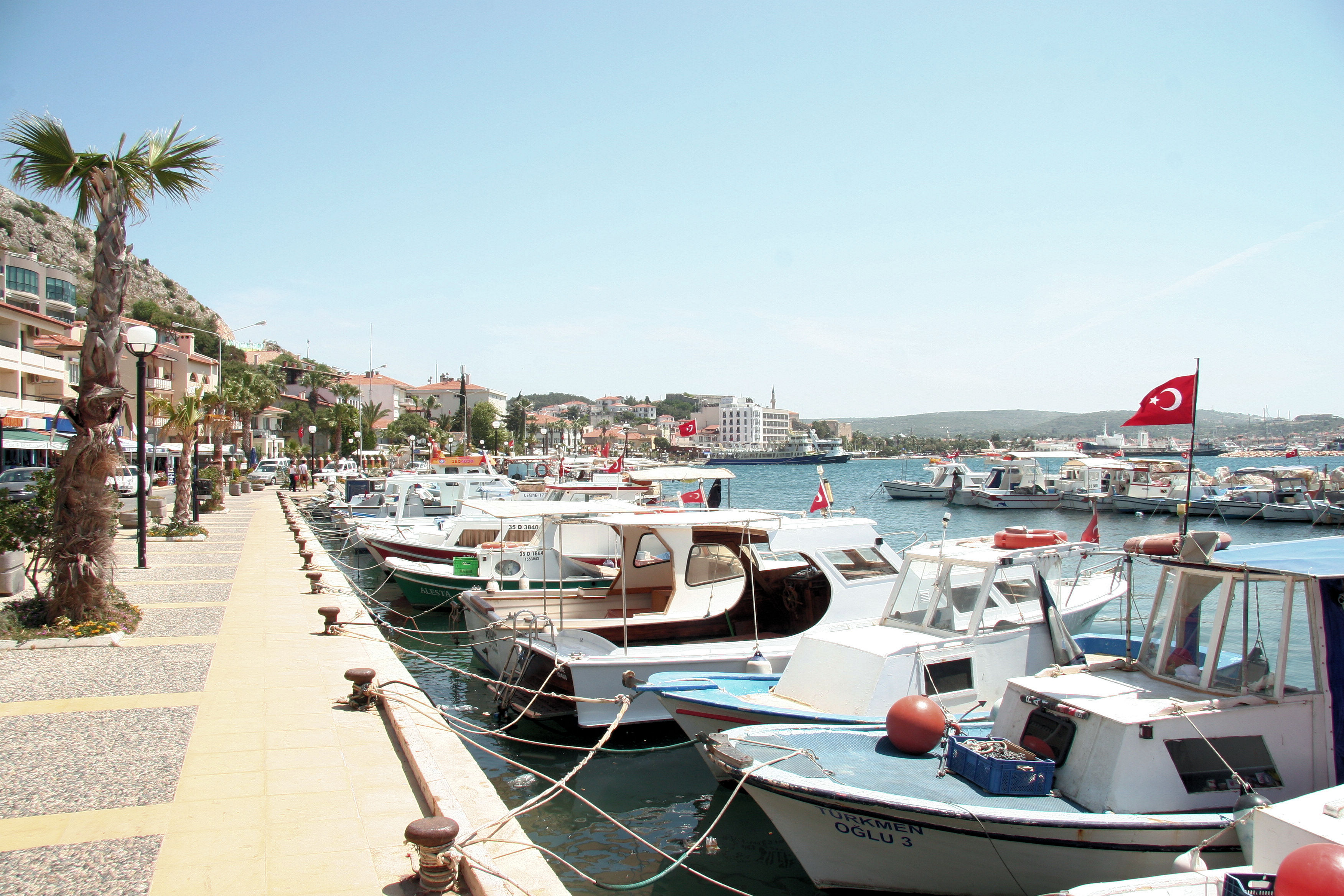
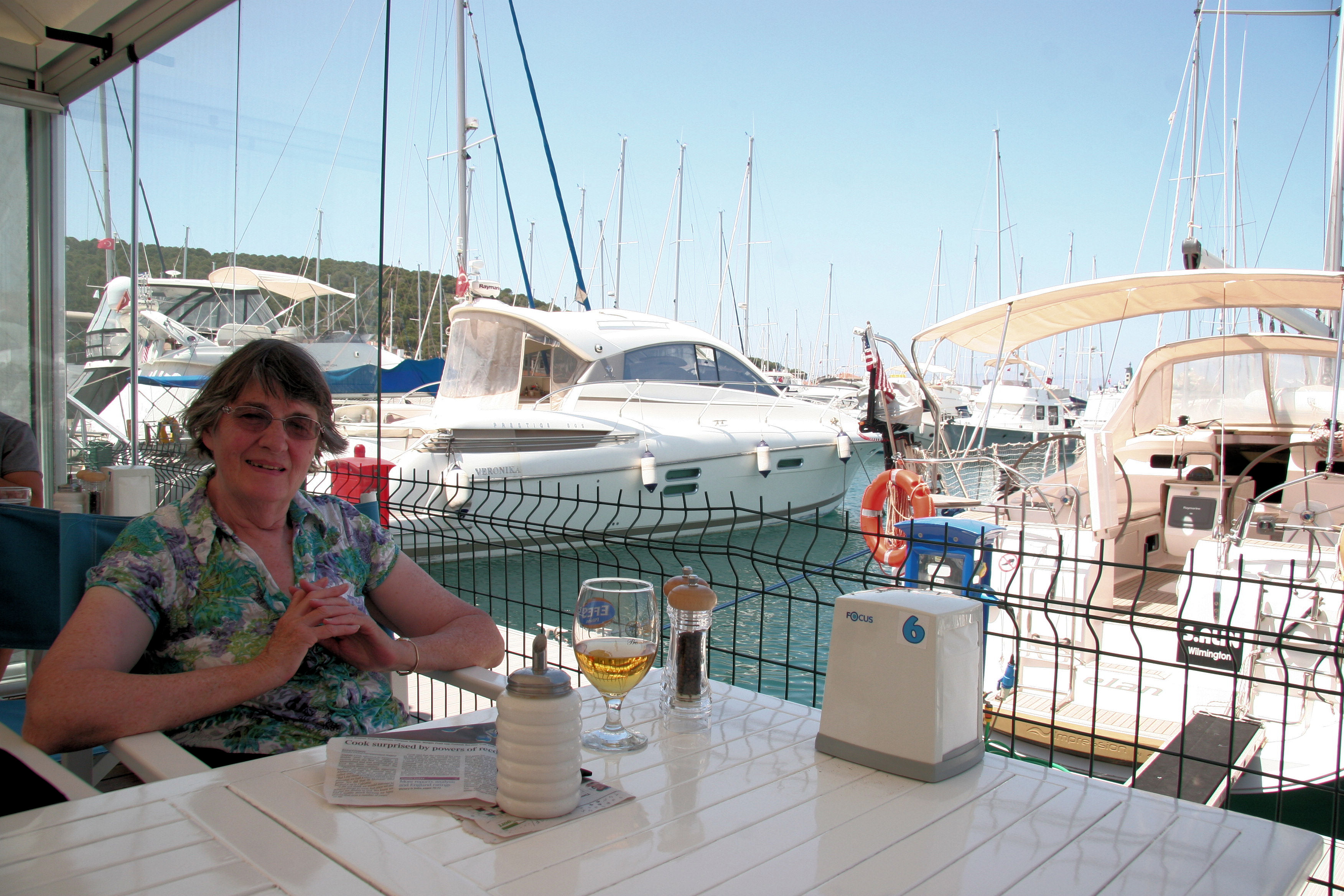
To continue our journey it was necessary to get from Izmir to Cesme from where a short ferry ride would take us to the Greek island of Chios. An enterprising taxi driver, who was taking us to the bus station, offered to take us to Cesme in his taxi, a distance of some fifty five miles. When we subtracted the bus fares from his offer it seemed a reasonable deal and gave us about four hours to explore Cesme before taking the ferry back to the EU.
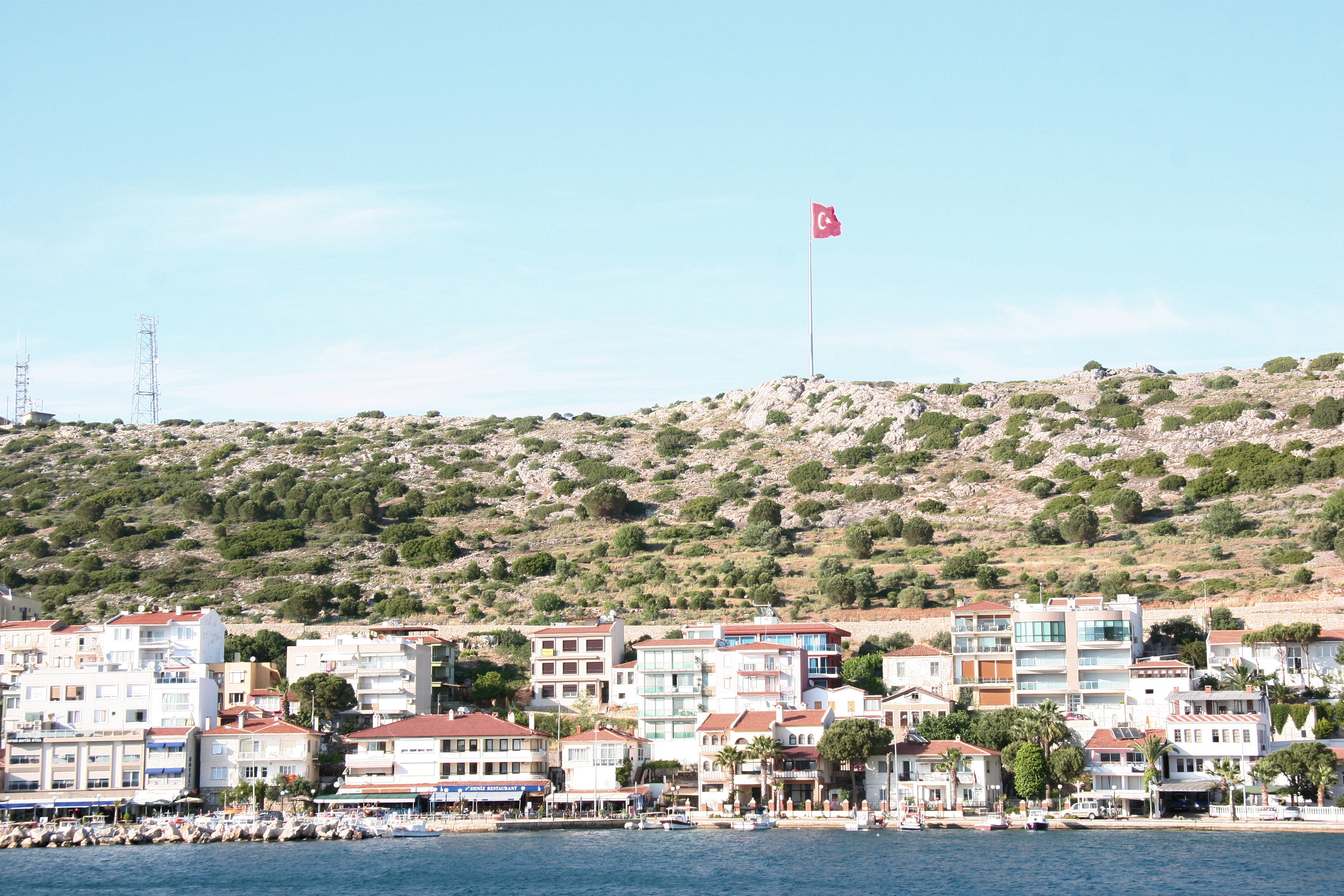
We enjoyed our last view of Turkey from the small ferry taking us across the narrow strait to Chios.
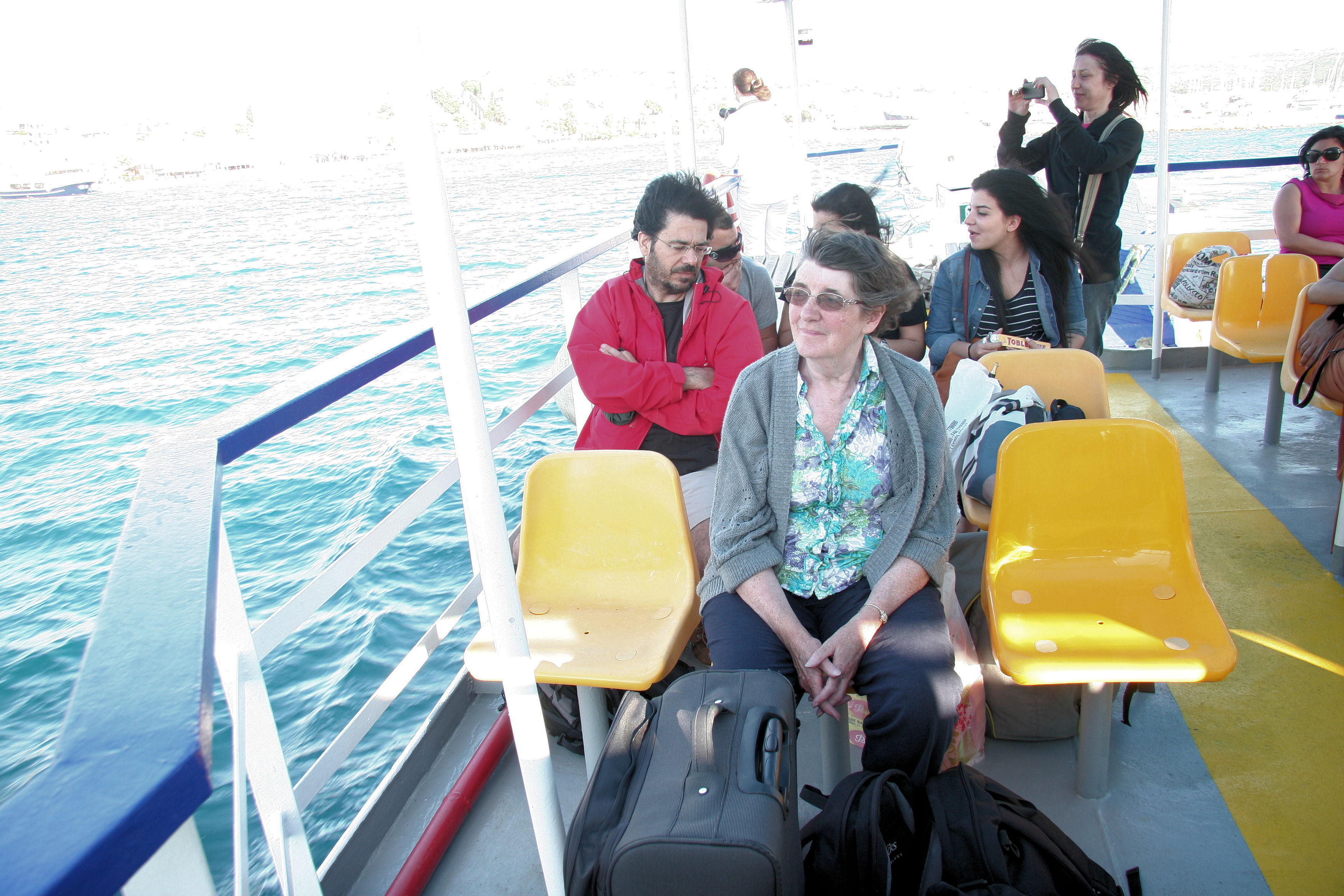
Our accommodation on the ferry to Chios was a little more basic than what we found ourselves in on the next ferry, an enormous ship that somehow backed itself into the tiny port at Chios, before taking us to Athens.
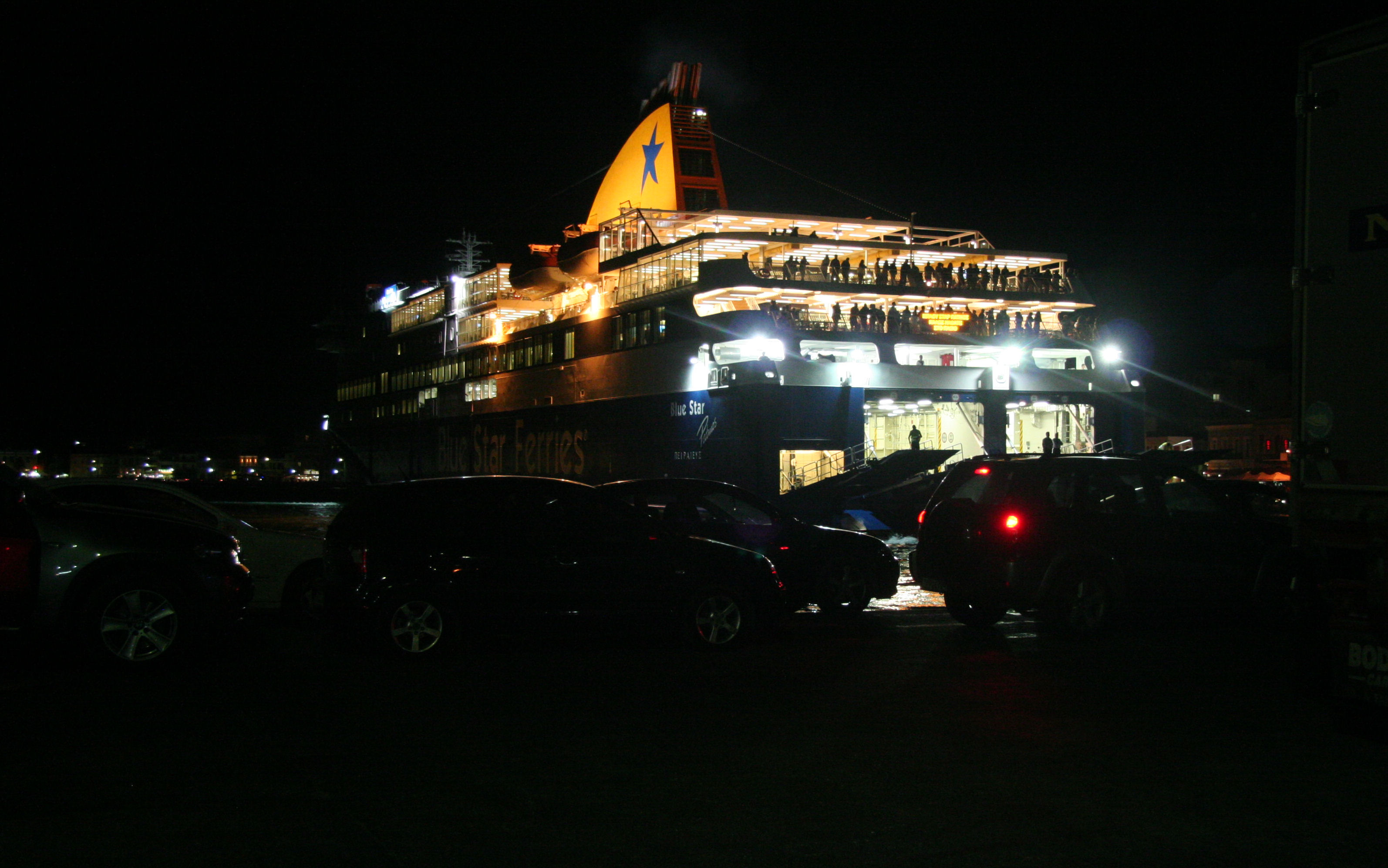
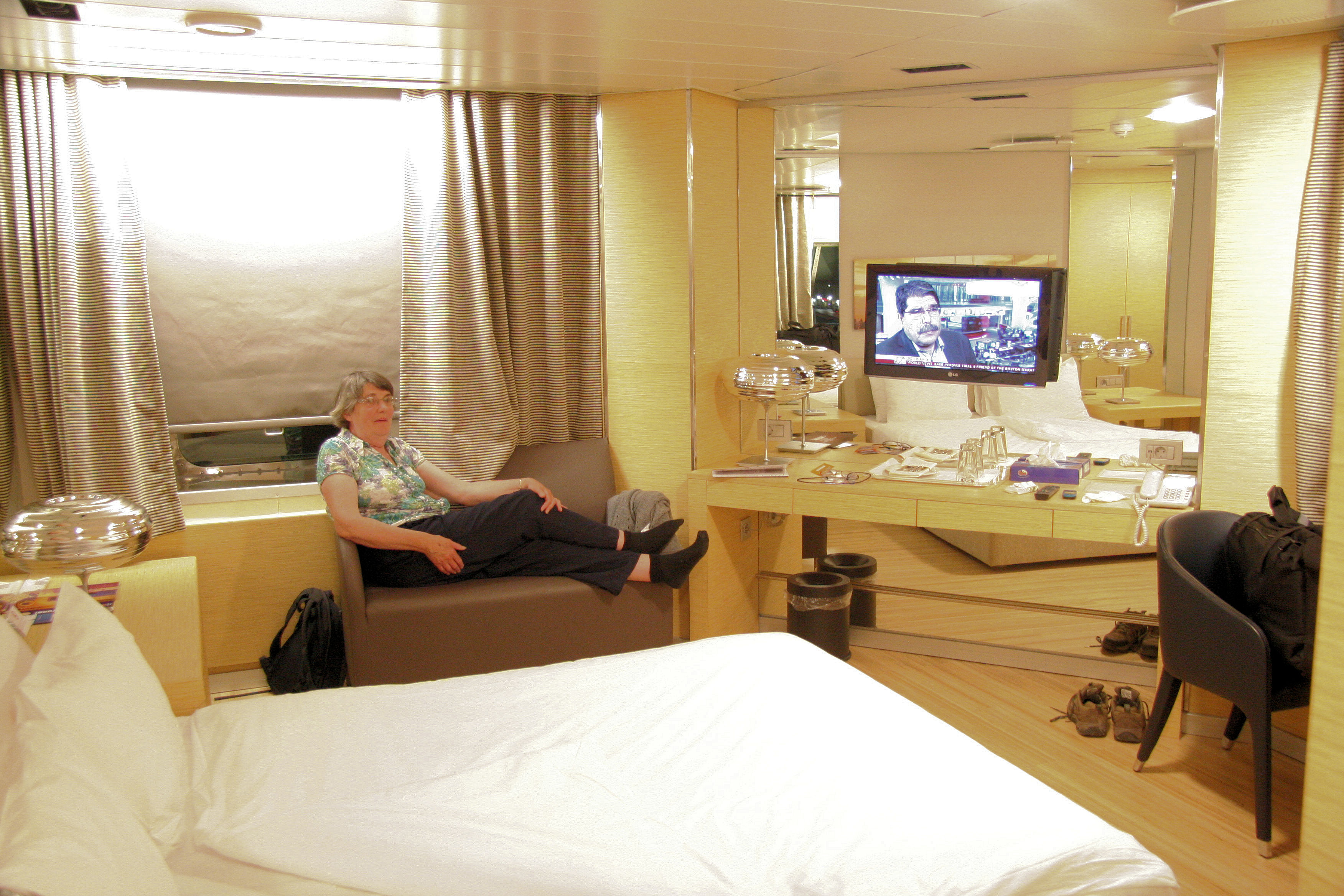
This was all great fun for us at the time, but now one thinks more about the enormous human catastrophe that recently took place in these very waters as the desperate tide of refugees from Syria flung themselves across the strait by whatever poor means they could acquire and drowned in their thousands.
Sadly our night in a luxury cabin was quite short. We boarded at about 11pm and were thrown off again onto a chaotic Piraeus quayside at 7am. We found a station by following the crowd of disembarkees and presented ourselves to the owner of our apartment at 8am. He was in his pajamas and not entirely pleased to see us but was willing to let us leave our luggage and come back in three hours. We were both more or less out on our feet and we sat in a nearby square, wondering what to do. Eventually we noticed a small cafe where the proprietor treated us with a kindness that quite moved me. As we stood queuing and perhaps swaying at the counter, we were ushered to a table and without even asking what we wanted, were brought coffee, bread and croisants with butter and jam. Exactly what we needed. Forty minutes later, much revived we ventured out again to explore and buy provisions.
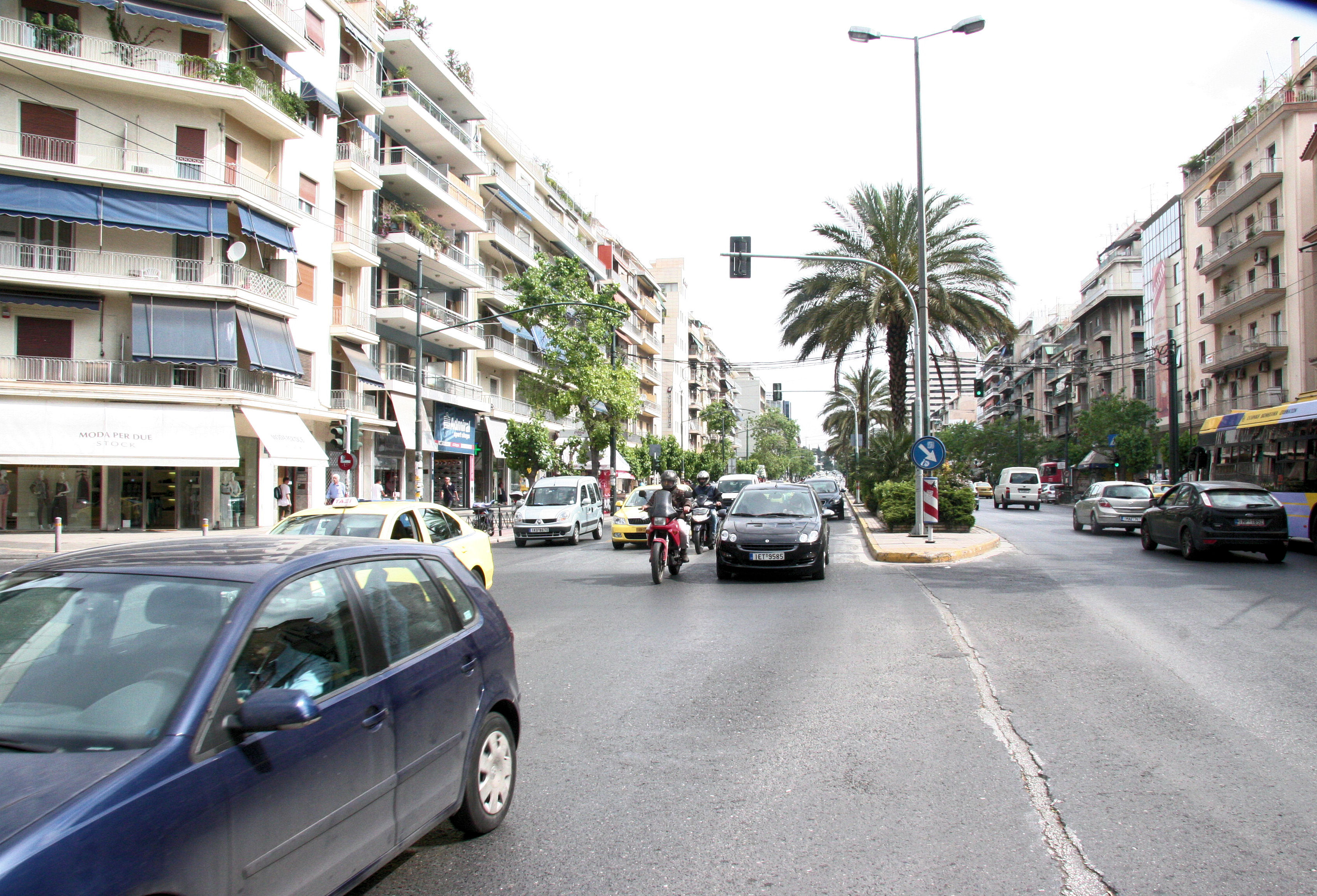
Our first impression of Athens was that it was very busy despite the parlous state of the economy.
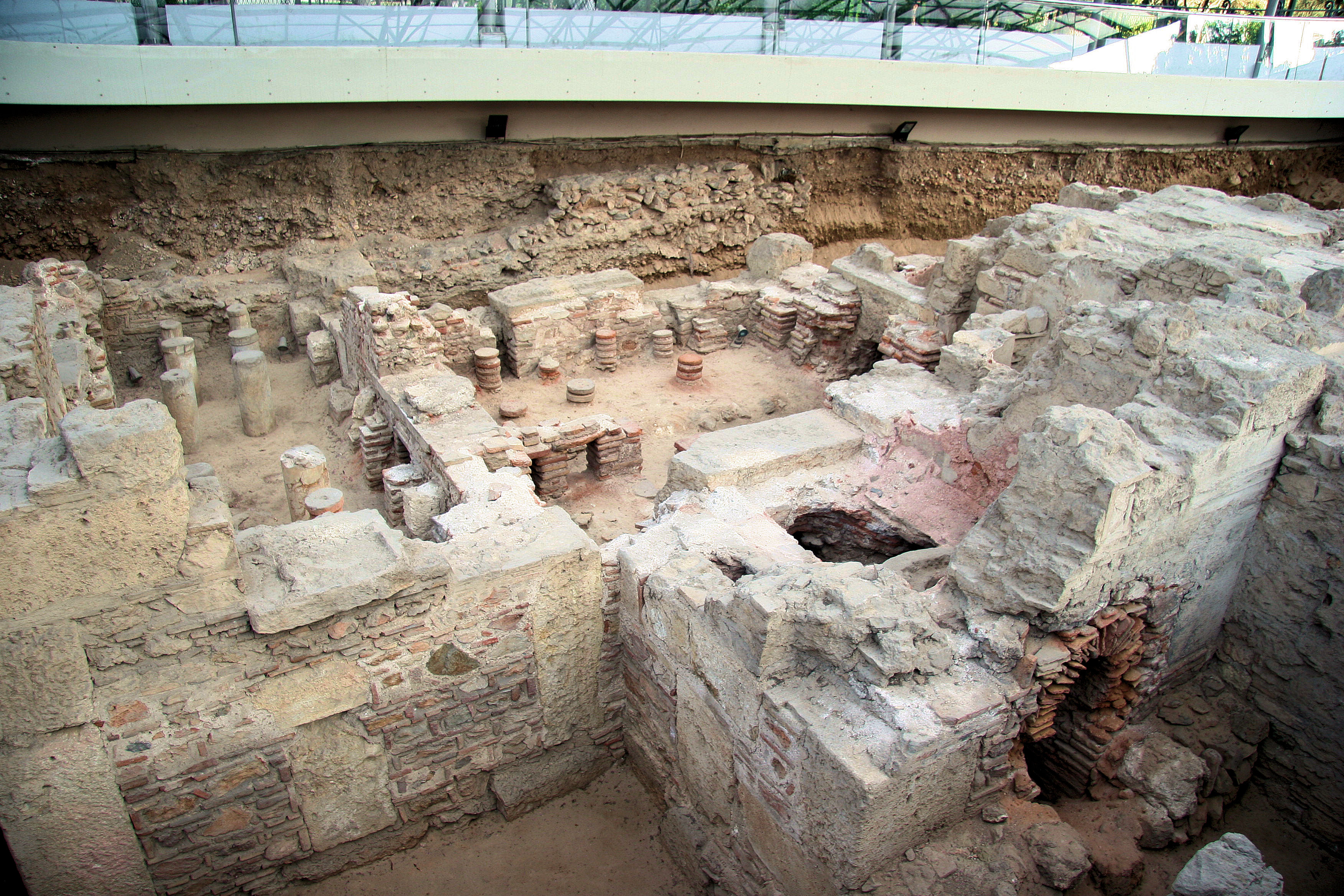
The second fact revealed at every turn was that it was full of historical remnants and every turn of a spade is likely to turn something up. This Roman building with underfloor heating was revealed when the Athenians attempted some road improvement scheme which had to be adapted to accommodate this new discovery. Of course the main "must see" feature was up on the hill overlooking the city and we duly joined the long queues to visit the Parthenon. A selection of views follows.
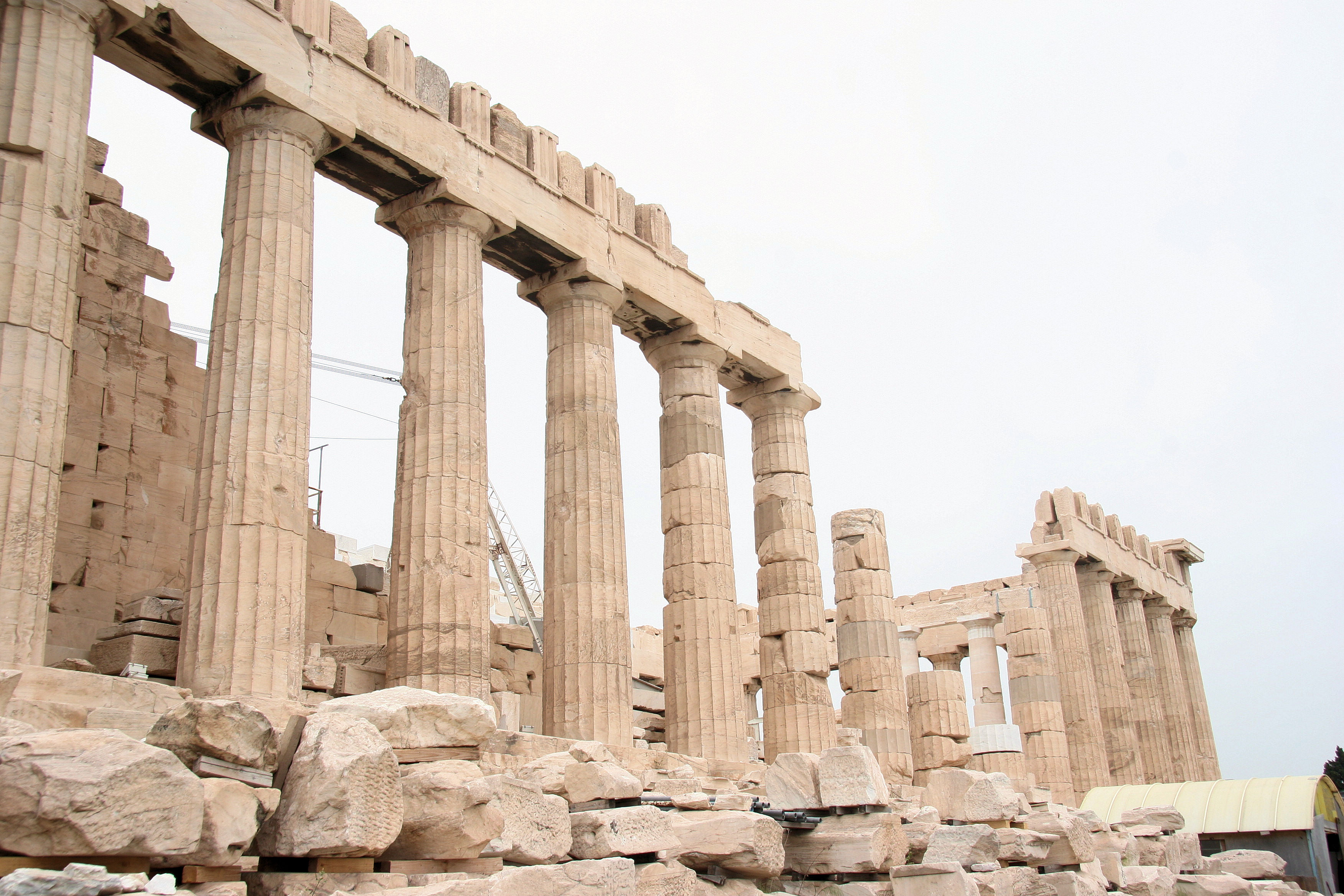
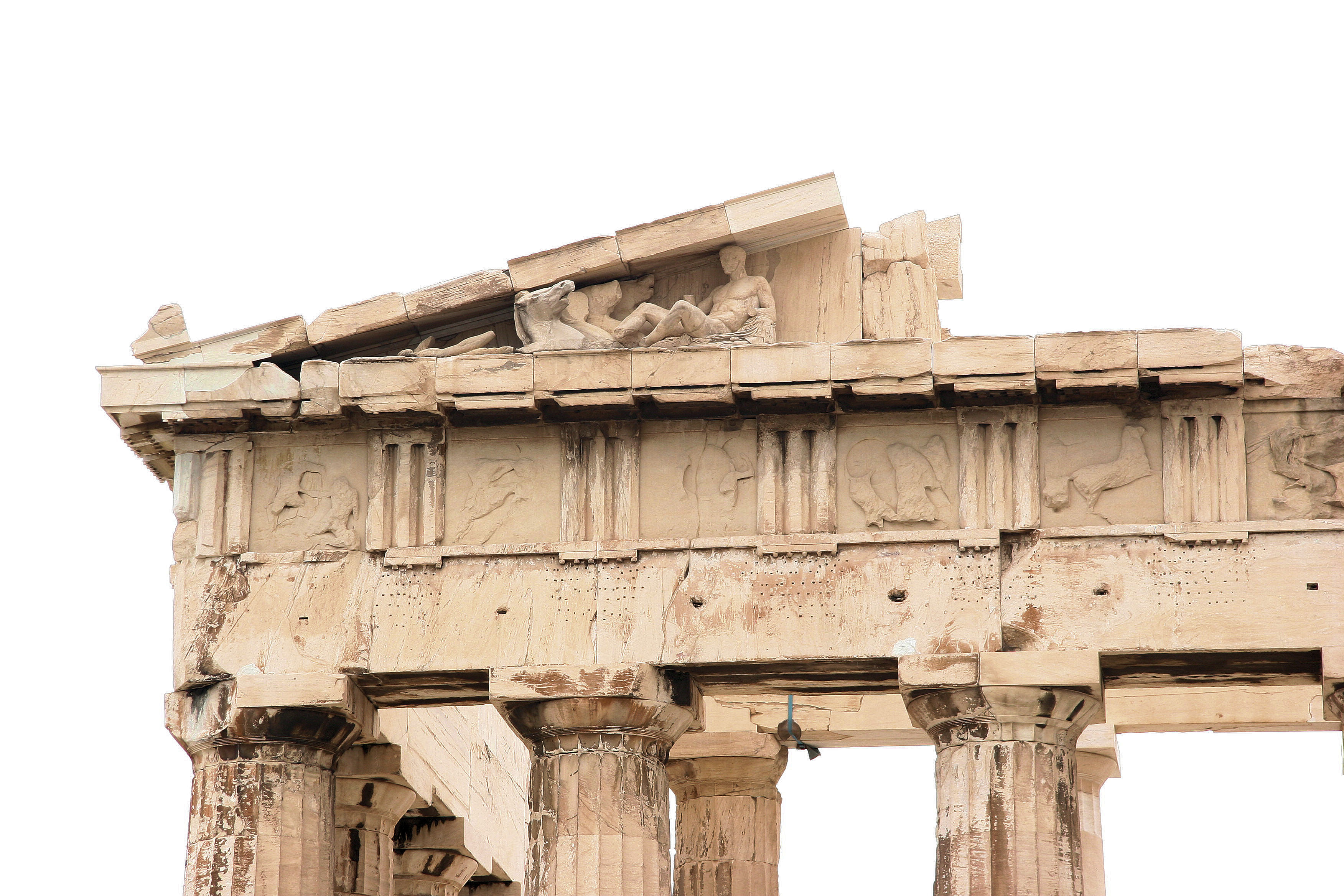

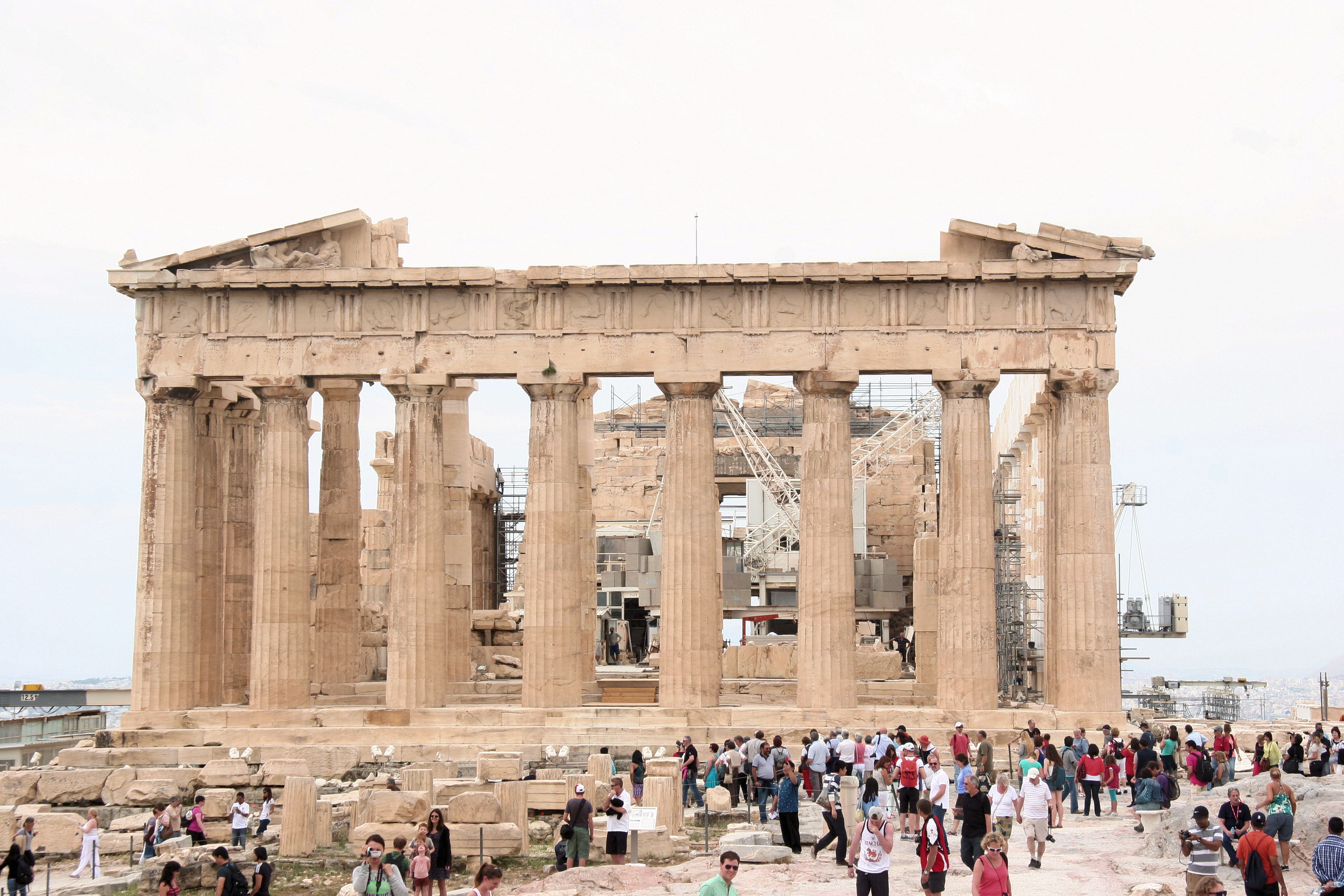
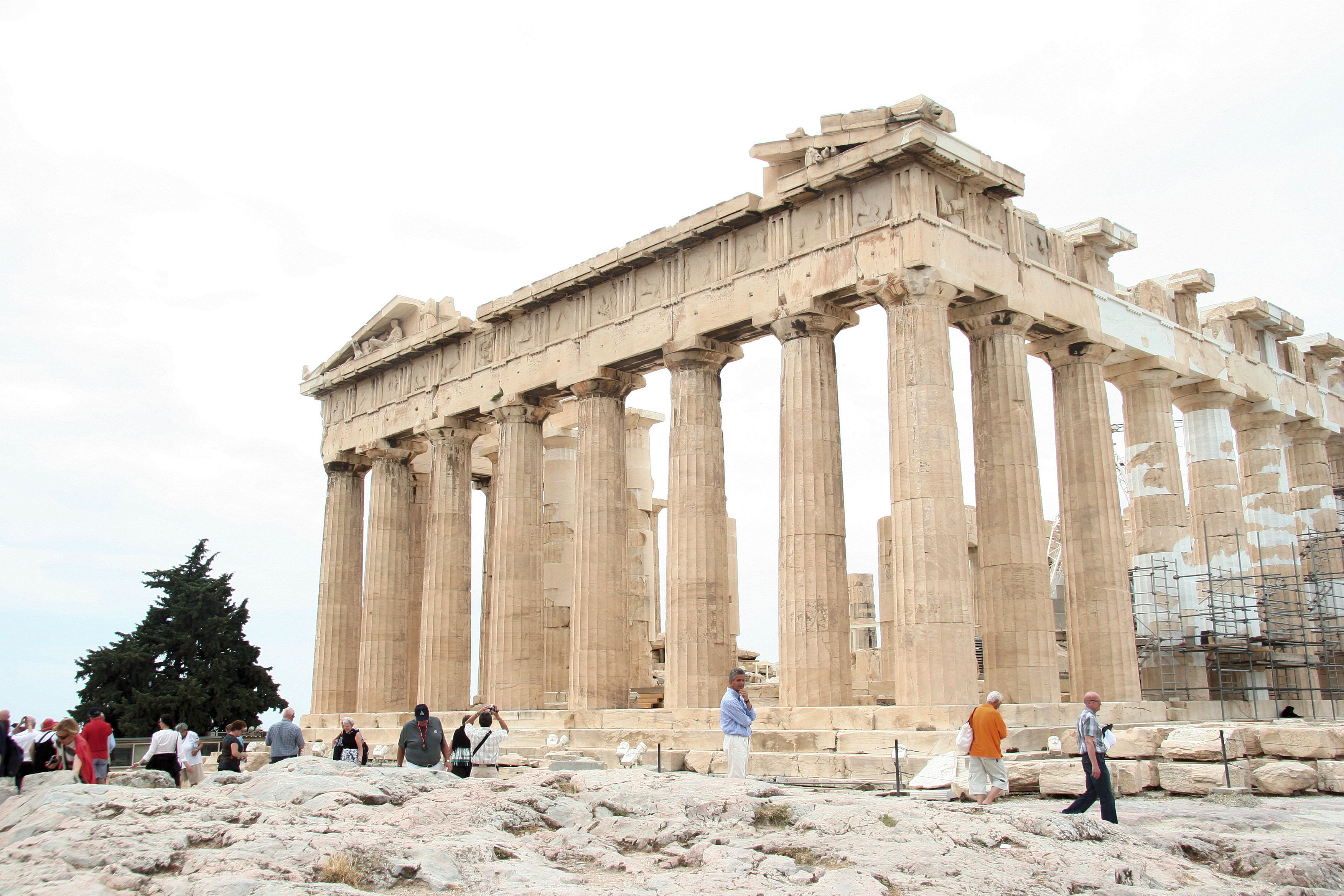
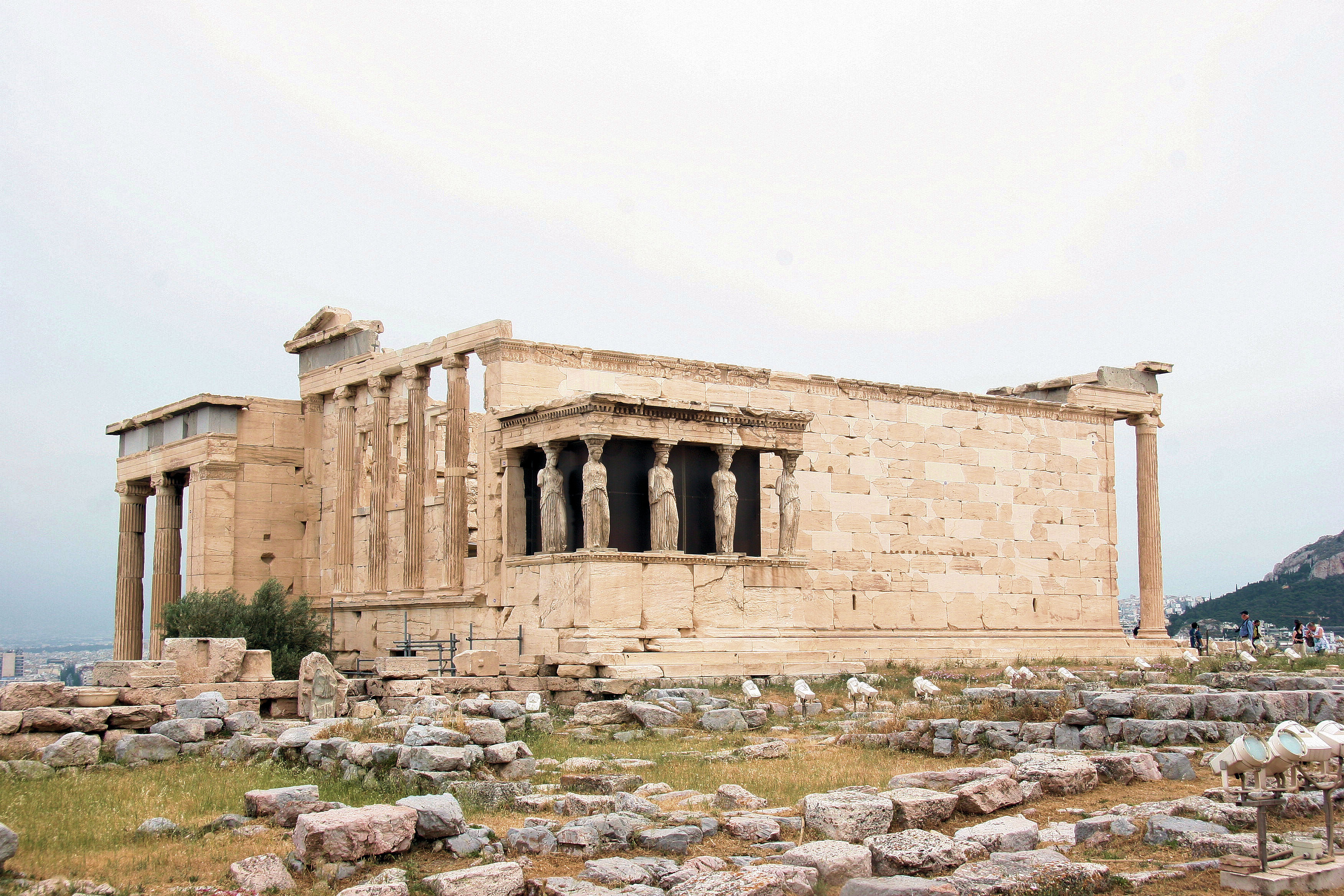
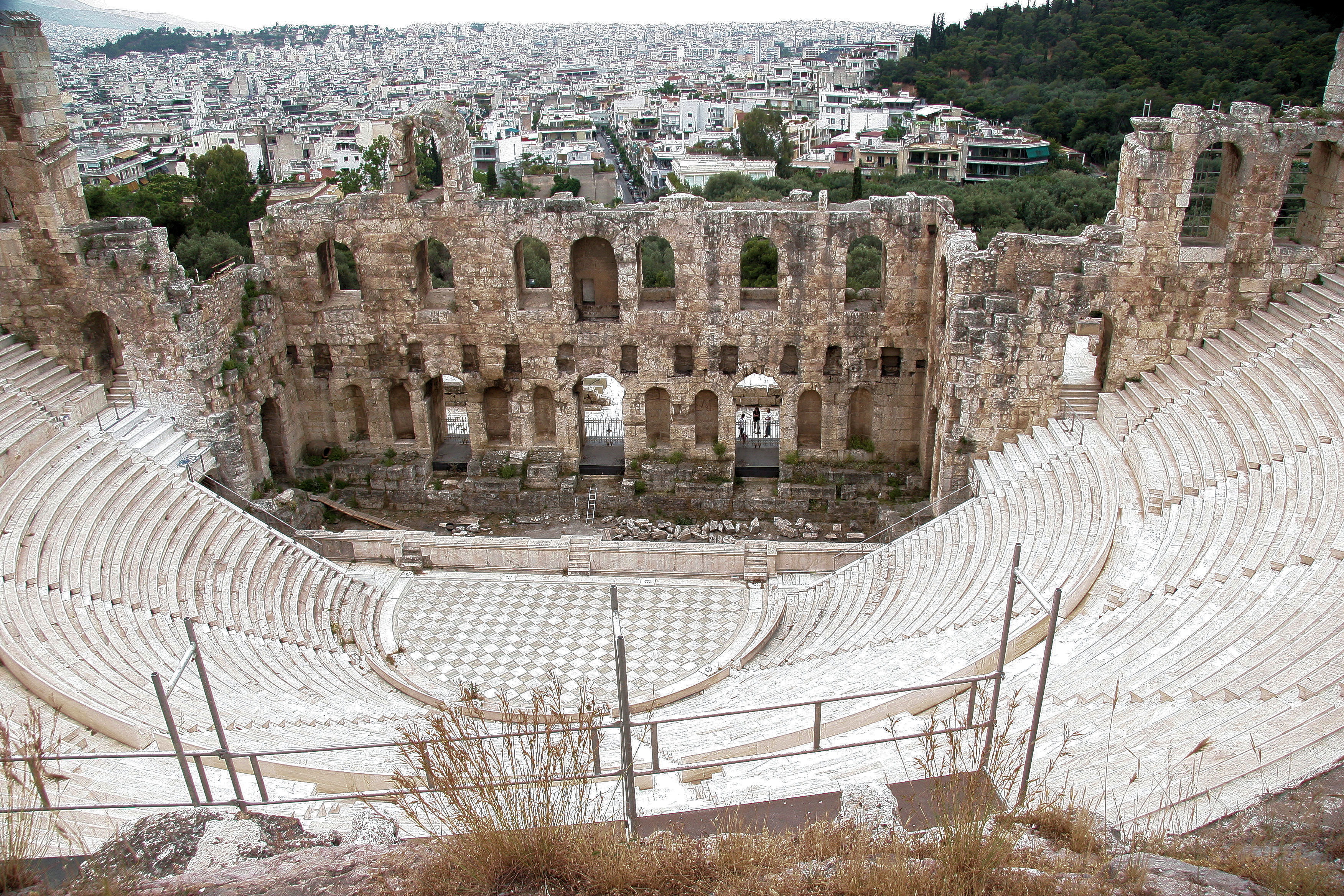
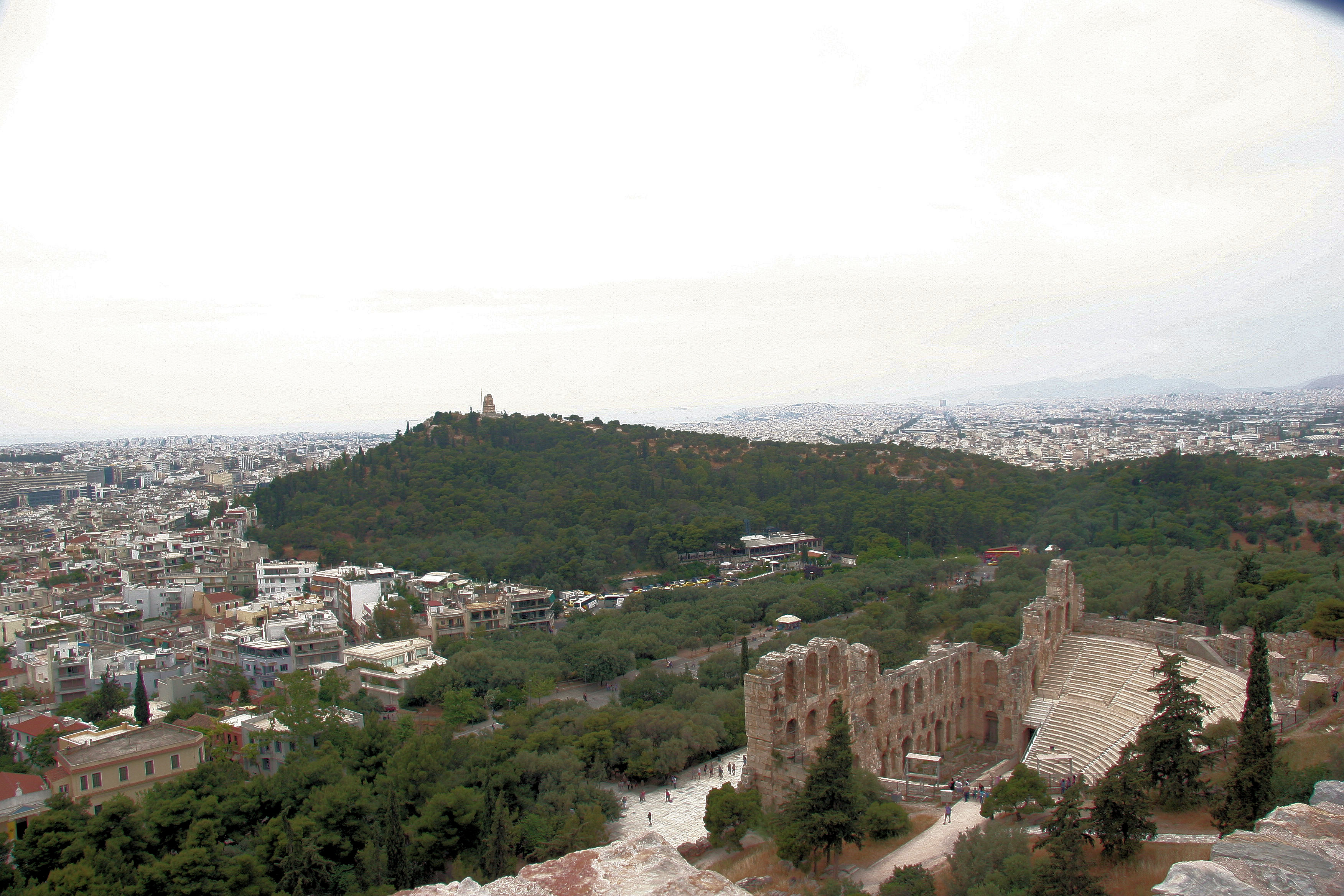
There were also impressive views looking down from the Parthenon across the city.
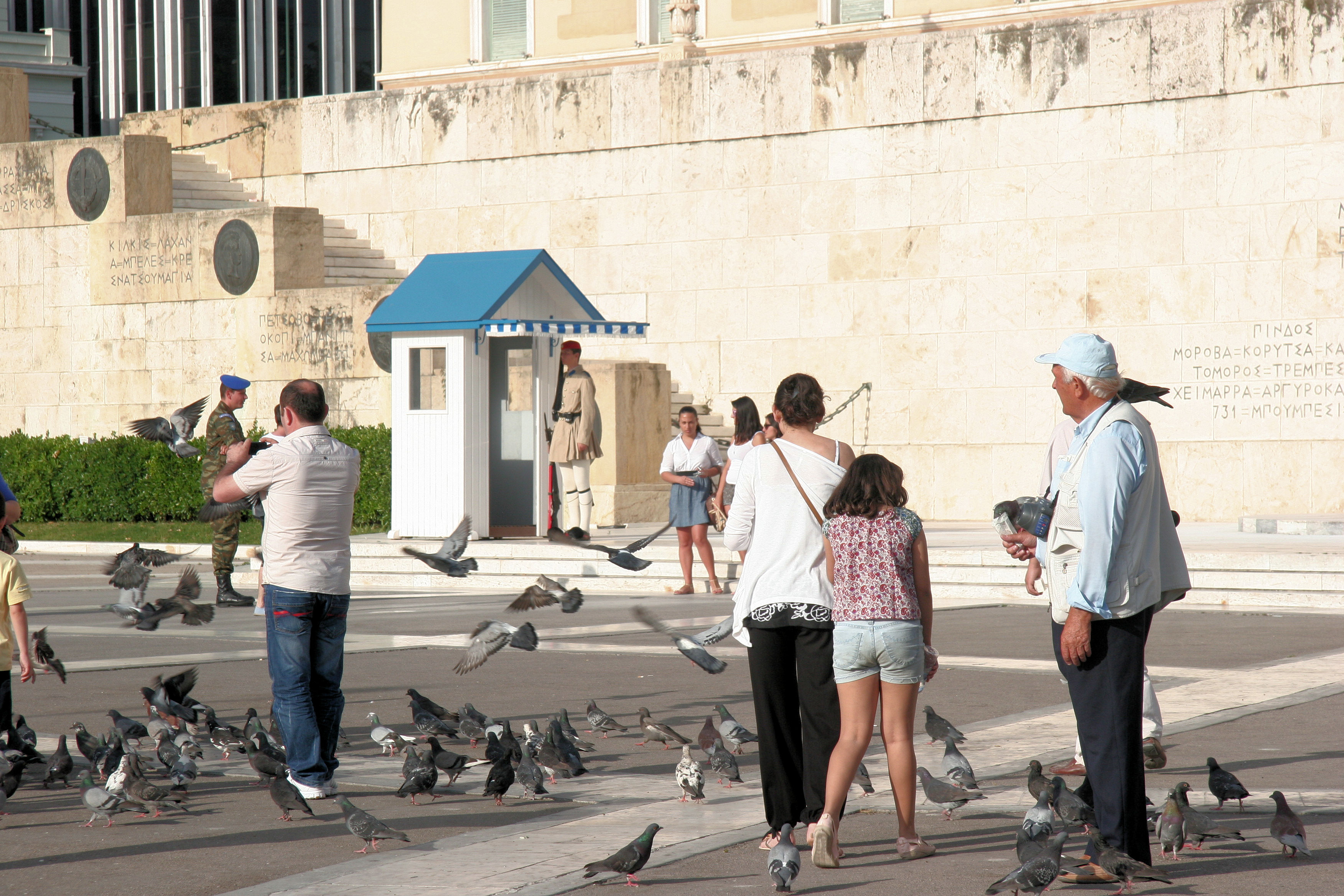 i
i
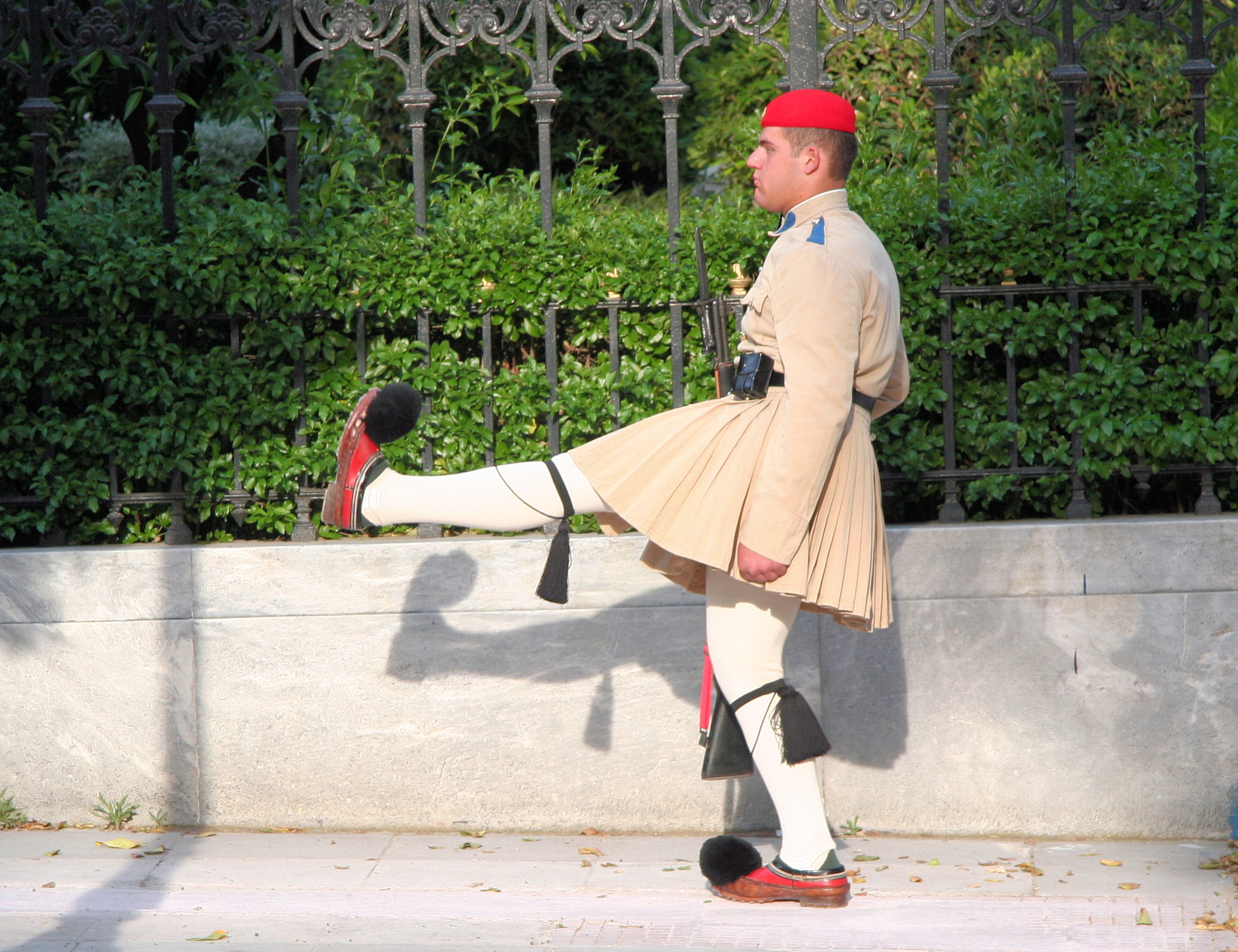
The strangest thing we saw was the way the guards march not to mention their footwear.
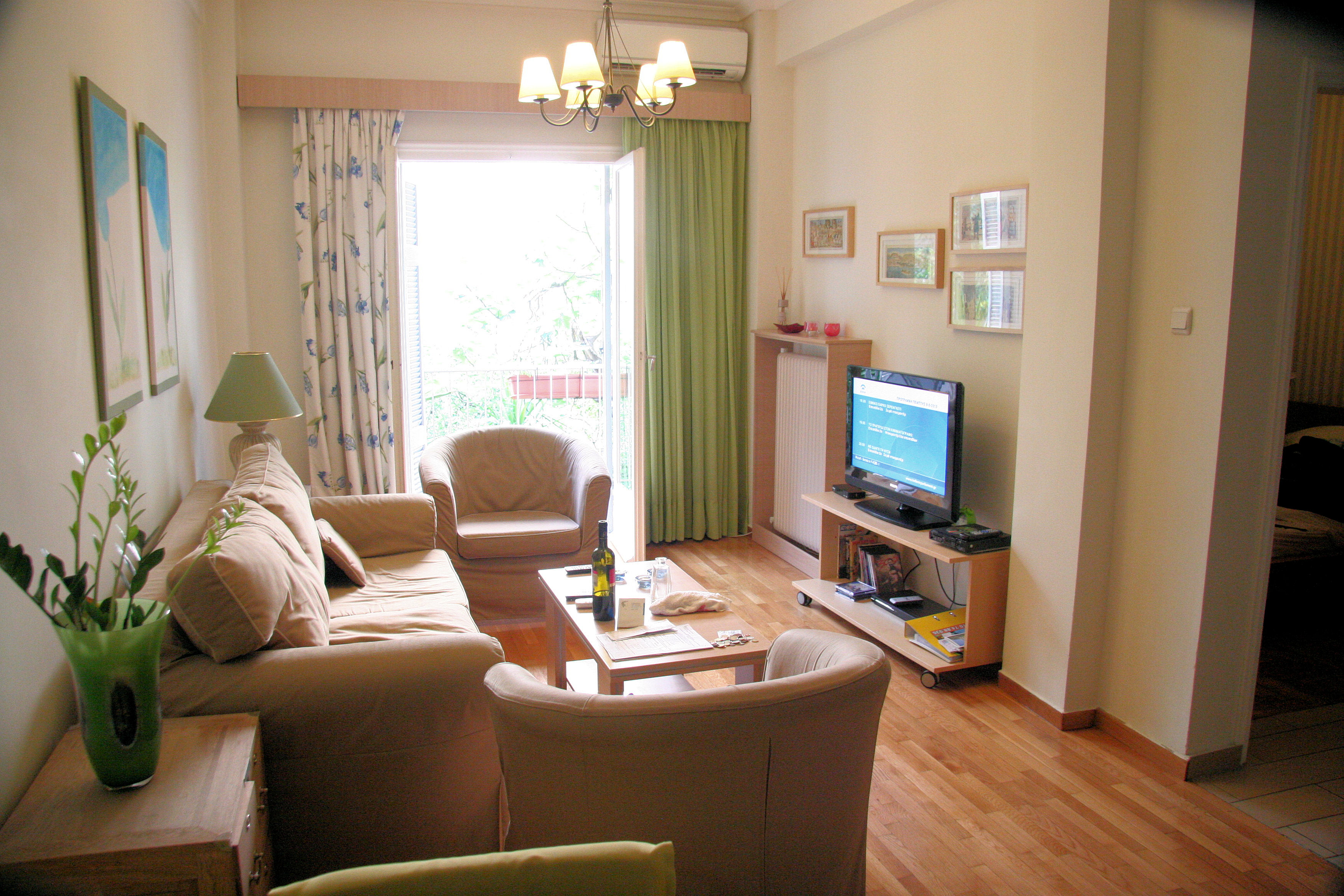
We had a lovely four days in Athens and were more than happy with our apartment. Our host was very kind but clearly under some sort of strain, perhaps related to the situation in Greece we surmised. But it was time to move on and we took a bus to Patras, noting on the way a parallel main railway line that appeared to be completely closed down.
At the ferry terminal we were informed that our our ferry was nine hours late. This created a minor panic. Our ferry would take us to Venice, arriving early in the morning after two nights at sea, where we had planned to have a few hours to explore. Losing nine hours made the train connection quite tight.
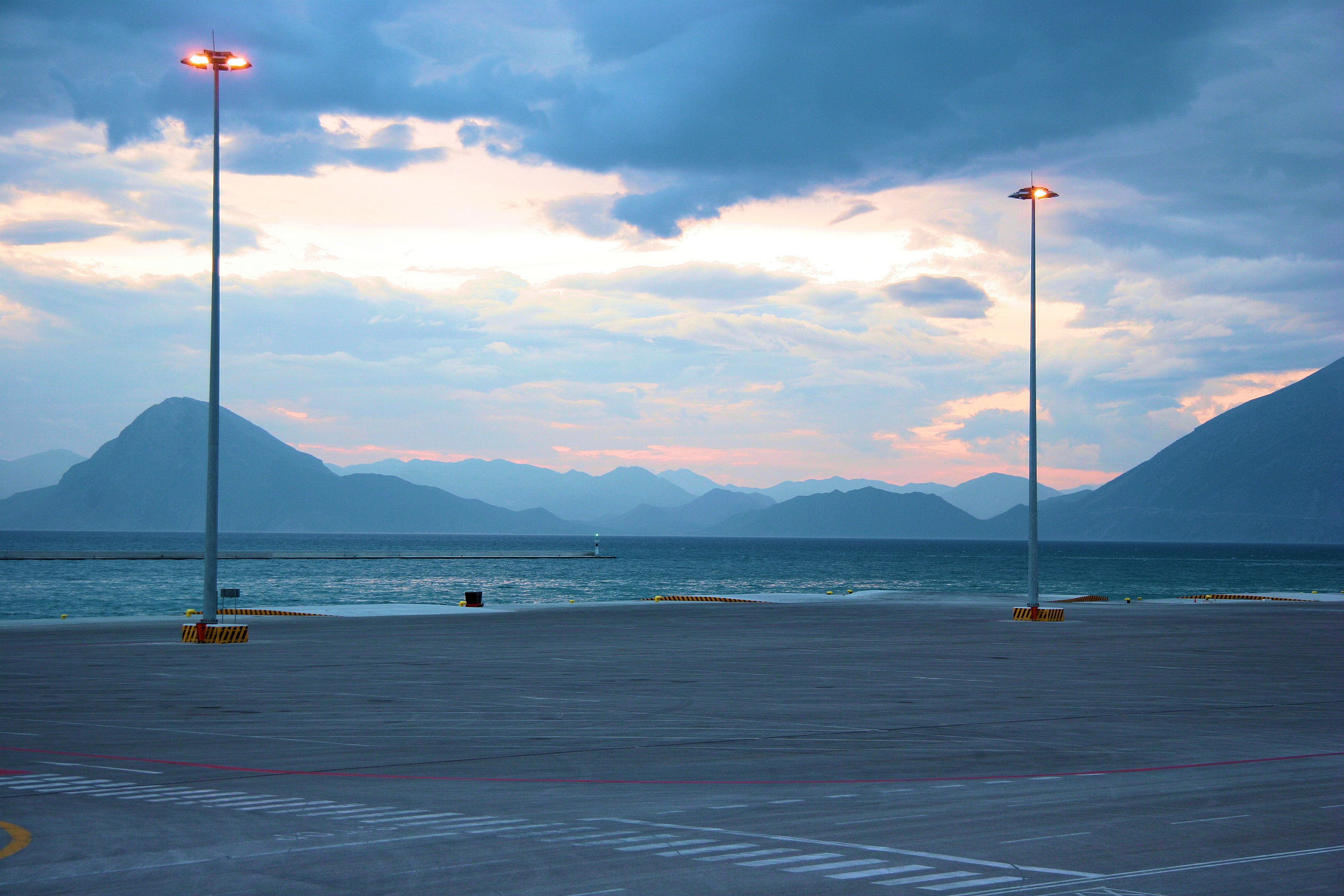
We gazed wistfully across the quay at the spot our ferry should have been and watched the sun go down.
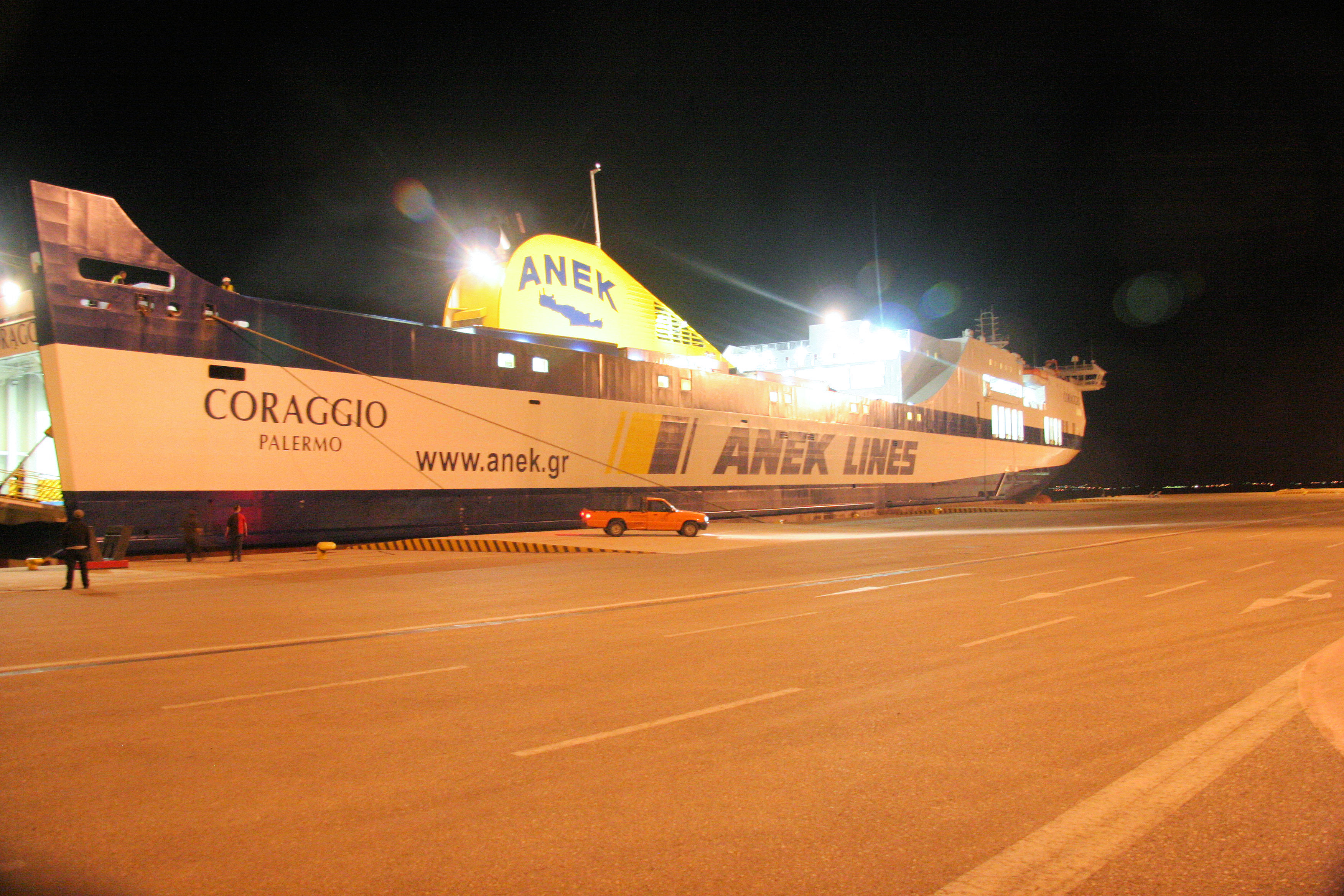
Around midnight we watched its lights climb over the horizon and eventually it was tied up.
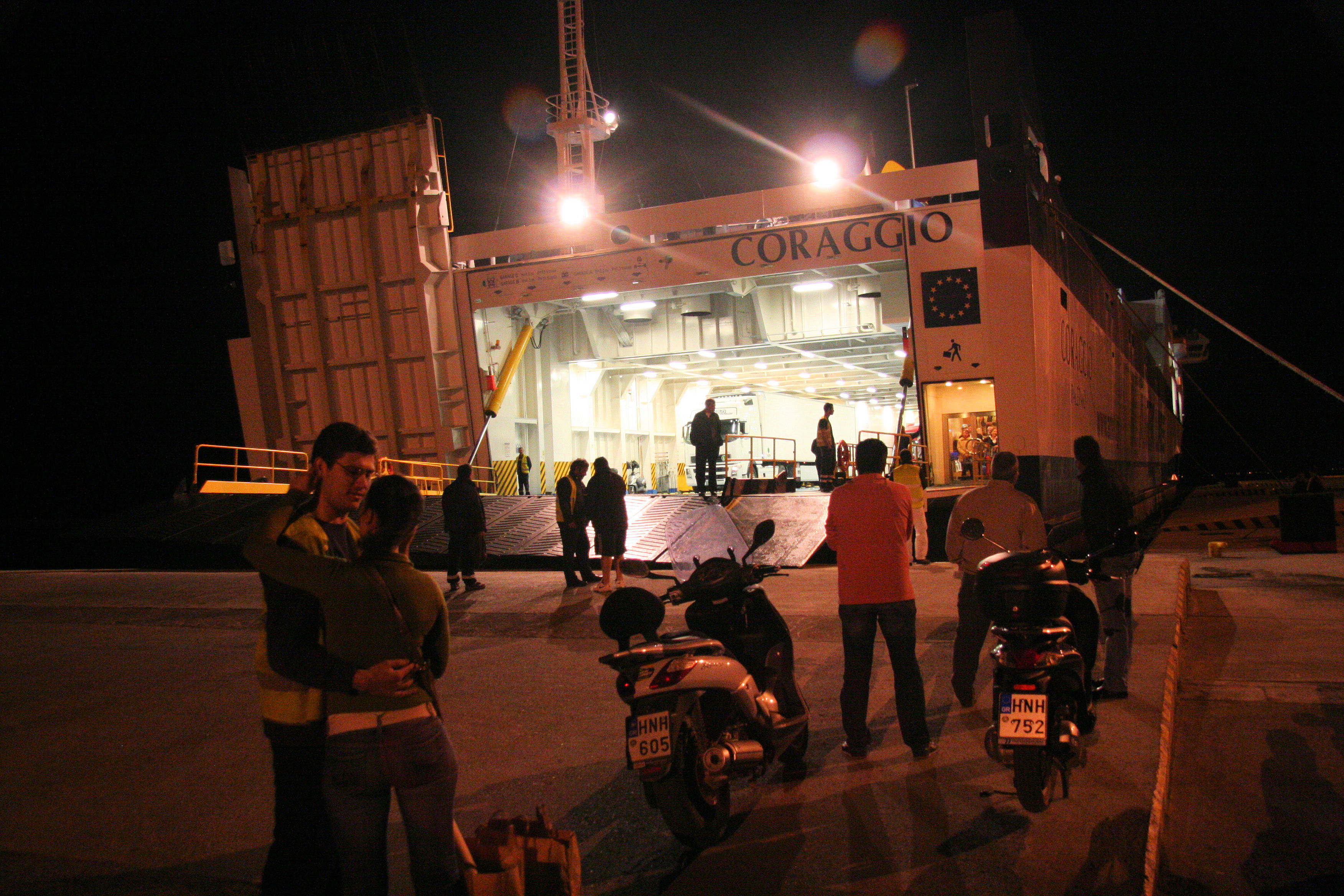
Most of the terminal staff had by this time departed and there was no one to tell us what to do so we ambled across to the ship and waited outside until they were ready to let us board.
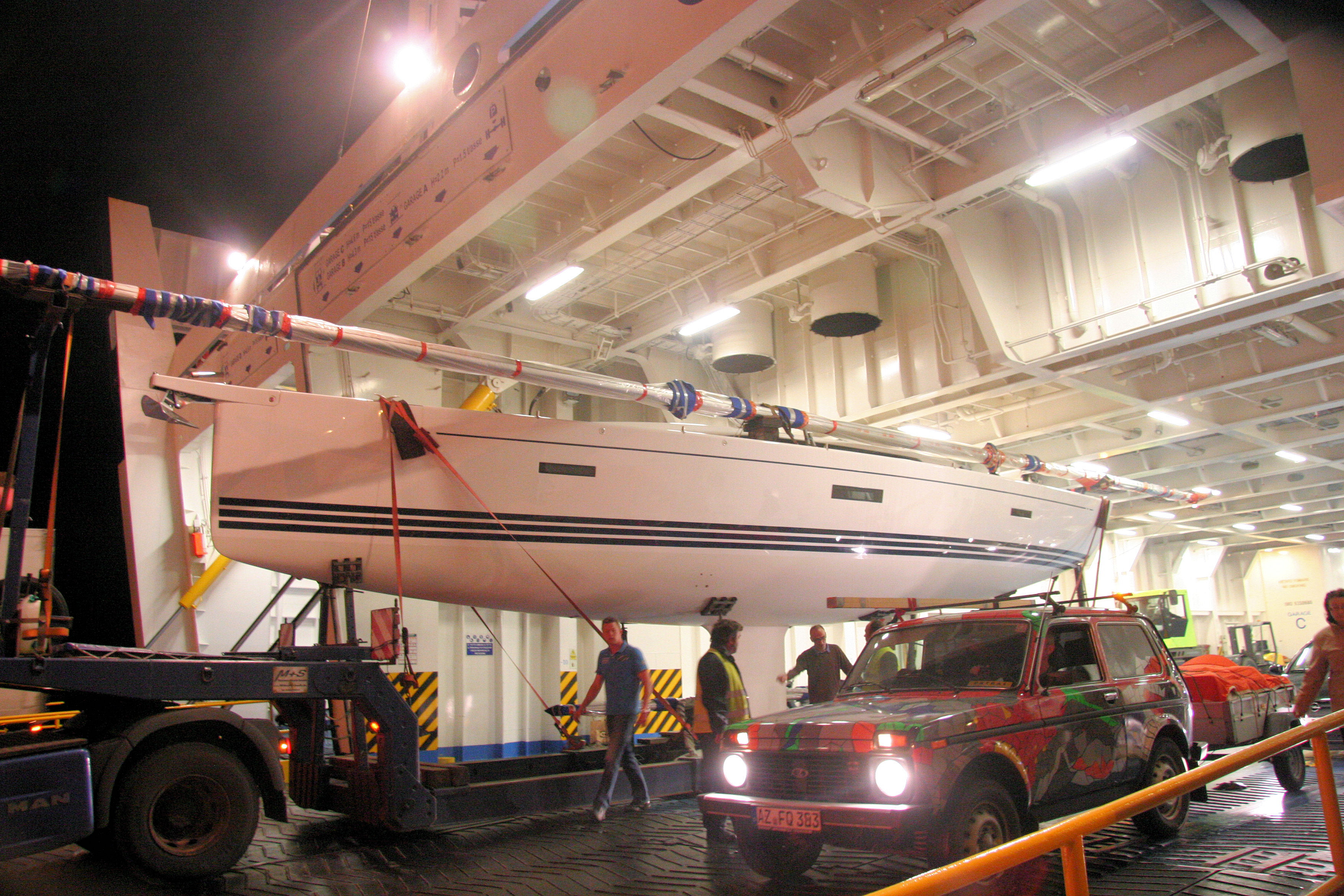
There seemed to be no one in particular in charge of the unloading and for a while it was chaotic with everyone doing there own thing. Eventually we boarded, were shown our cabin and were asleep within minutes. It had been a long day since we left the apartment in Athens.
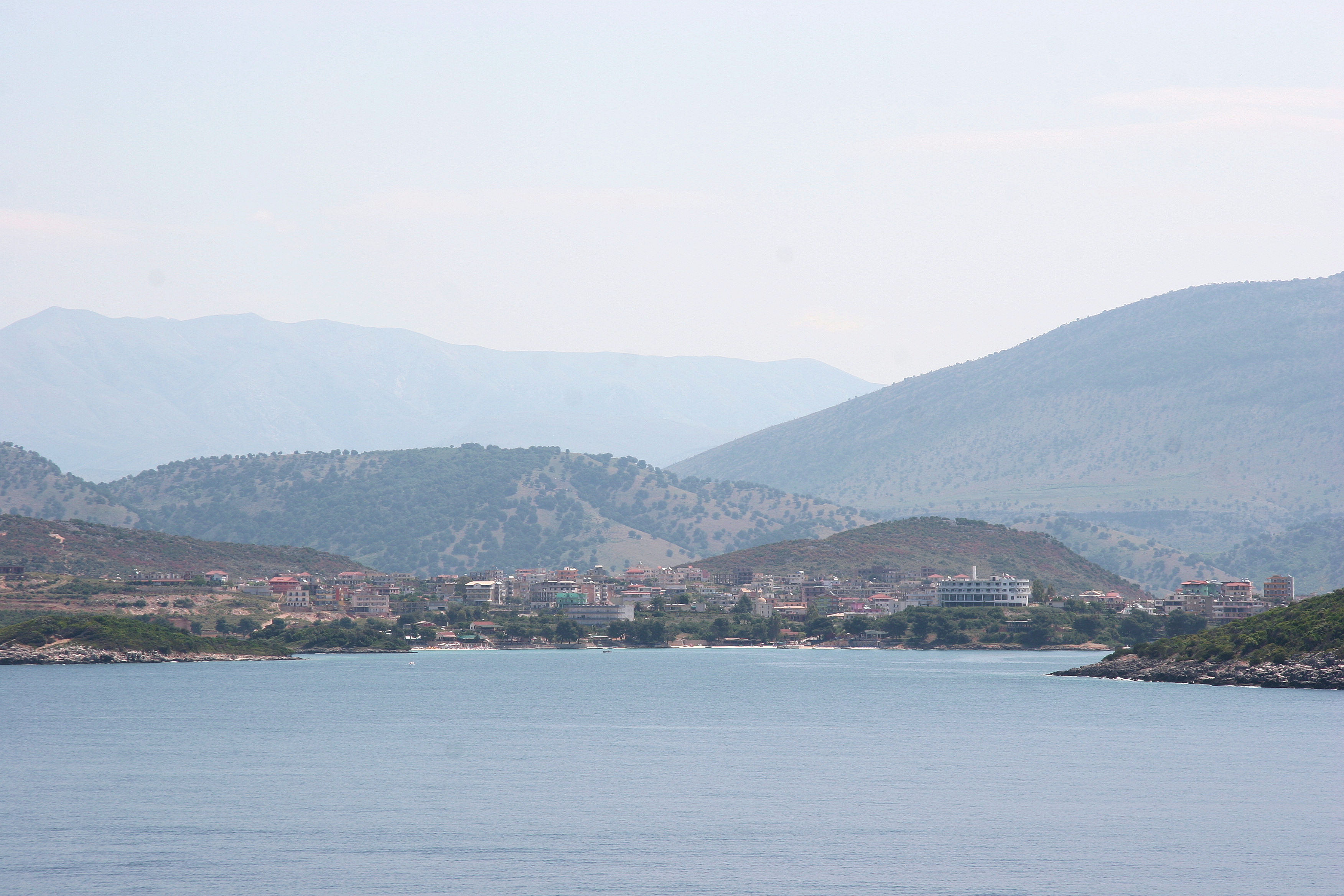
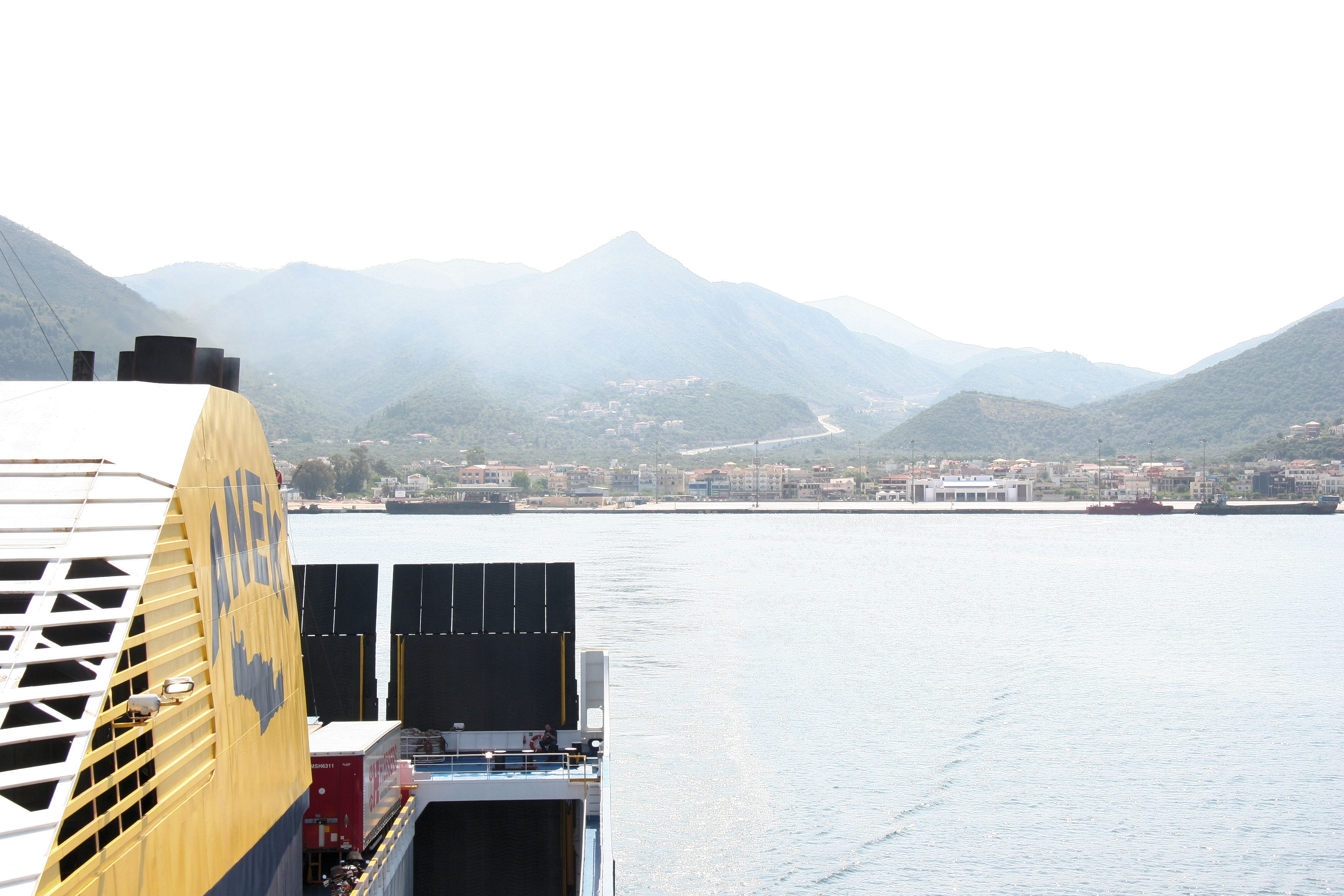
Next morning found us sailing north, close in to Greek coast. There is only one stop before Venice at the small Greek port of Igoumenitzi.
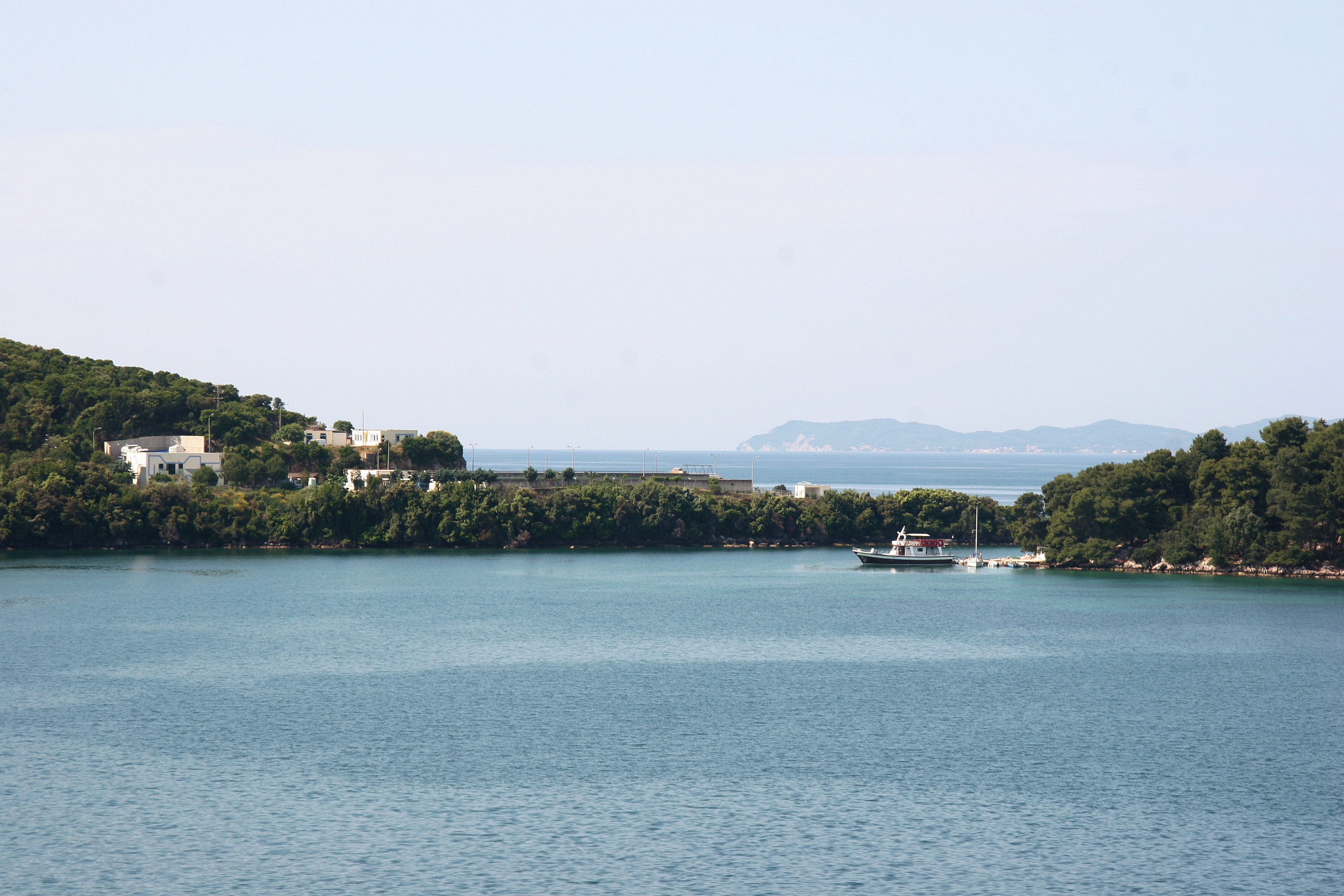
It is an interesting ride along the coast, passing islands and small towns with bare arid mountains behind.
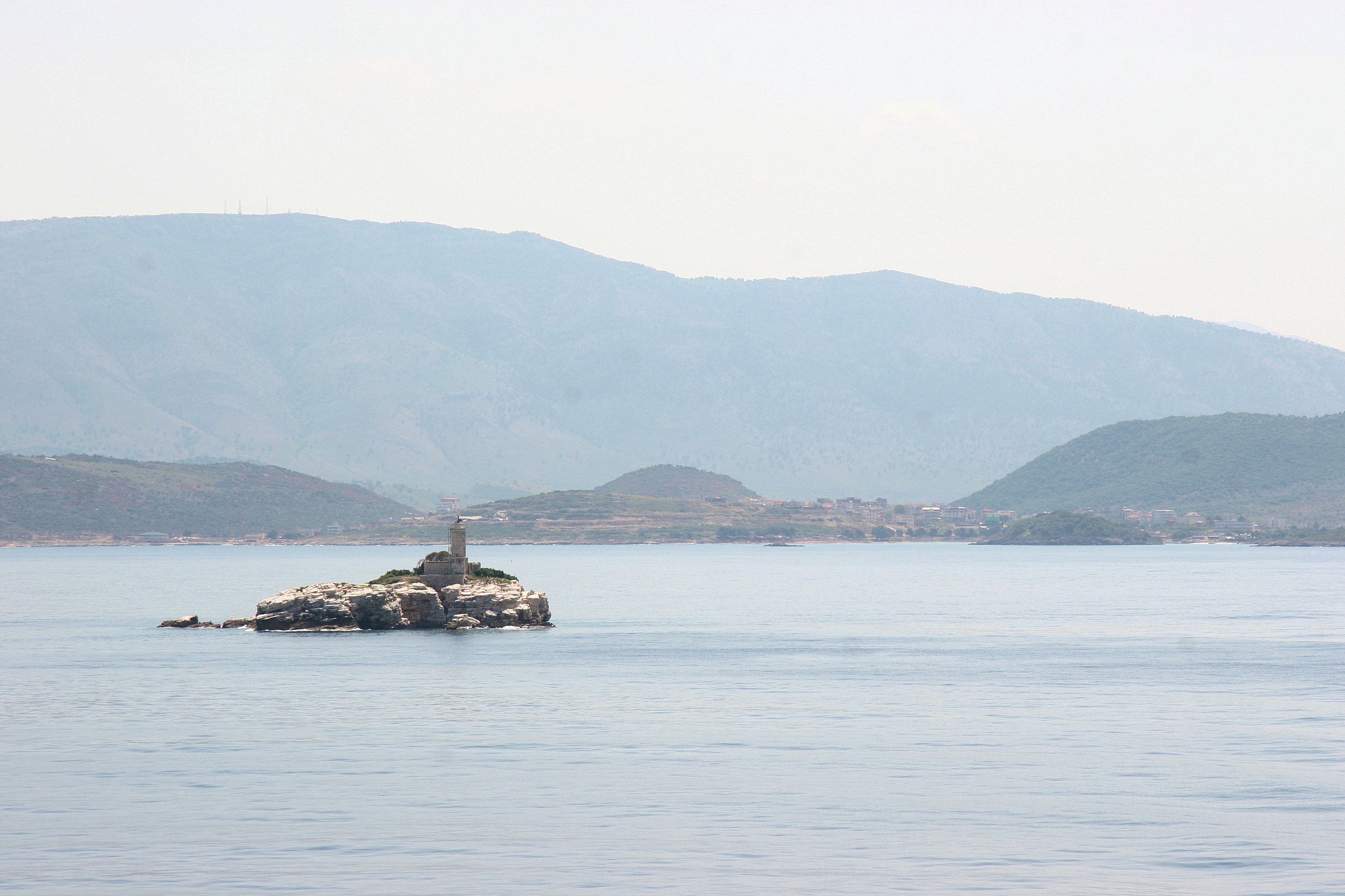
This lighthouse marks the northern border of Greece. Which means...
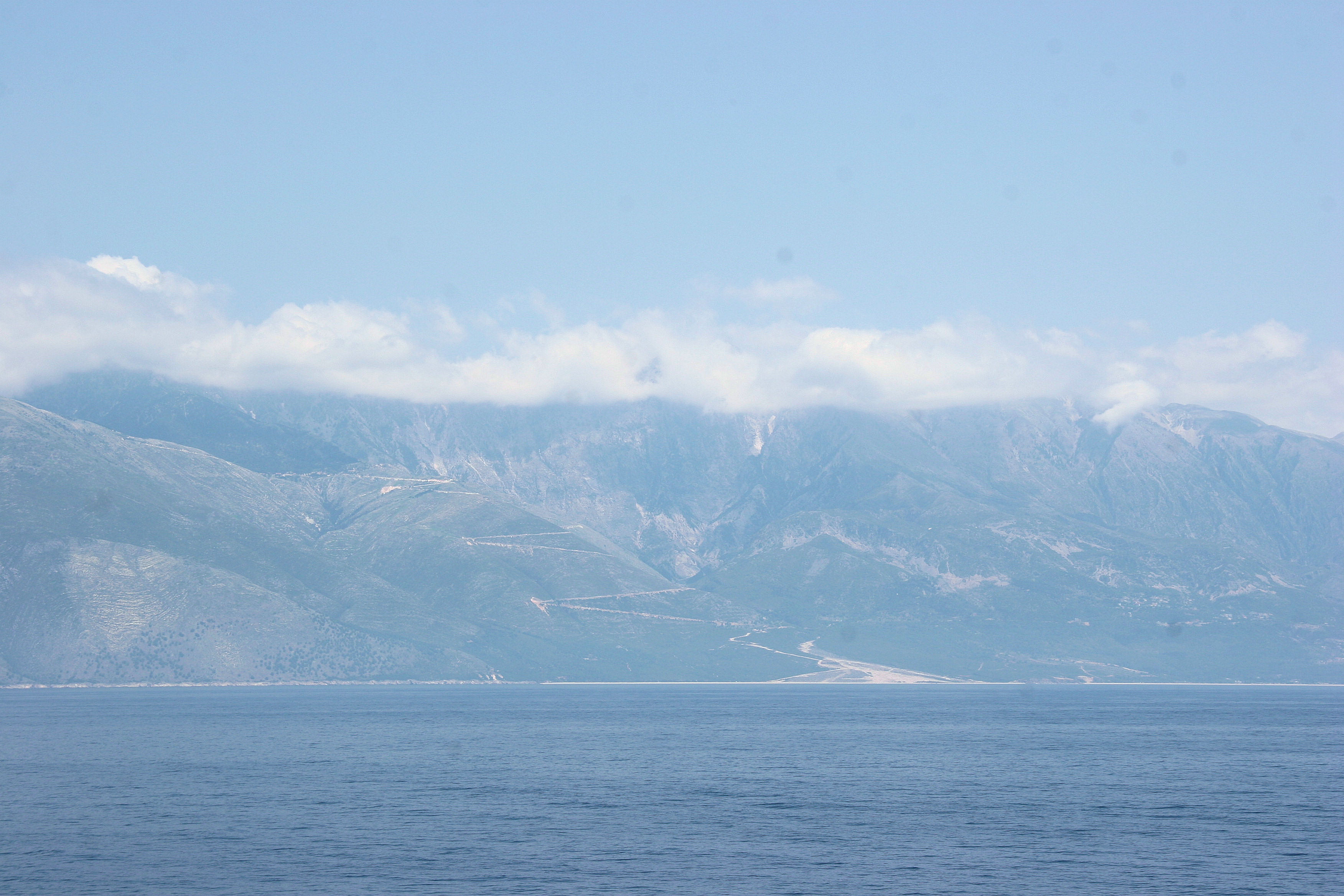
...putting my geographical knowledge to the test, that this must be Albania!
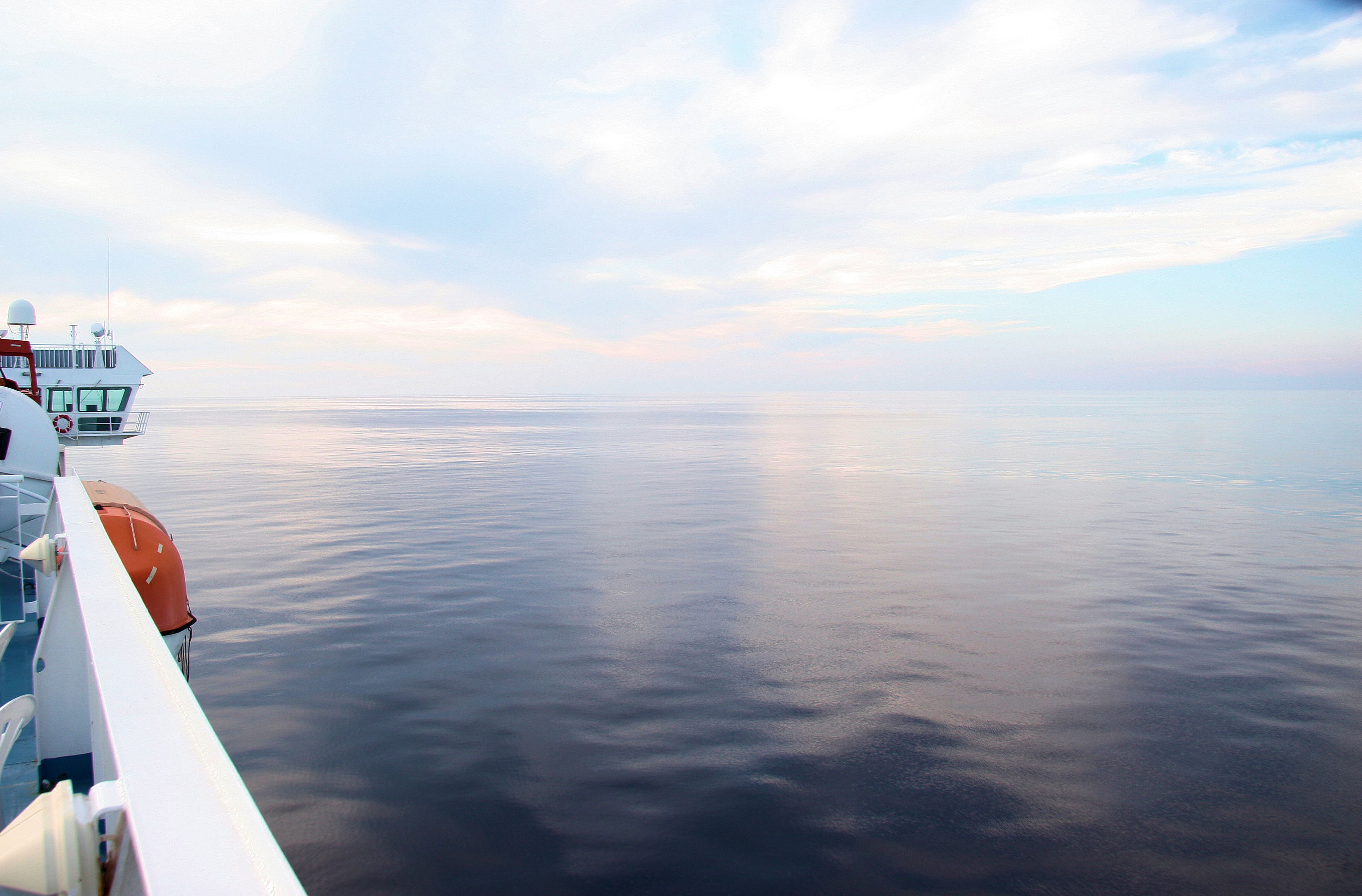
Gradually we pulled away from the land on a flat calm sea.
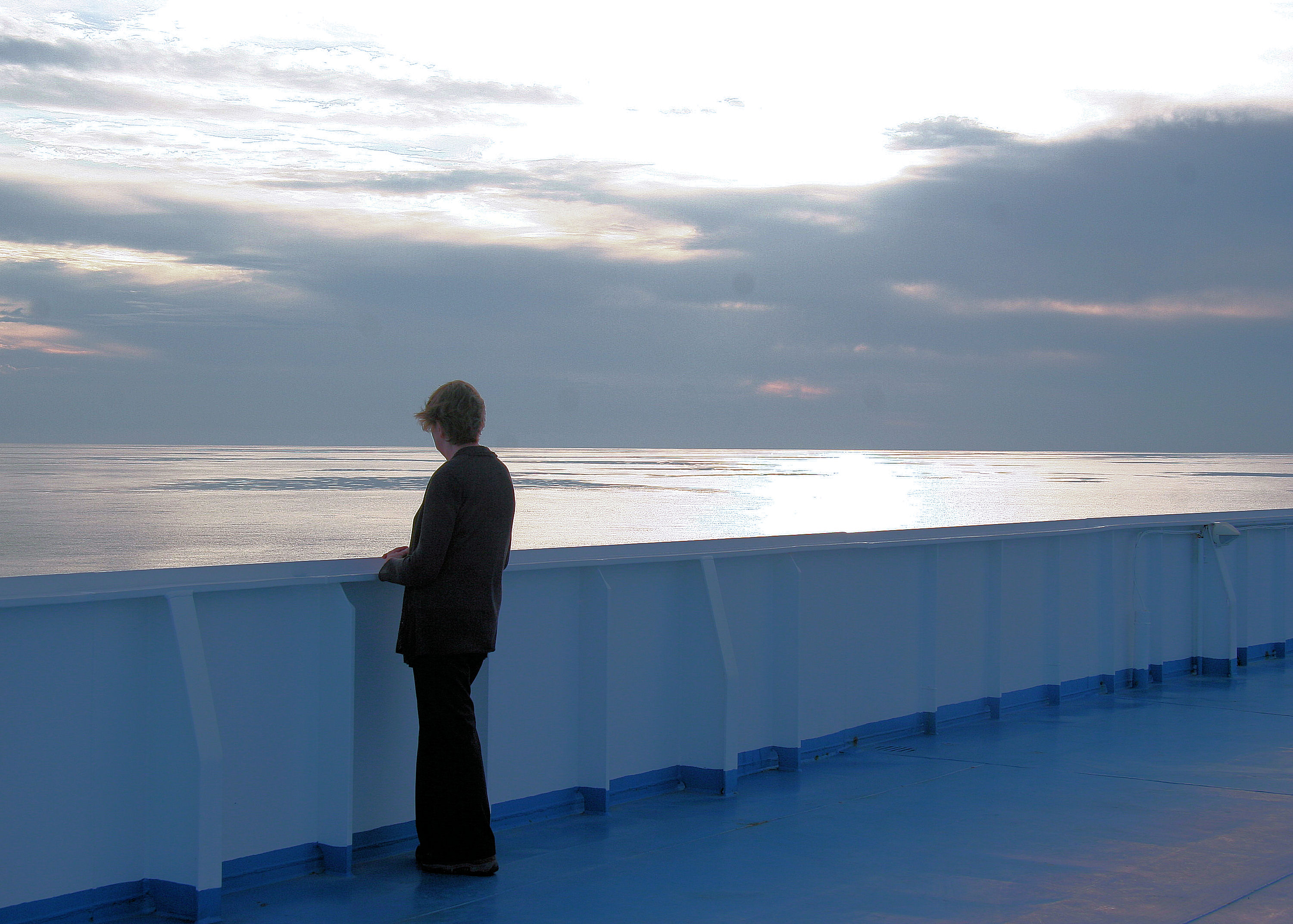
Towards the end of the day the light became interesting and I found myself finding a use for the word pellucid for the first time in my life.
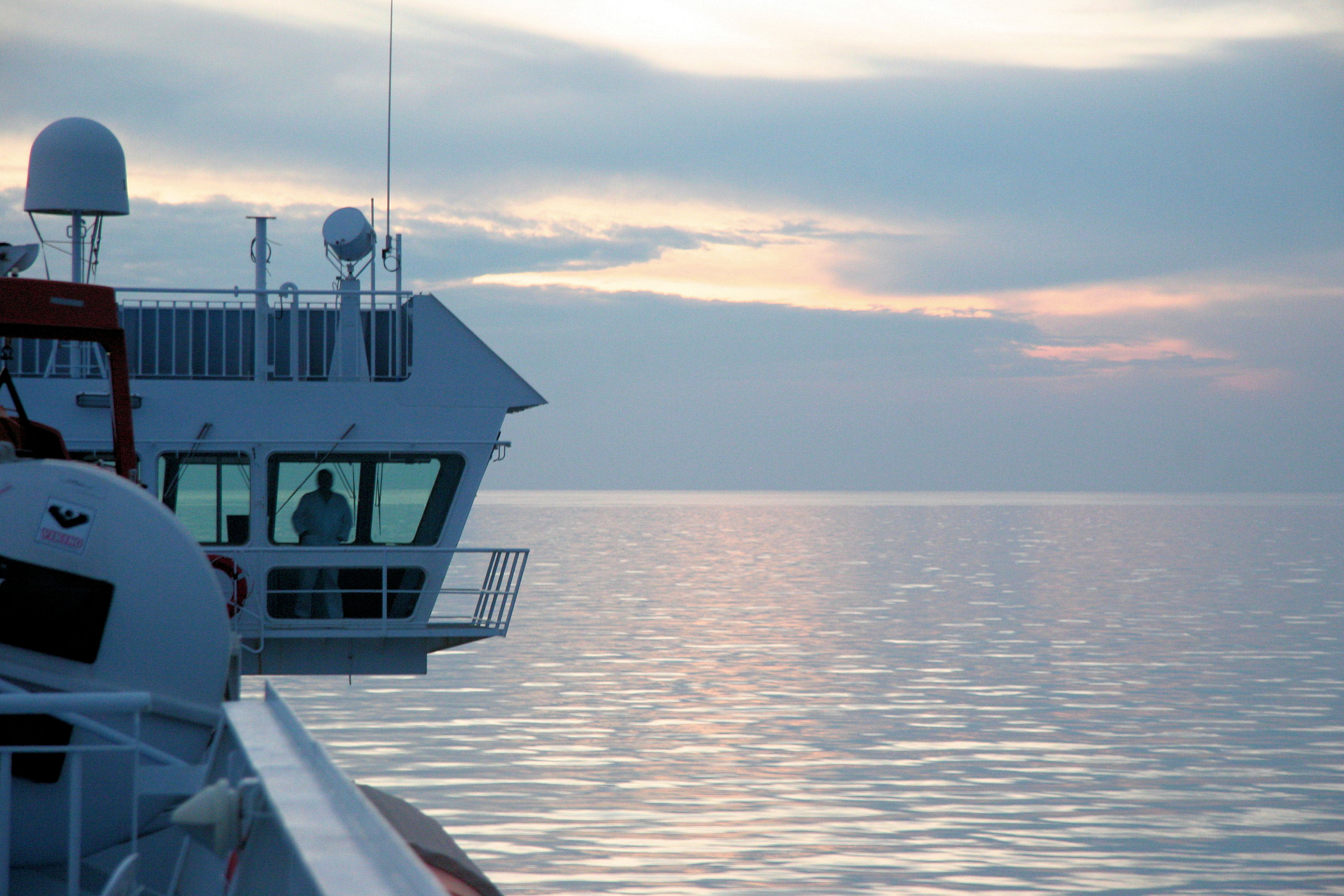
Our ferry ploughs nonstop back and forth between Patras and Venice and has to run to to a schedule. If it is running late it can catch up some of the time by sailing a bit faster and turning round more quickly.
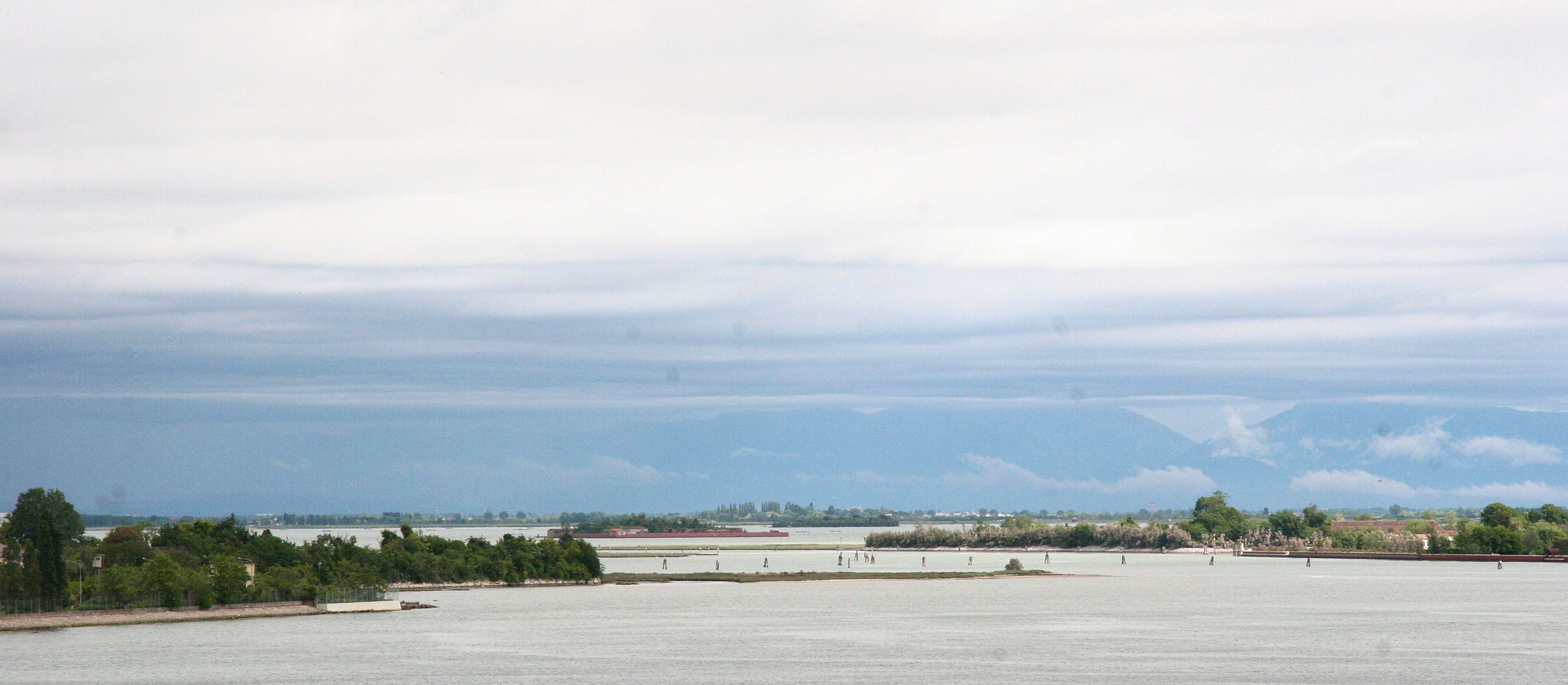
Next morning we were only about three hours late as we began the approach to the Venice Lagoon.
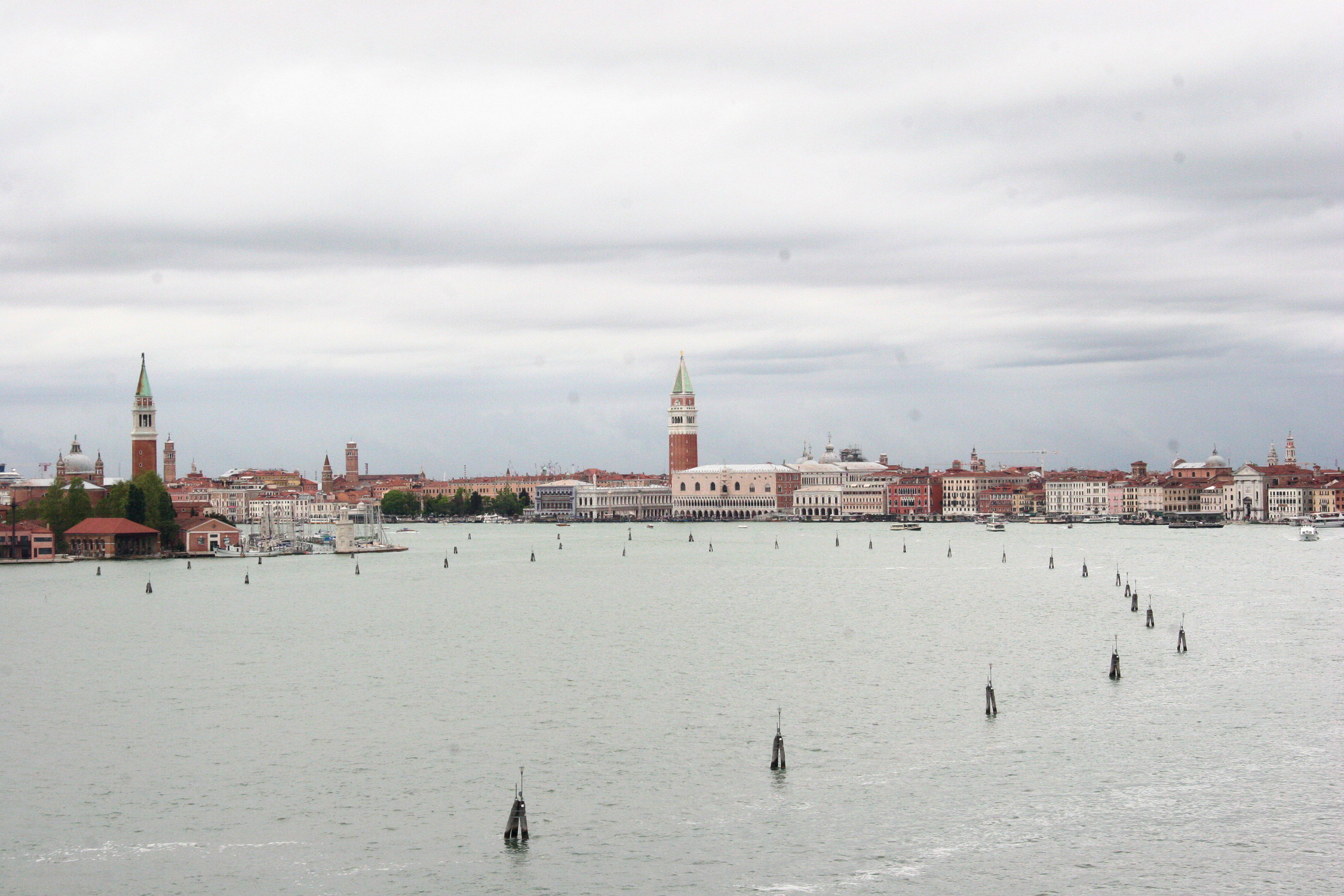
The channel to the terminal took us very slowly past familiar Venice landmarks.
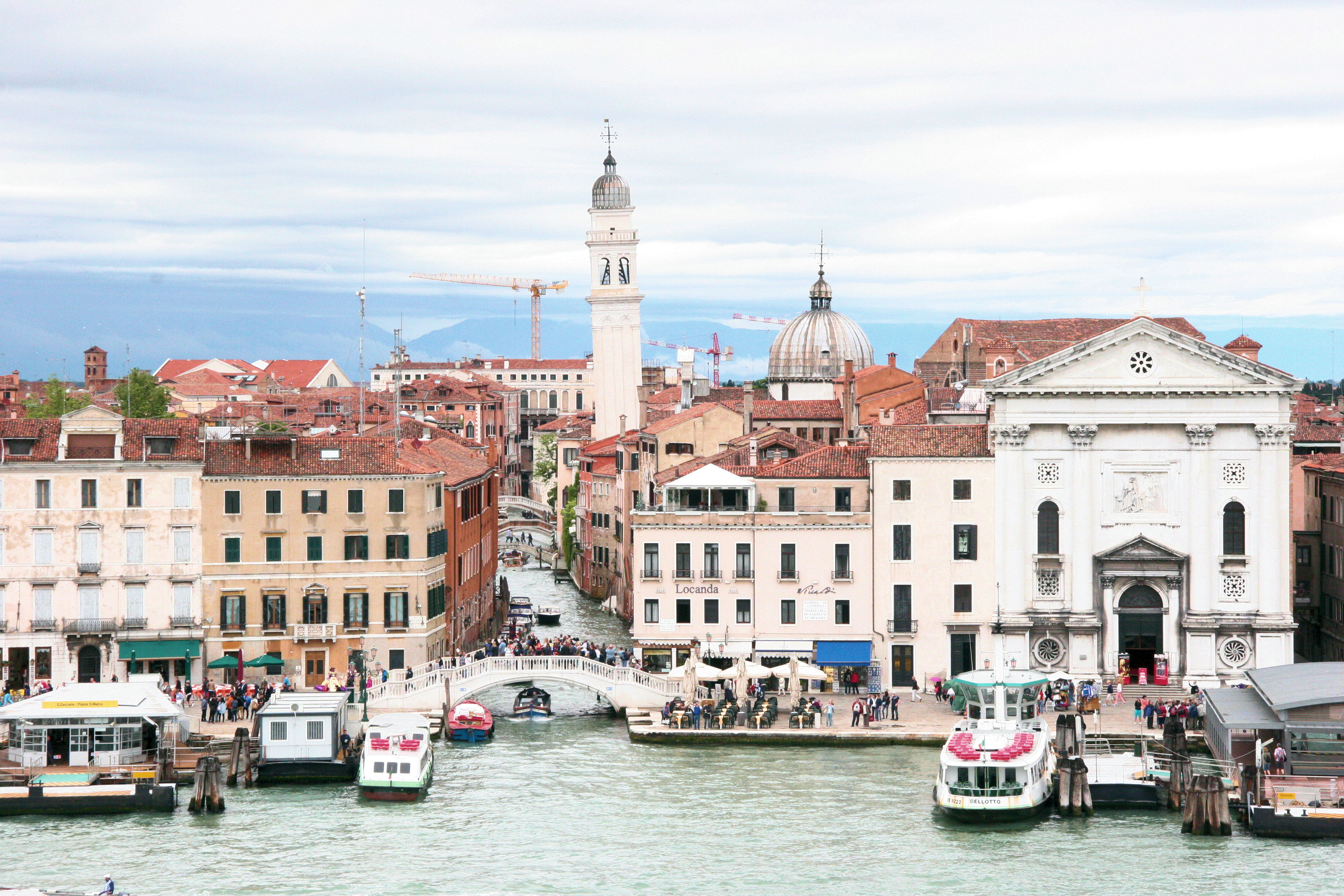
Looking down from our high privileged position was a relaxing way of enjoying the sights.
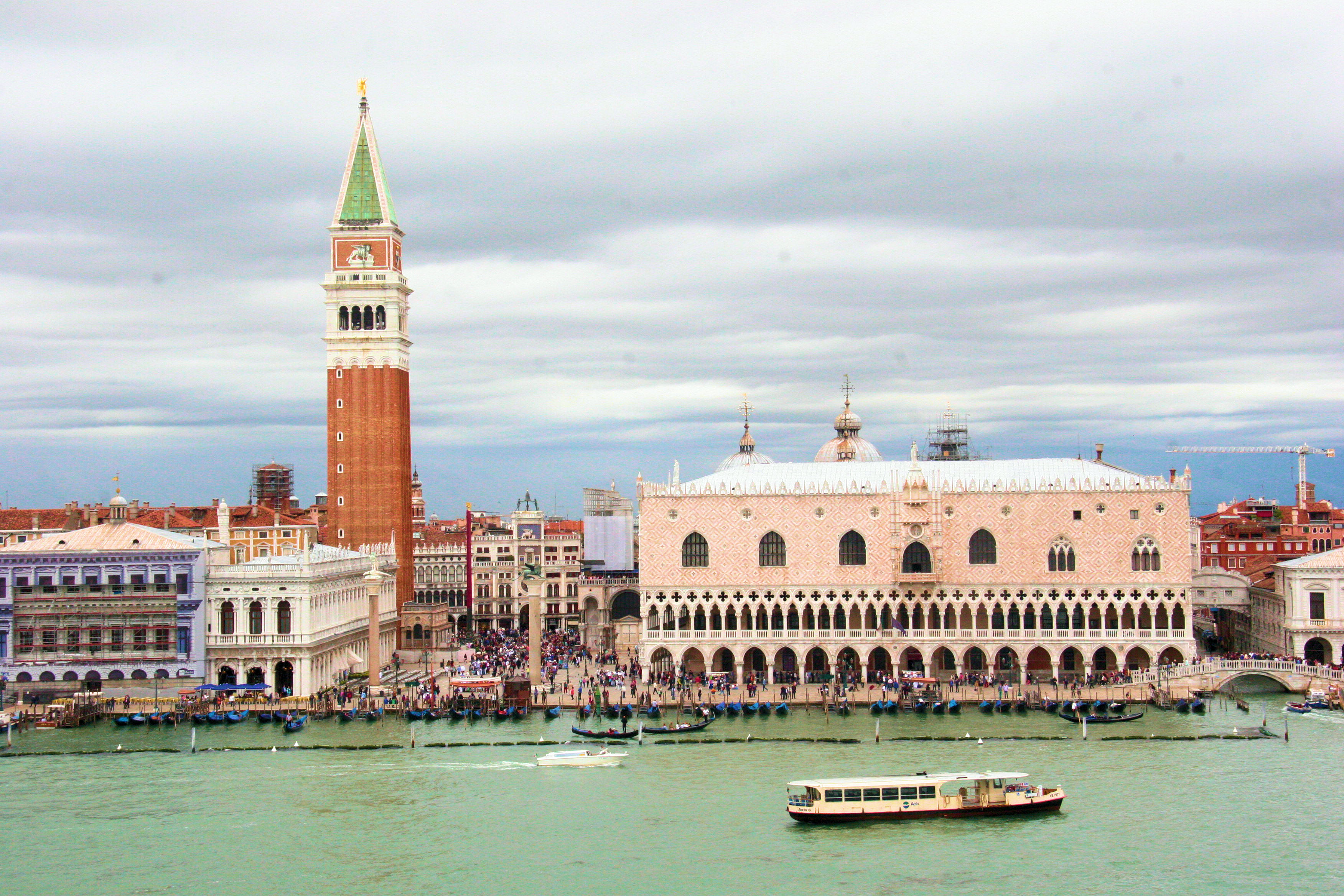
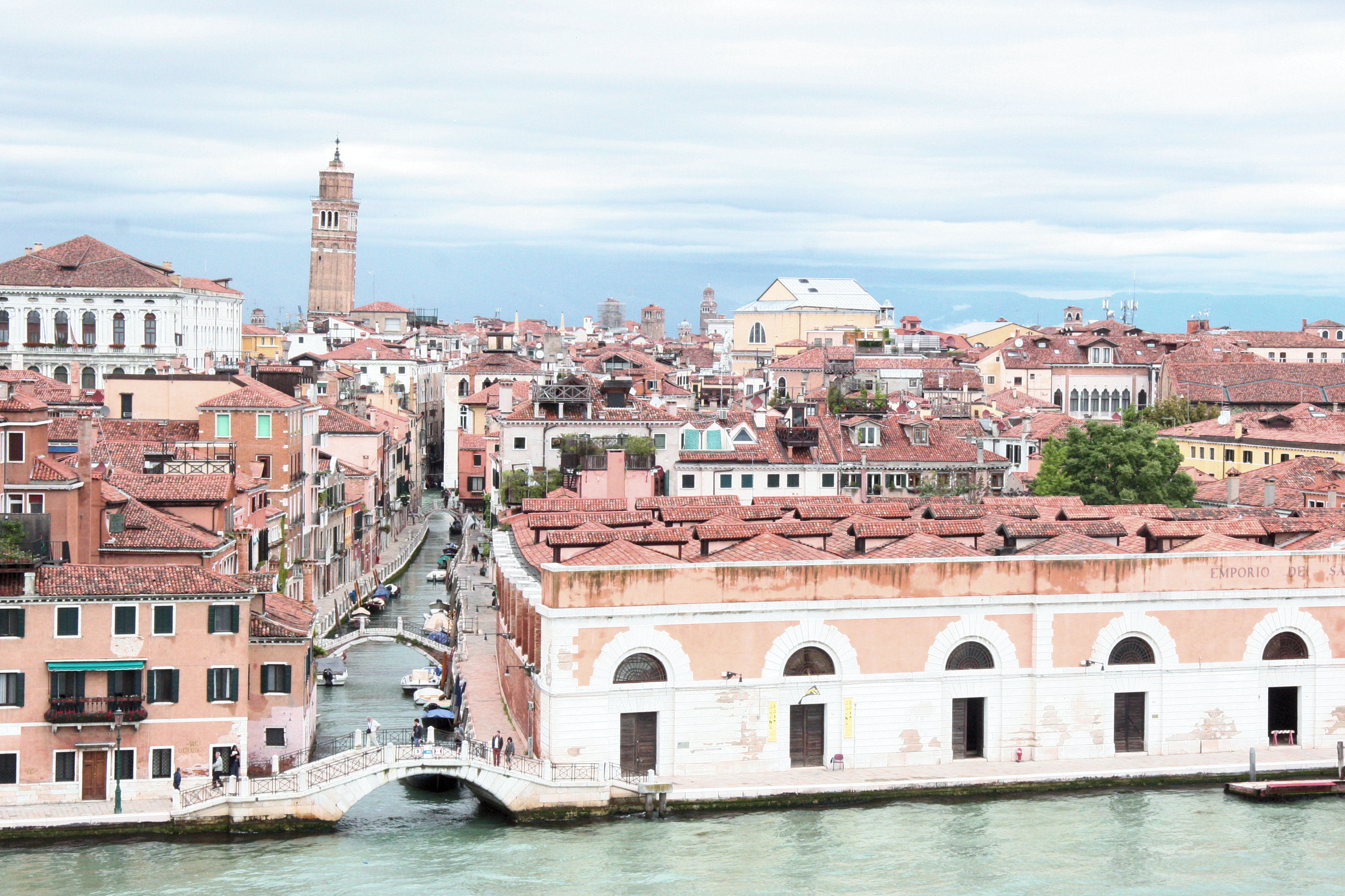
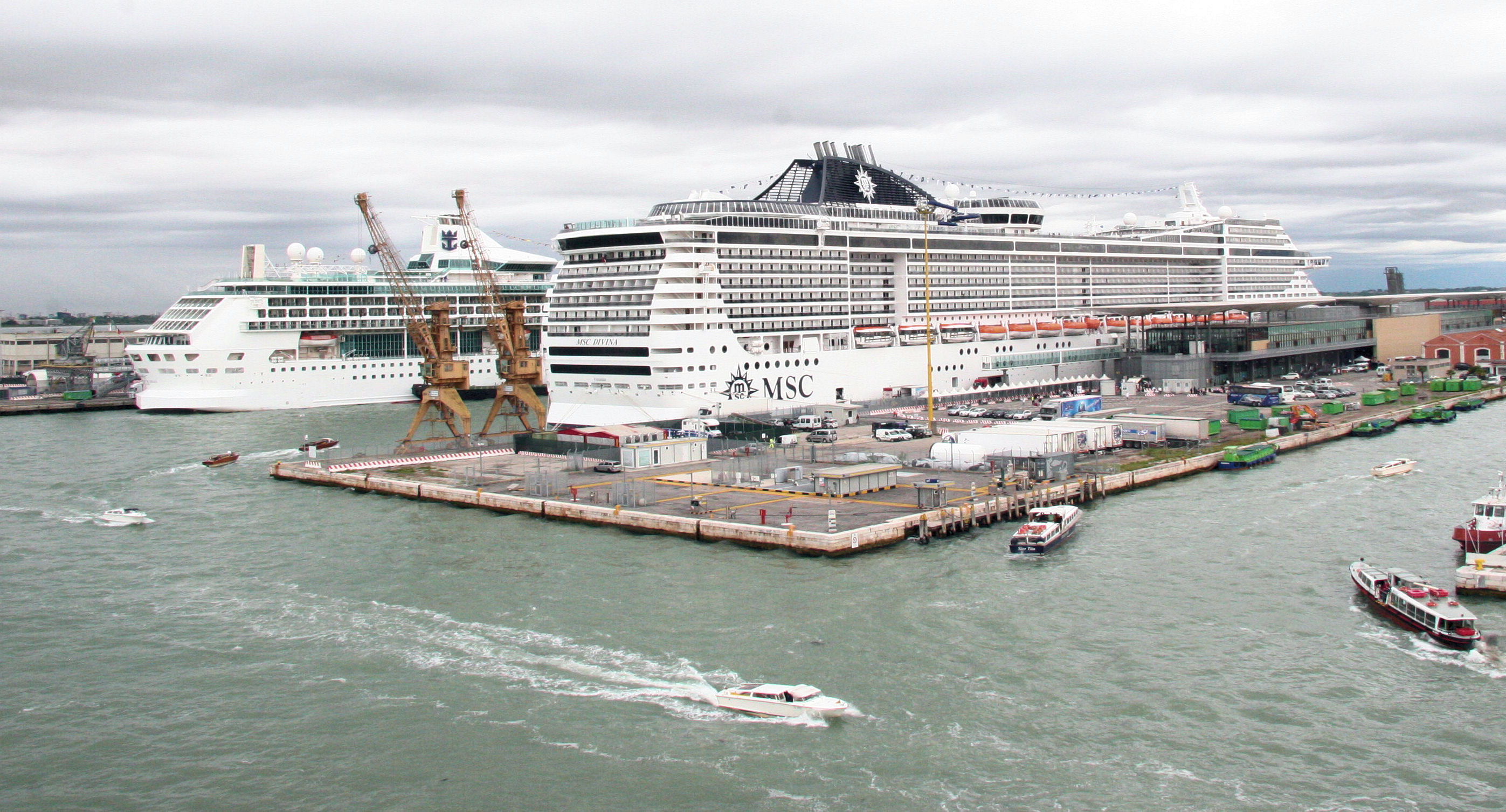
Venice is always crowded of course, but as we approached the commercial port we could see contributory reasons why it was so.
Most passengers on our ferry drove off in a car. A small group of foot passengers were directed to a minibus which drove us about half a mile across the working port to the dock gates. Here we were left to find our own way on foot. Like us, most were heading for the railway station about a mile away. This was not a pleasant walk, dragging suitcases. It was hot and muggy, there were main roads to negotiate and being Venice, it was very busy.
With a few hundred yards to go a dreadful chill swept over me. I touched my right shoulder where I should have felt the strap of a backpack. It was not there! It was still in the minibus! This was not any old backpack, perhaps containing a toilet bag, a change of shirt and a packet of sandwiches. This one contained our passports and all the rail tickets that would take us through Venice, Munich, the sleeper to Frankfurt, Brussels, Eurostar to London and Kings Cross to Edinburgh. Without it we were completely stuck.
LSW remained calm, perhaps reserving the recriminations for a later time when the situation had become clearer and they would be more thoroughly rehearsed. She suggested that she would stay with the luggage while I tried to retrieve the backpack. This was the lowest point - trying to run back to the dock gates, dodging round ambling tourists and waiting impatiently to cross busy roads. Within minutes I was breathless, overheating and drenched with sweat. "What do I do when I get to the dock gates?" I asked myself and could think of no sensible answer. How could I track down a minibus in the teeming confusion of Venice when I couldn't even remember what colour it was.
Although forty minutes had passed since I had last seen it, the minibus was still there! The backpack was still where I had placed it on the luggage rack. The driver, somewhat nonplussed by my hug, had been taking a break before his next duty. I returned, more slowly but in triumph to LSW, who had been enduring her own unpleasant period of anxiety which had lasted longer than mine. We both felt the most enormous surge of relief. The "might have beens" still occasionally jerk me awake in a panic at night.
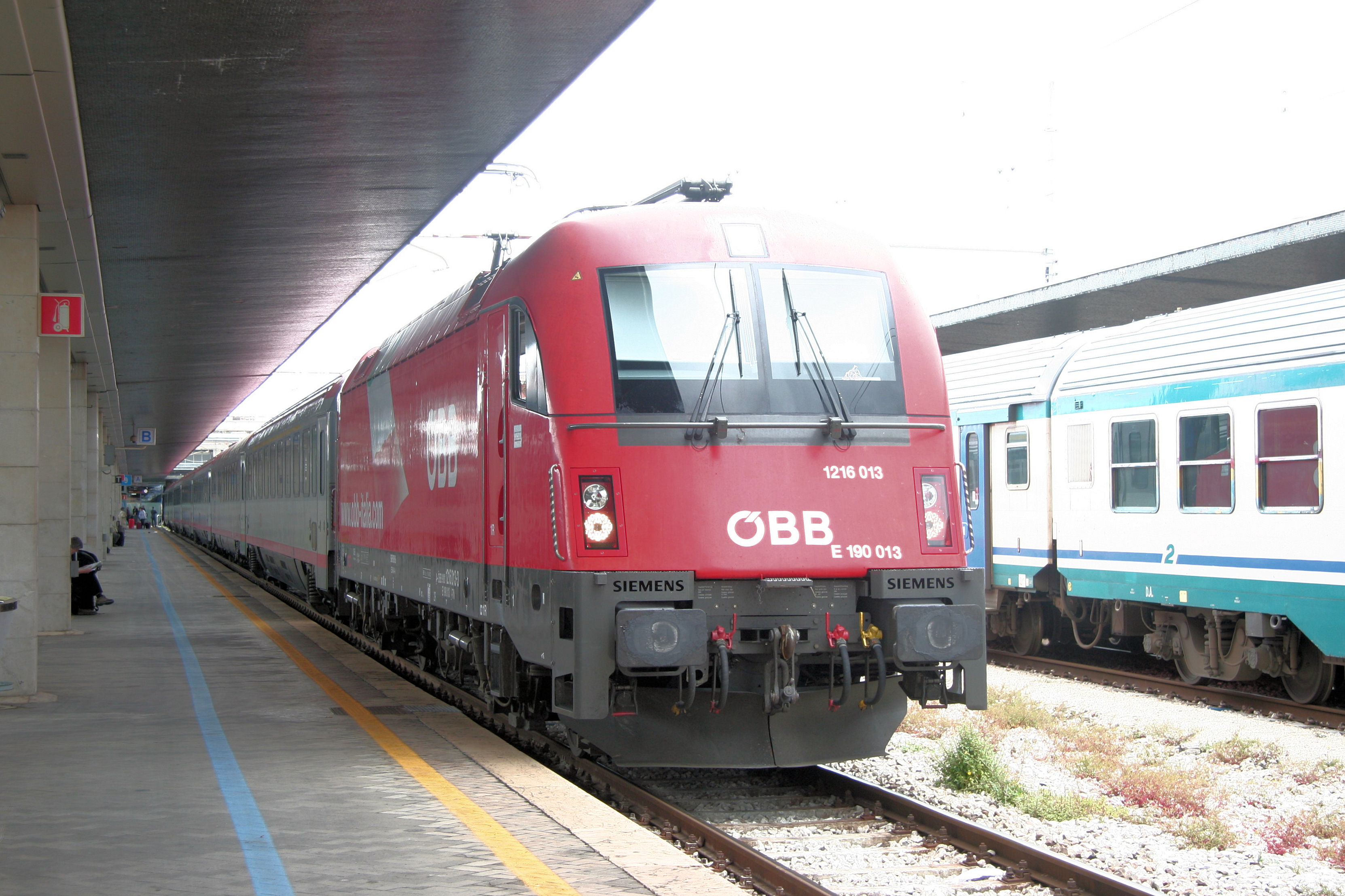
We did not feel like putting ourselves through any more stress, like looking for a left luggage facility or fighting through the Venice crowds. We were content to sit on the platform for two hours, eating sandwiches and guarding our train until it was time to board it. The rest of the journey went very smoothly. Twenty four hours after our alfresco lunch we were opening our front door. But for one traumatic hour, it had been a wonderful trip.
